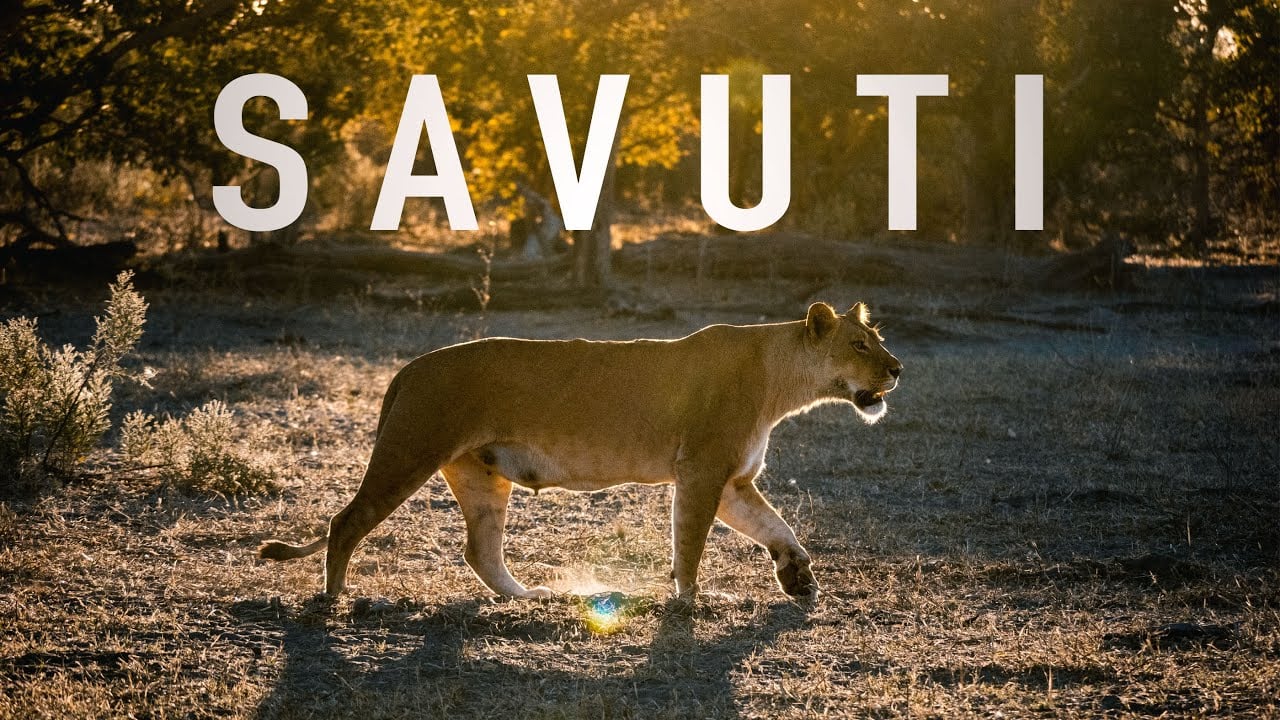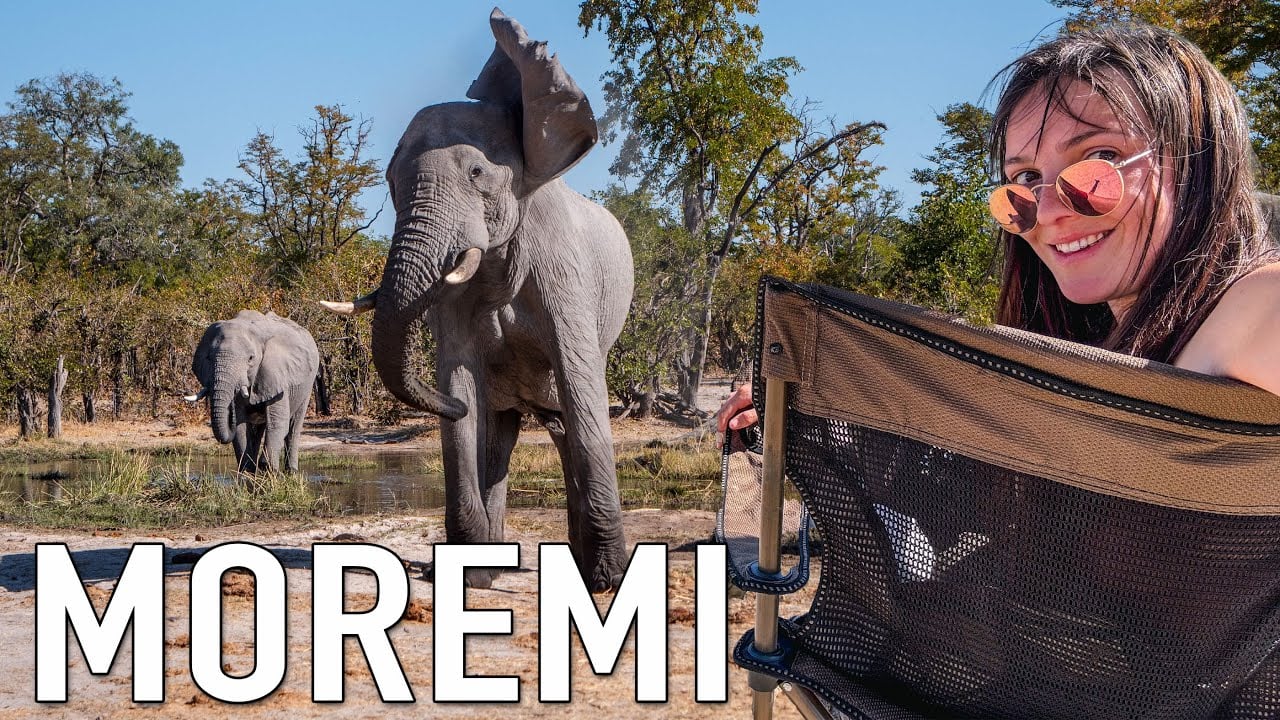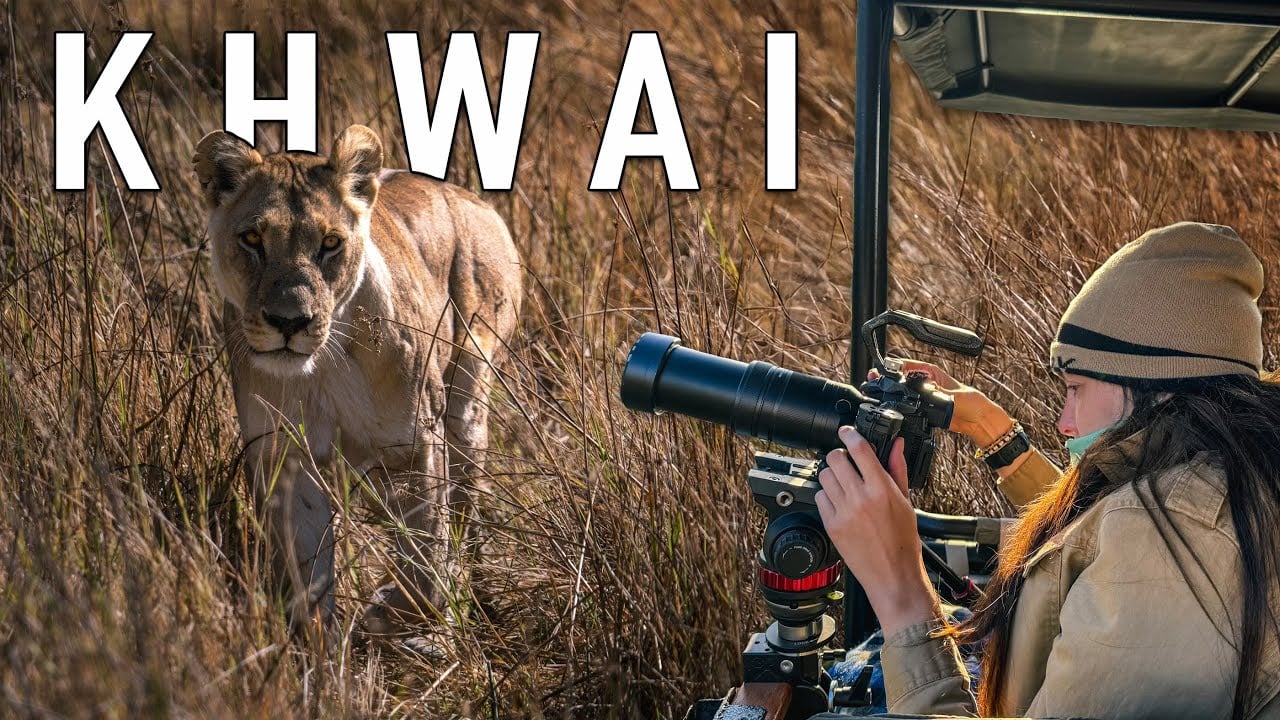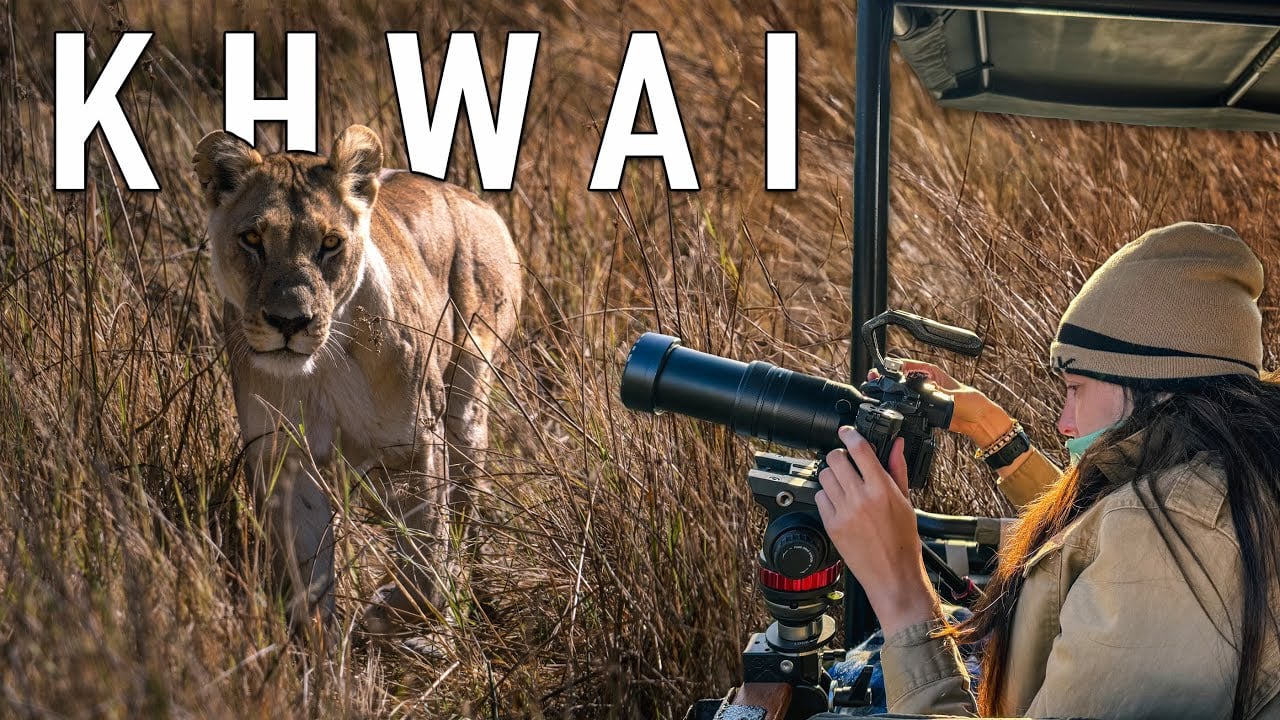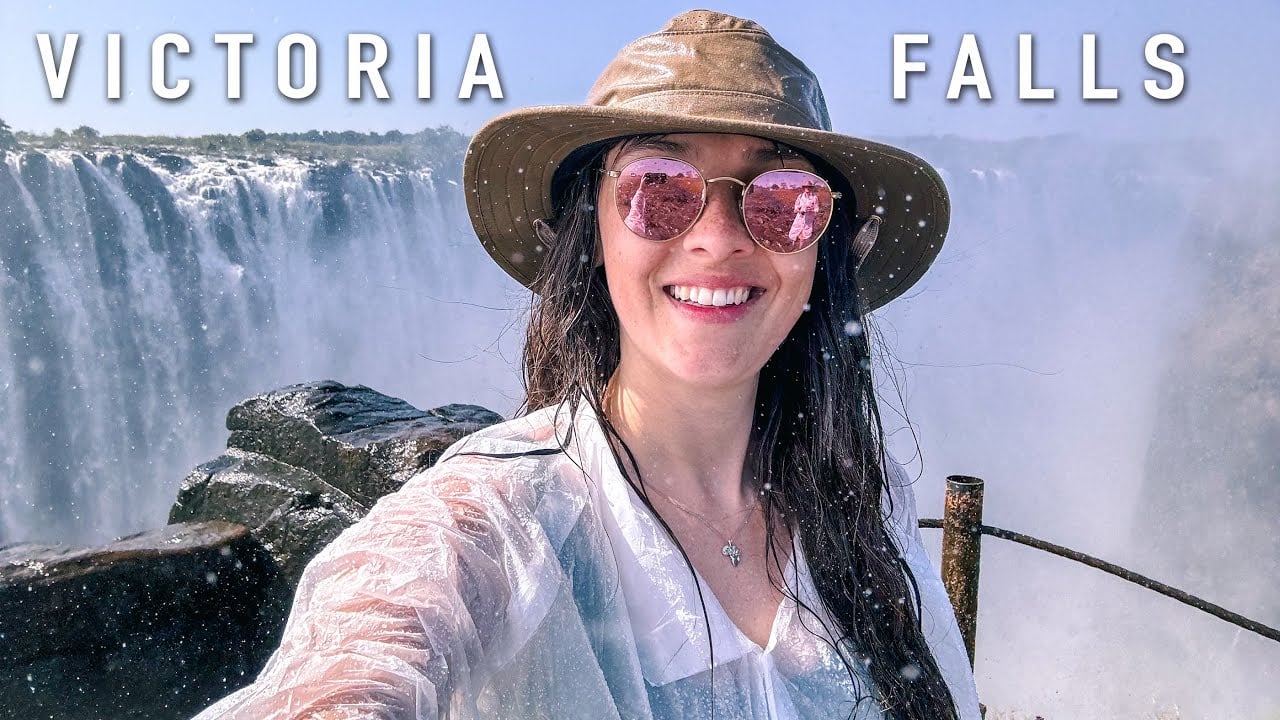Even though I’ve explored many of the most pristine wildlife sanctuaries in Africa, nothing I’ve ever seen before could have prepared me for the natural wonders of Botswana!
Nestled in the heart of southern Africa, this landlocked country boasts an incredible diversity of ecosystems – from the lush waterways of the Okavango Delta and the teeming Chobe Game Reserves, to the stark beauty of the Central Kalahari Game Reserve.
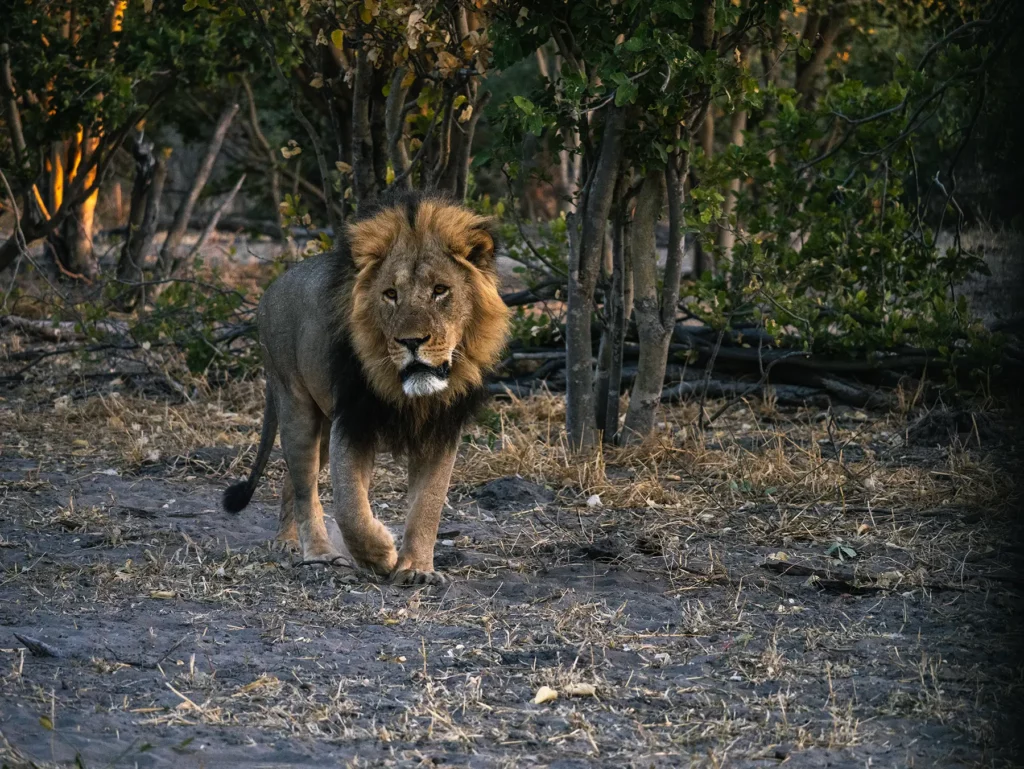
I’ve had some unforgettable experiences in Botswana. It’s here that my great safari wish came true and I witnessed a pack of playful wild dog pups jostling outside their den.
I also had a heart-stopping close encounter with an enormous crocodile, and caught my first glimpse of a tiny hippopotamus calf. And that doesn’t even scratch the surface of what Botswana has to offer!
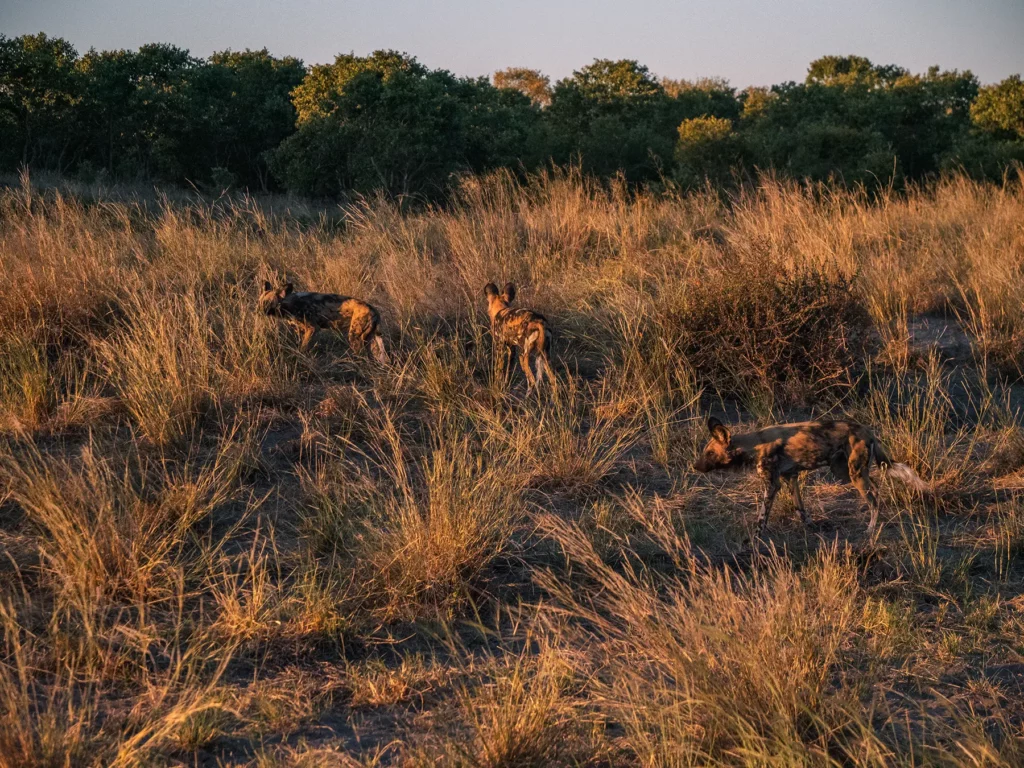
If you want to view all of Botswana diverse national parks and reserves, then a 2-week or 3-week Botswana safari itinerary allows you to travel the country at a relaxed pace.
Itineraries of 7 or 10-days, work well with a more regional focus and can still provide an amazing safari experience.
In this article, I share my two favourite 7-day Botswana safari itineraries in detail, so that you can embark on your own adventure.
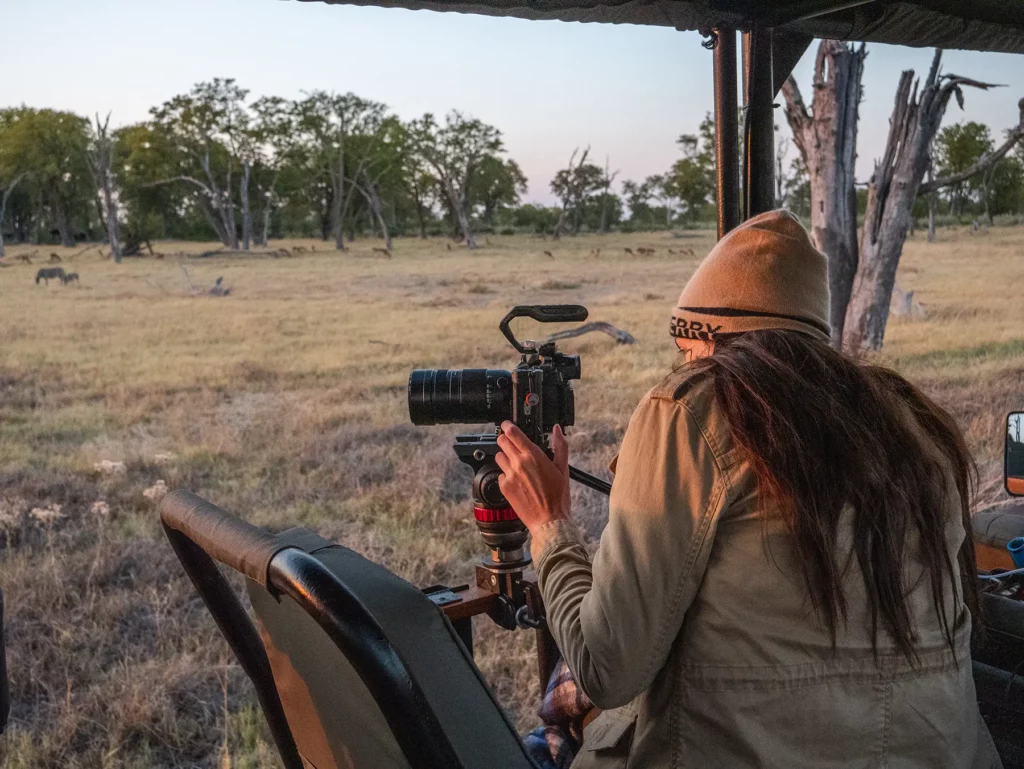
In this guide, I’m going to dive into two of the ultimate 7-day Botswana itineraries. My goal is to provide you with everything you need to know, including cost, how to find the perfect tour operator and more, so that you can plan the safari of a lifetime!
Botswana 7-Day Safari Itinerary Maps
Below are the route maps for my two recommended 7-day Botswana itineraries. We’ll cover these two itineraries in more detail in this guide.
7-Day Okavango Delta Botswana safari itinerary map.
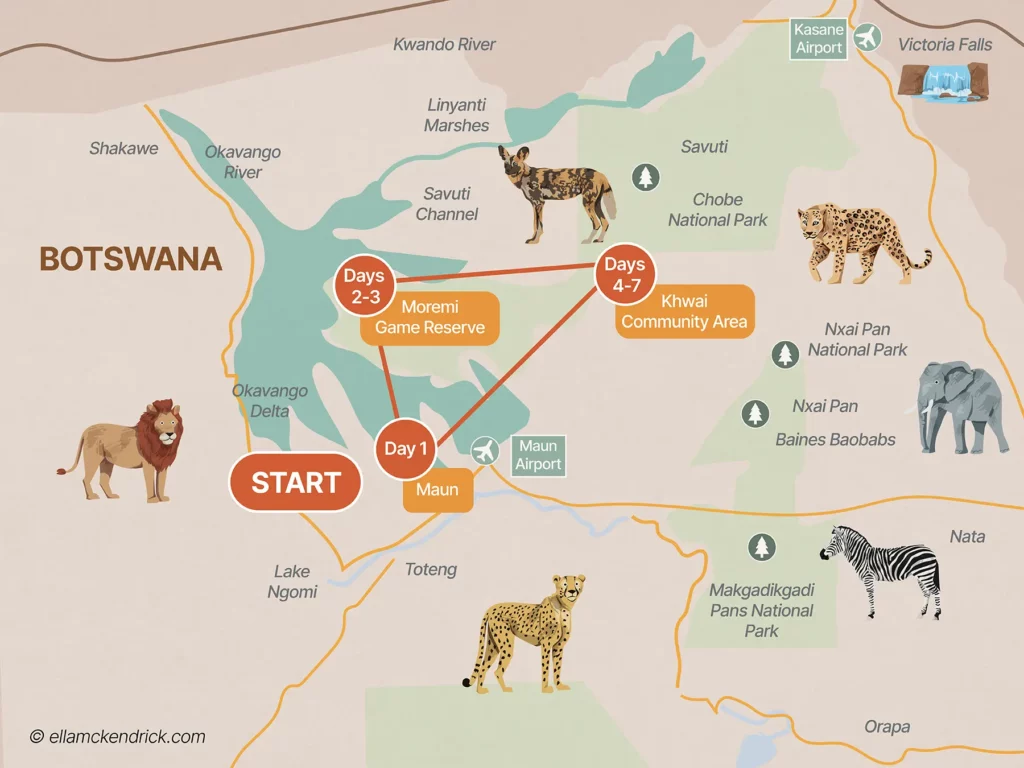
7-Day Khwai & Chobe Botswana Safari safari itinerary map
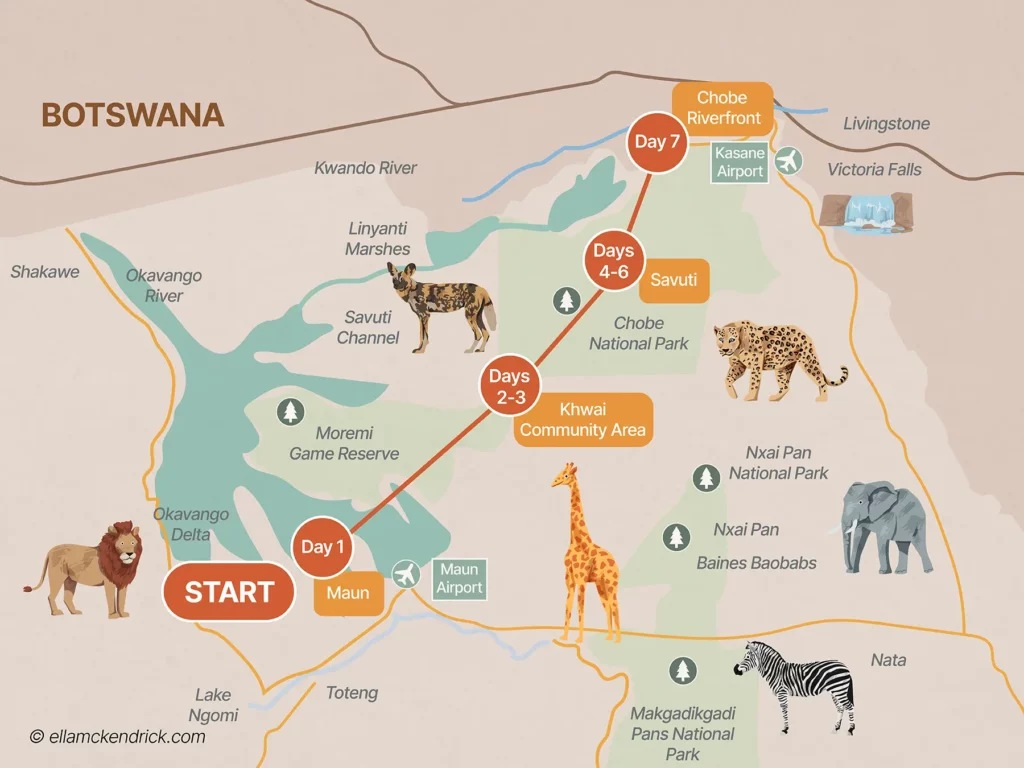
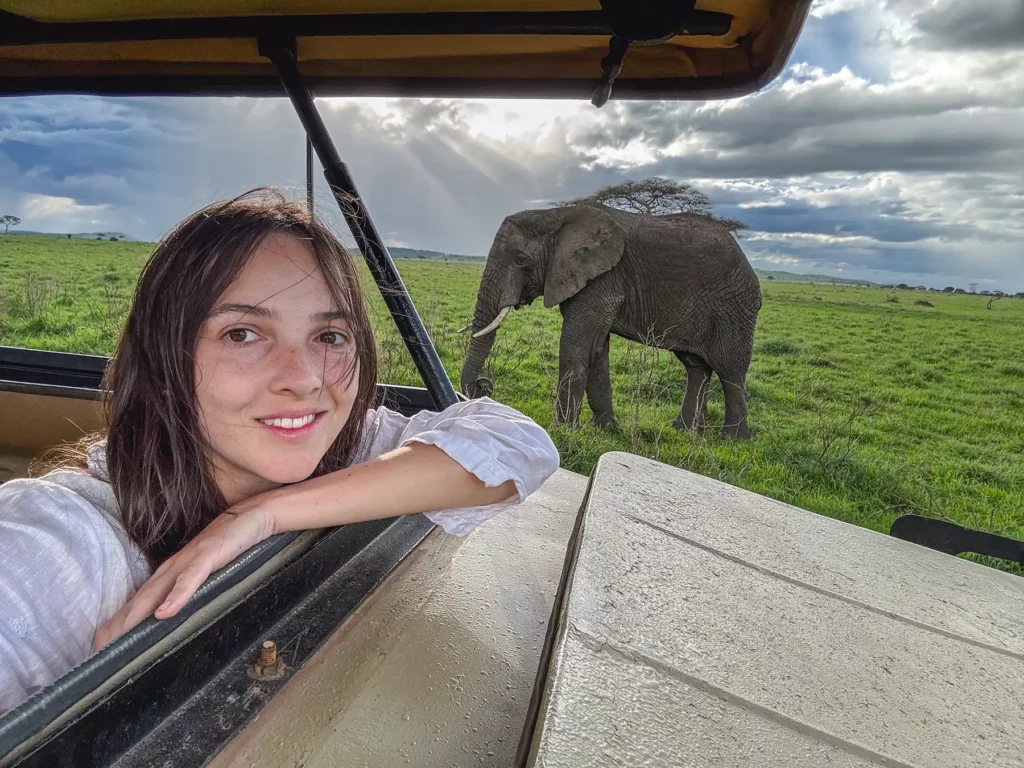
Embark on the Safari of Your Dreams
Save time and ensure an incredible safari experience by getting quotes from my recommended local safari companies
I’m here to make booking your perfect safari quick, easy and risk-free.
Join the rapidly growing tribe of over 1,000 travellers who’ve booked their dream safari using my insider tips and recommendations.

It takes under 60 seconds to fill out the form and in under 48 hours you will receive multiple, no-obligation proposals from my favourite local tour operators with glowing online reviews.
Get your free no-obligation safari quotes and my top safari tips and recommendations
In This Guide
- Why Go on Safari in Botswana?
- How to Book Your Botswana Safari
- How Much Does a Botswana Safari Cost
- Best Time to Visit Botswana
- How Long to Spend in Botswana
- Botswana Safari Logistics
- My Two Favourite 7-Day Botswana Safari Itineraries
- Final Thoughts
- Read More Guides
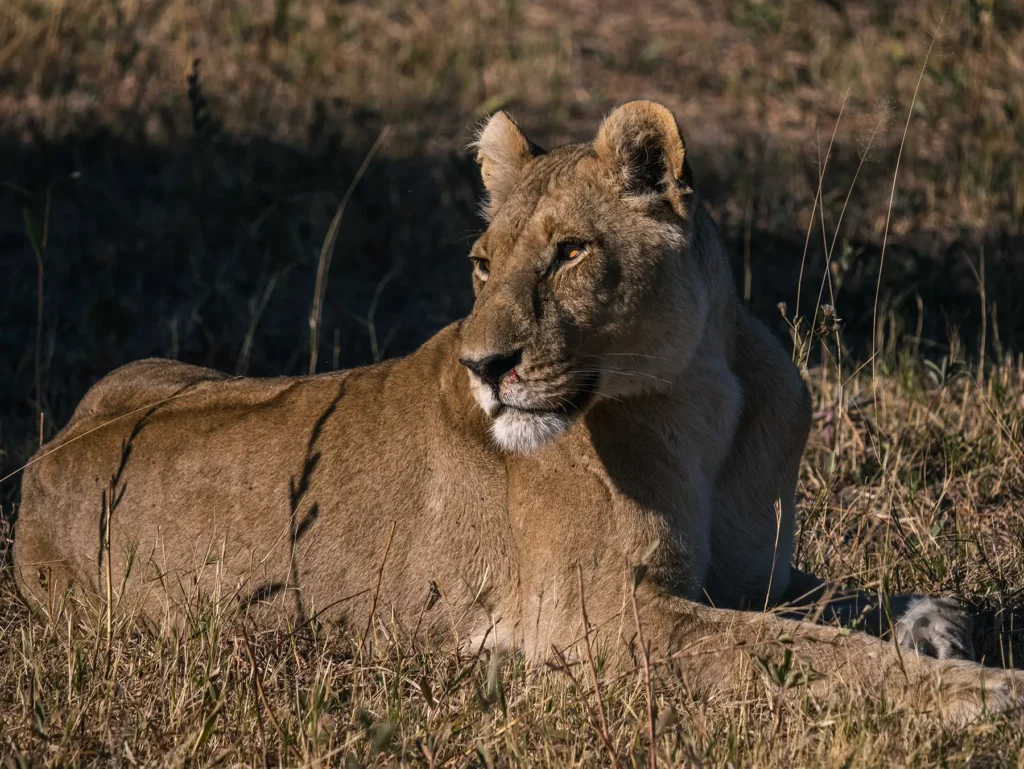
Why Go on Safari in Botswana?
Botswana is an outstanding safari destination for many reasons, which I’ll briefly cover below.
If you prefer, you can watch my Botswana experience video or, if you’re short on time, skip ahead to my two 7-day itinerary options.
Low Levels of Tourism Provide an Exclusive Experience
Thanks to its remoteness, low human population density, and relatively high costs, Botswana is probably the most exclusive safari destination in Africa.
The tourism industry operates on a low-impact, high-value model. In other words, Botswana’s parks and safari lodges receive fewer tourists than in other destinations in Africa, but each guest has a higher tourism spend.
As a result, Botswana is one of the more expensive destinations to visit for a safari – but you certainly get what you pay for! Accommodation options are top notch, and the wildlife is truly spectacular.
The careful management of visitor numbers and environmentally-friendly lodges ensures minimal impact on this pristine ecosystem. Plants and animals continue their ancient rhythms undisturbed, allowing travellers to experience nature in its purest form.
The map below gives you an overview of Botswana’s key national parks and reserves.
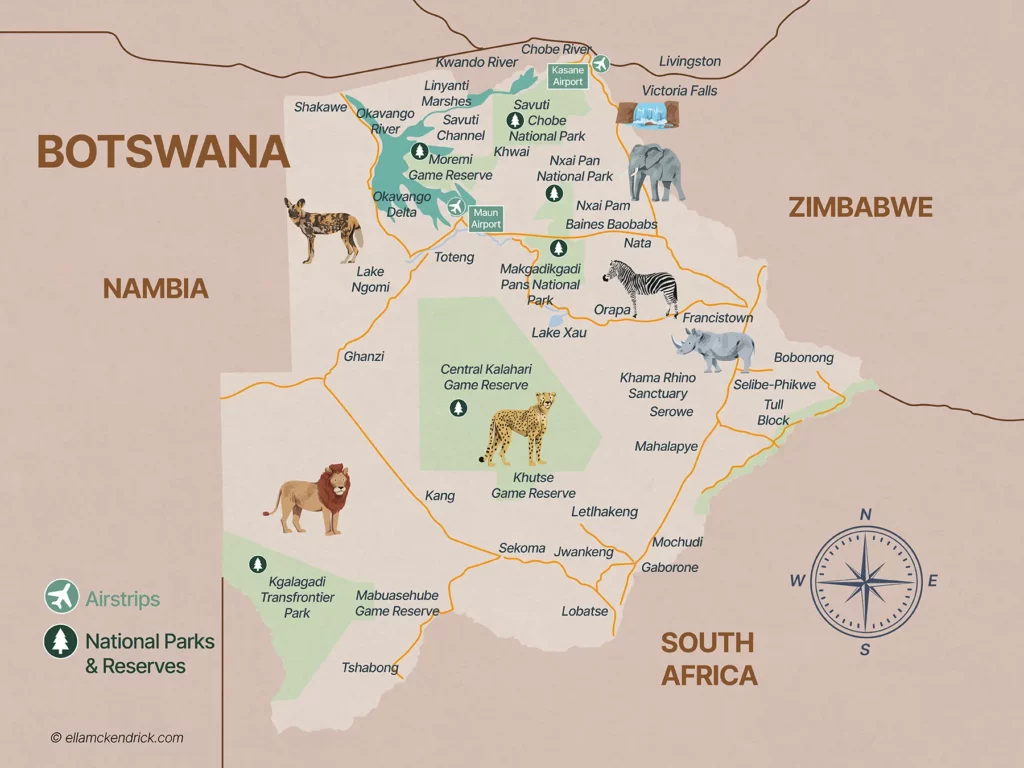
Dense Wildlife
Roughly 40% of Botswana is protected wilderness with no fences separating reserves. This means that wildlife can roam freely throughout the country, which is the perfect condition for animal populations to thrive.
According to the most recent count (the Great Elephant Census, published in 2016) Botswana’s elephant population is over 130 000, equating to roughly 35% of the world’s population of African elephants! It is also one of the best places to see the critically endangered African wild dog.
Visitors may also spot some of Africa’s rarer antelope species, like the roan, tsessebe, and red lechwe. Meanwhile, the aquatic ecosystems pulse with life – from massive hippos and crocodiles to diverse fish species, including the fierce and highly-prized tiger fish.
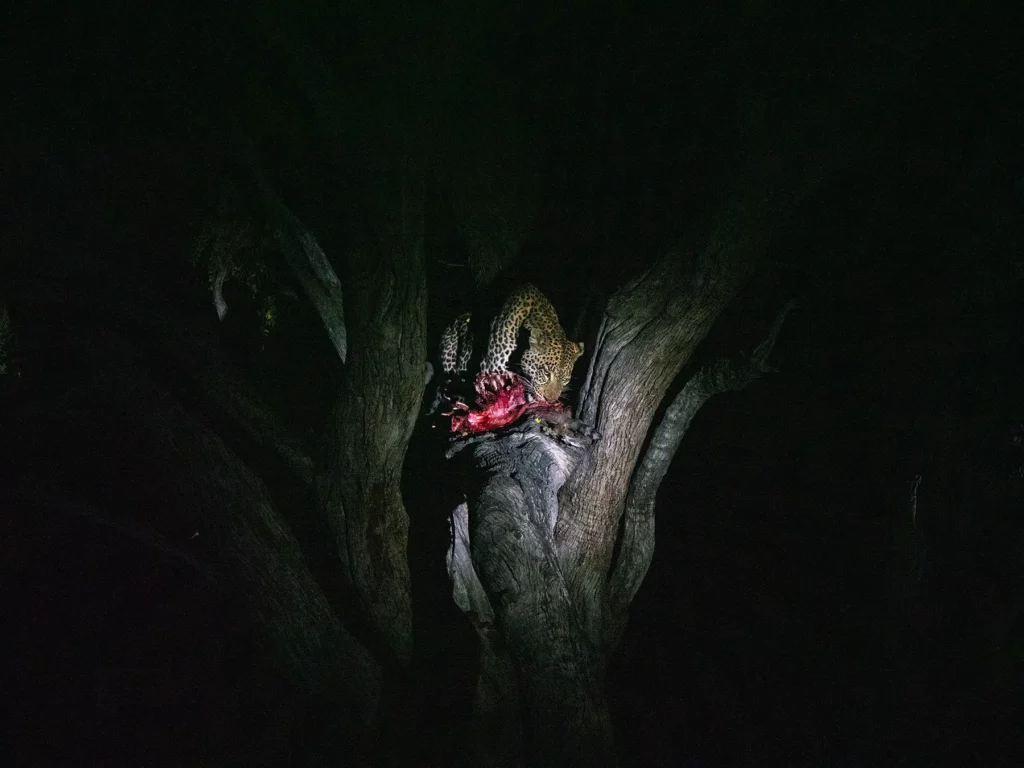
How to Book Your 7-Day Botswana Safari
Without a doubt, the easiest and most rewarding way to arrange your Botswana safari is by booking through a reputable local tour operator.
This is how I booked my Botswana safari and I had an incredible experience.
Local operators take care of every detail, from securing your accommodation to arranging permits, while providing invaluable insights into recent wildlife movements and the best viewing spots.
You can get quotes from the same local tour companies I use to organise my own trips here: Safaris By Ella
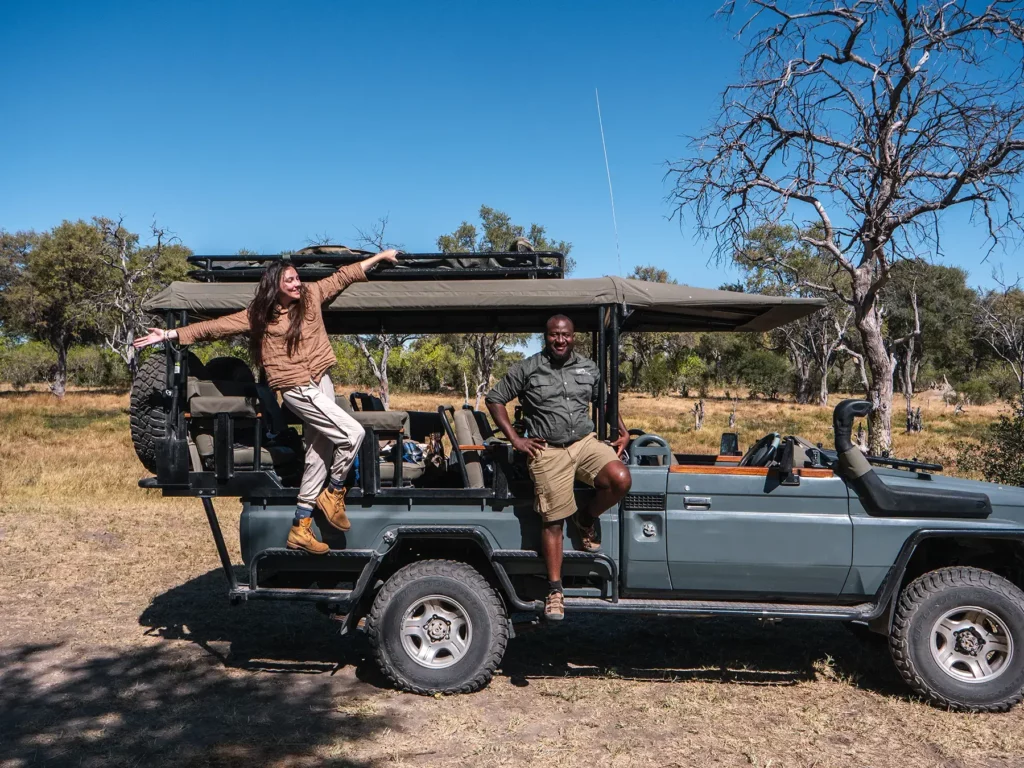
Other types of safari are available, including self-drive safaris and fly-in to hotel safaris, where you fly from lodge to lodge and each lodge offers game drives. And of course there are package holidays, where an international travel agent takes care of everything, including international flights.
The option you choose will have a large impact on the price of your safari as well as the experience itself.
Let’s take a look at the pros and cons of each option.
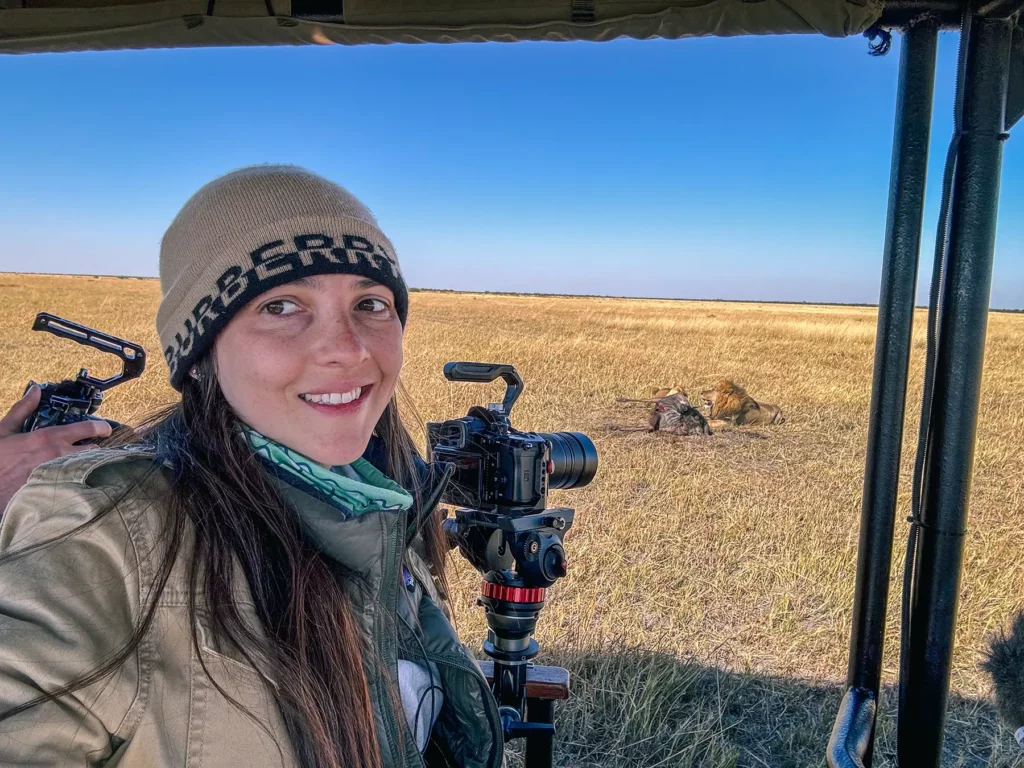
You can jump to more information on each of the booking options using the links below.
Option 3: Hotel-Provided Safaris
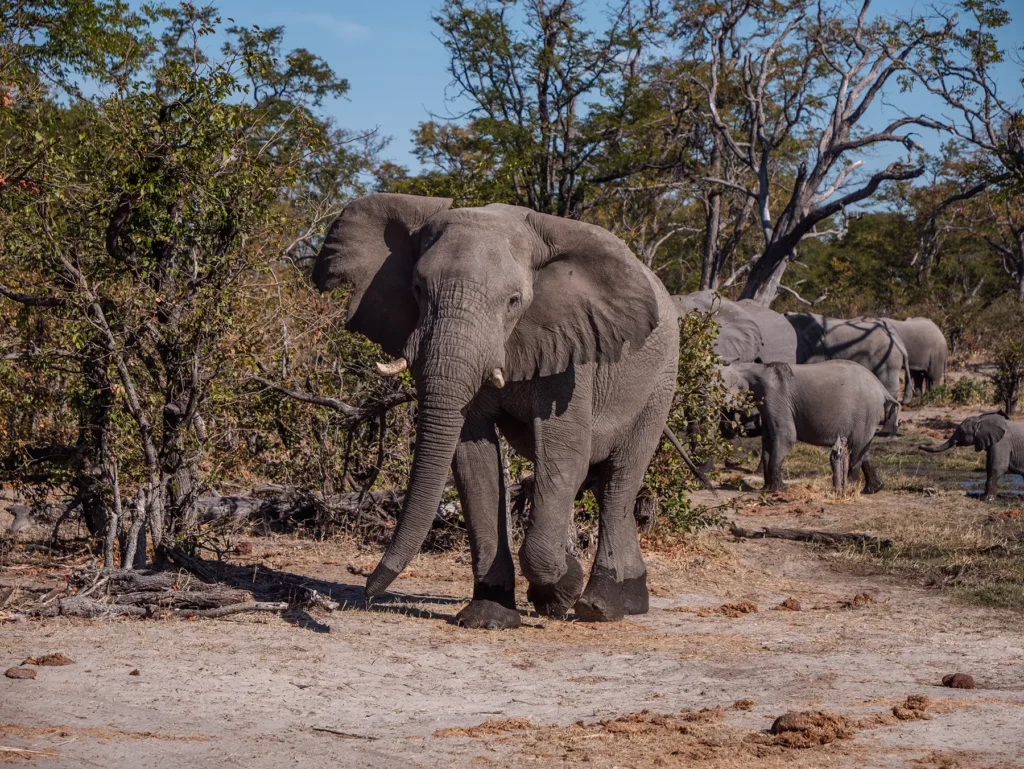
Option 1: Self-Drive Safari
A self-drive safari is a good option for the most adventurous and independent travelers, especially those on a tight budget. It’s a challenging solution, and it’s crucial that you have significant off-road driving experience if you choose this route.
Self-drive safaris in Botswana can be particularly challenging compared to other African destinations, as the terrain in places like Moremi Game Reserve and Chobe can be tough, especially during the wet season.
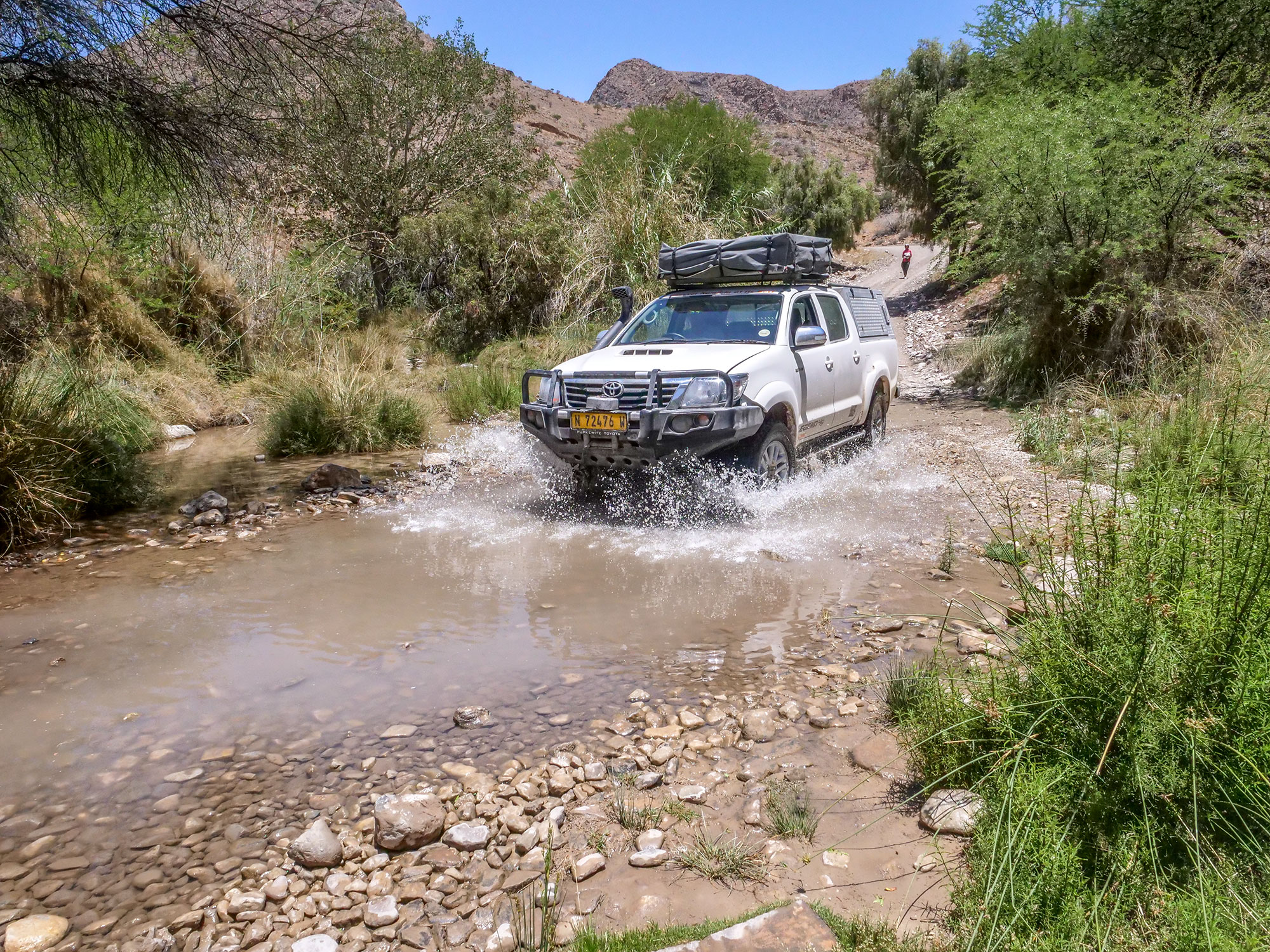
Pros of Self-Drive Safaris:
- Self-drive safaris offer complete independence and flexibility, allowing you to make spontaneous stops and schedule adjustments.
- This option is perfect for those seeking the adventure and challenge of navigating the wilderness on their own terms.
- You will save on some costs, such as 4×4 vehicles and driver guides.
Cons of Self-Drive Safaris:
- Without a professional guide, you risk missing out on the best wildlife sighting opportunities and in-depth local knowledge about the environment.
- Accommodation is limited to basic camping within parks, and setting up and taking down your camp between long drives on difficult roads can be quite tiring.
- This option requires extensive preparation and technical expertise, particularly in navigation and off-road driving.
- Your actual cost savings may prove minimal once all expenses are tallied.
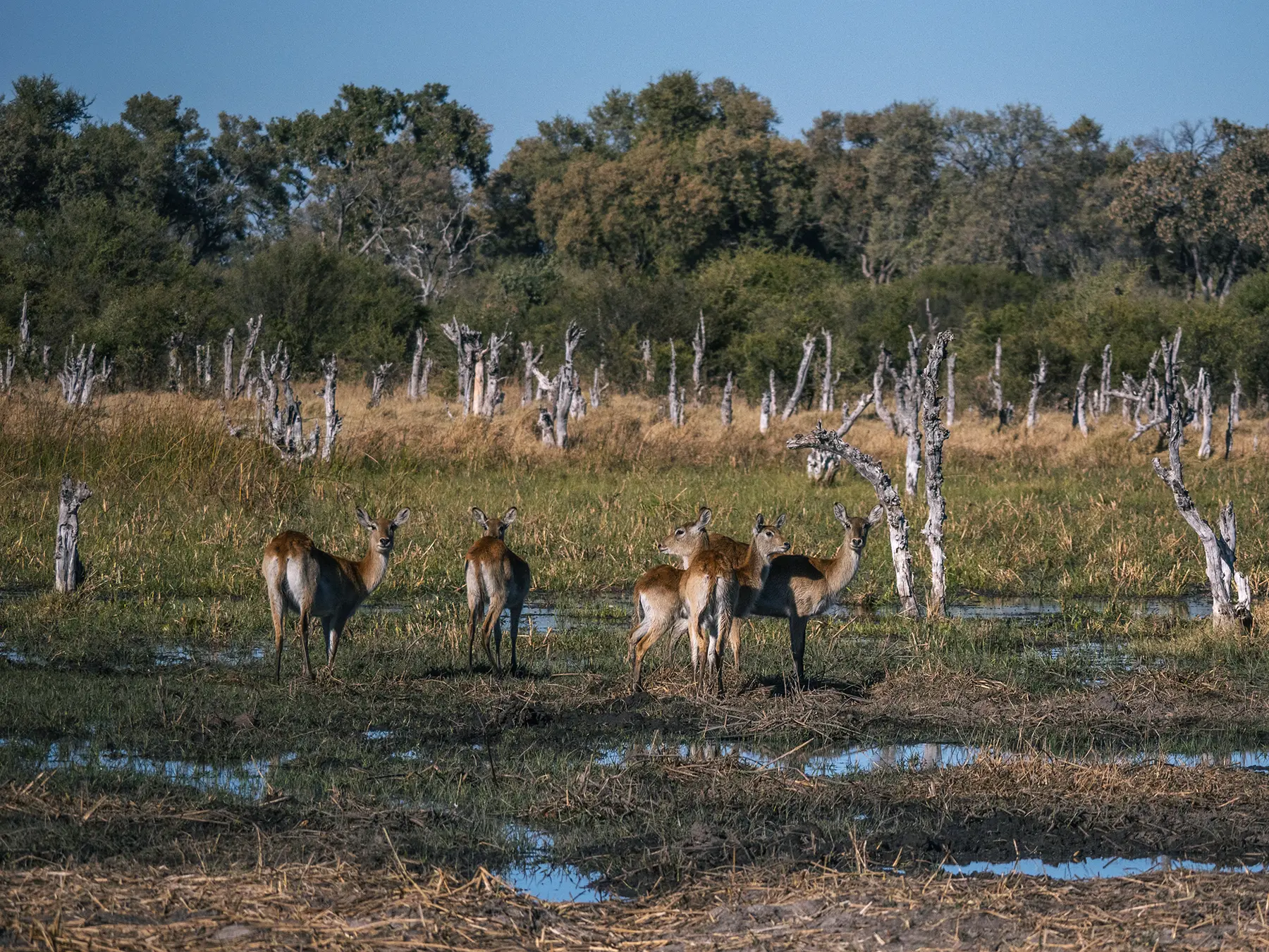
My Verdict on Self-Drive Safaris:
Based on my extensive safari experience, I’d advise most travelers to steer away from the self-drive option. While it can be viable in countries like South Africa or Namibia, where roads are well-maintained and destinations more accessible, many other African safari destinations, including Botswana, present challenges that make the modest cost savings less worthwhile.
I’ve found that the most memorable and enjoyable safari experiences come from partnering with local operators. They remove all the logistical headaches while providing expert guides who know exactly where and when to find wildlife. If your budget allows, a professionally guided safari combines comfort, safety, and maximum wildlife viewing opportunities.
How to Book a DIY Self-Drive Tanzania Safari
- Option 1: Comparison sites which provide multiple quotes from verified suppliers such as Safaris By Ella. Make sure to write you want to self drive in the notes when requesting a quote. (This is a hybrid approach where you’ll drive yourself but they will arrange everything)
- Option 2: Research and book all elements of the trip yourself using Google and online travel agents.
Join the rapidly growing tribe of over 1,000 travellers who’ve booked their dream safari using my insider tips and recommendations. Get your free quotes and my top tips and recommendations now.
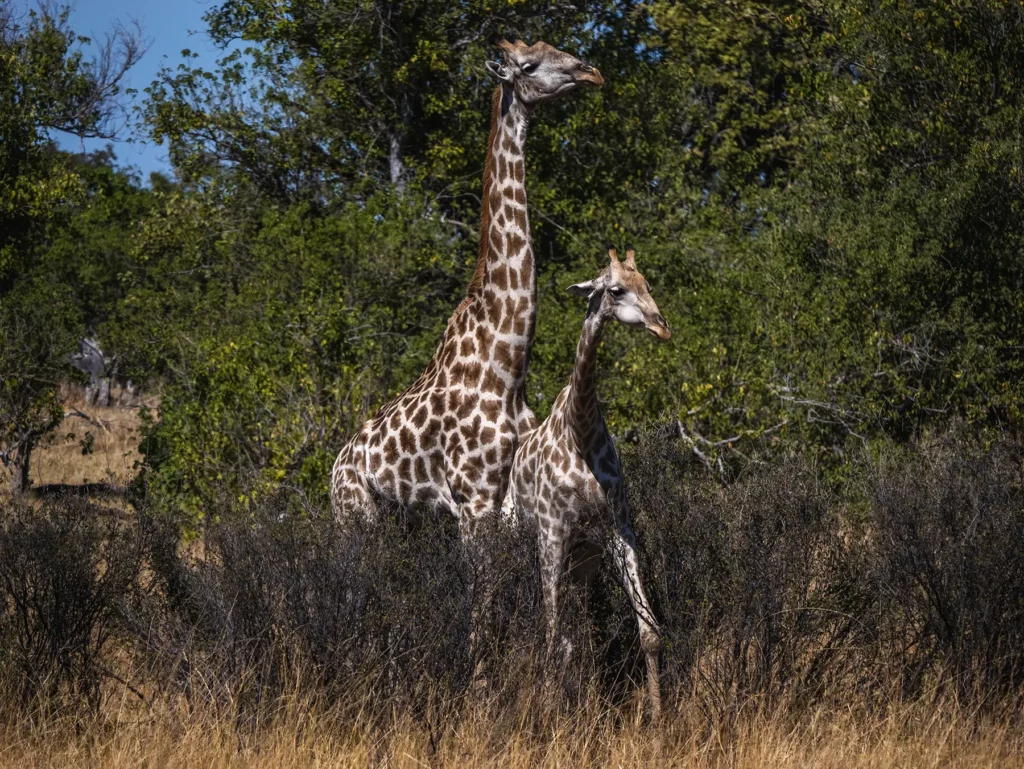
Option 2: Local Tour Operator
From my experience, booking your safari through a local tour operator is the best way to explore Botswana.
This is how I chose to explore Botswana, and it was really the perfect option! Local tour operators arrange your whole itinerary seamlessly, from the moment you set foot in your destination country. This approach offers the most comprehensive and stress-free safari experience for most travellers.
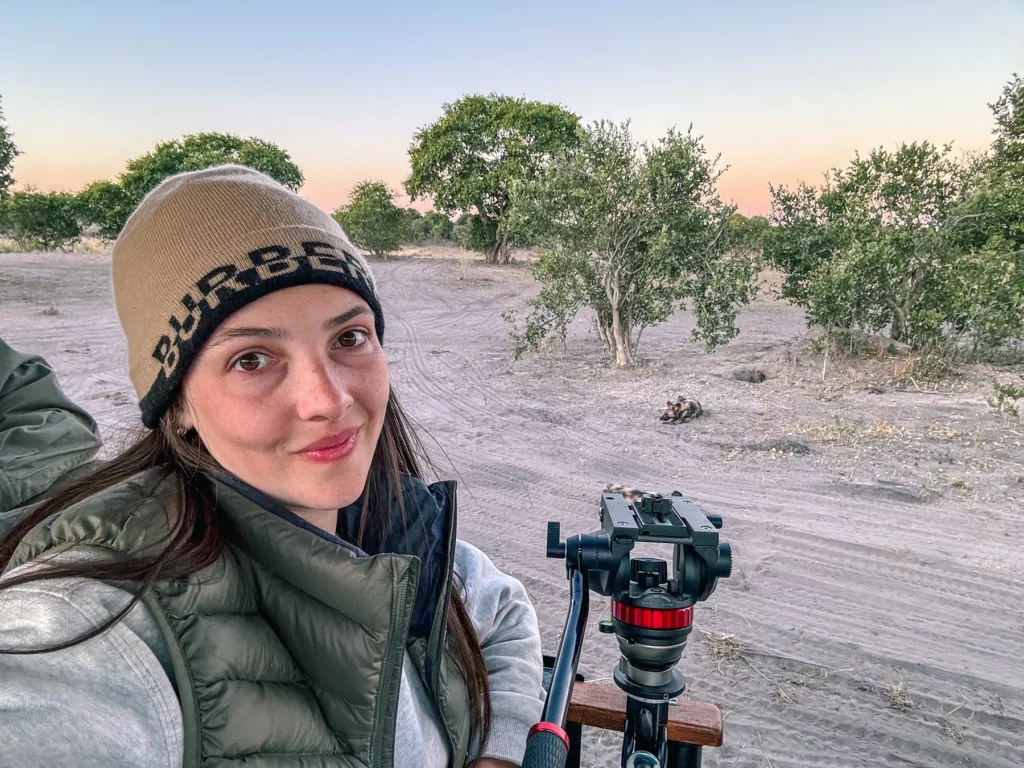
Pros of Local Tour Operators:
- The best local tour operators provide end-to-end service, managing everything from arranging park permits to booking accommodations according to your specifications. They employ excellent local driver guides and arrange vehicles, dedicated guides, fuel, and even meals throughout your safari.
- Having experienced both self-organized and professionally managed safaris, I can assure you that letting experts handle the details makes the whole trip extremely relaxing.
- Booking through local operators often costs about the same as arranging everything yourself. Thanks to their established relationships with lodges and camps, they secure preferential rates and can sometimes even snag rooms when hotels appear fully booked online. You’ll get all this value and save countless hours of research and coordination.
- The real value of working with local operators lies in their deep expertise. Your local guide’s intimate knowledge of the terrain, wildlife behavior, and tracking techniques are invaluable assets.
- Another huge advantage is your guide’s access to a radio network of fellow professionals. This communication web significantly increases your chances of good wildlife sightings.

Cons of Local Tour Operators:
- Tour operators can vary in quality, and the lowest price doesn’t necessarily mean the best value.
- Substantially cheaper packages may include lower-quality accommodation and less experienced guides, which negatively affect your overall safari experience.
- Typically, local tour operators do not handle booking your international flights.
Top Tips
- Guides with less experience in the wild could miss wildlife sightings or not know the best spots to find wildlife, so it’s important to choose a recommended local tour operator.
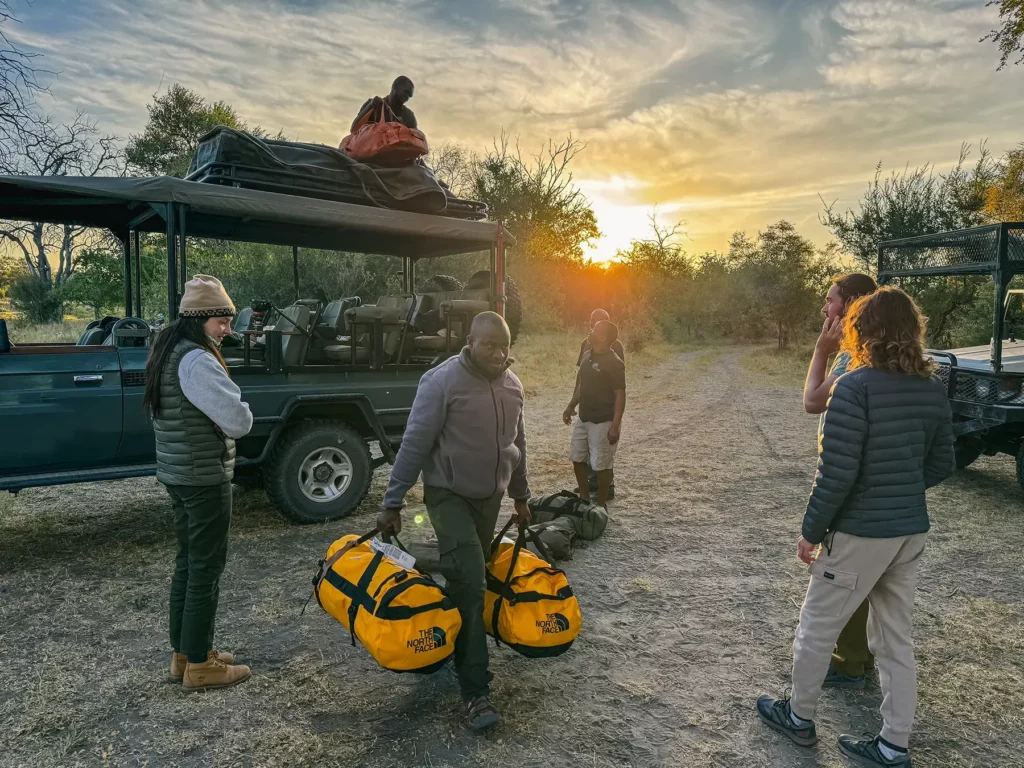
My Verdict on Local Tour Operators
Local tour operators provide excellent value for your safari, but it’s important to choose the right company who you feel confident working with, rather than simply picking the cheapest option.
Doing a bit of homework beforehand is key. Browse through online reviews, keeping an eye out for any recurring negative comments. Be sure to look for operators who consistently receive praise for their knowledgeable guides, reliable vehicles, and overall safari experience.
I’d love to help you choose the perfect local tour operator. You can receive safari quotations from my favourite local tour operators, who I have personally been on safari with and had an excellent experience with, here on Safaris By Ella.
Recommended Booking Options For Your 7-Day Okavango Delta Botswana Safari Itinerary
Safari with local tour operator
Most popular & best experience – typical prices for this itinerary start from $450 per person per day.
Visit safarisbyella.com for free quotes from trustworthy local tour companies I use to book my own trips.
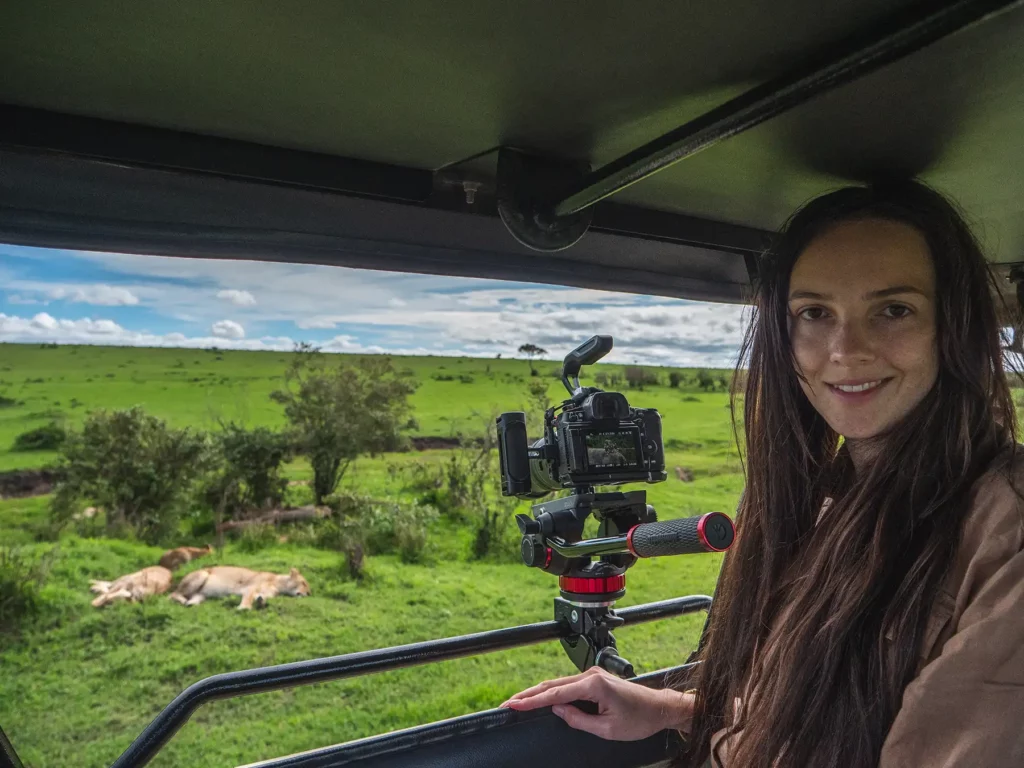
How to Book with the Best Local Safari Companies
- Comparison sites which provide multiple quotes from verified suppliers such as Safaris By Ella
Join the rapidly growing tribe of over 1,000 travellers who’ve booked their dream safari using my insider tips and recommendations.
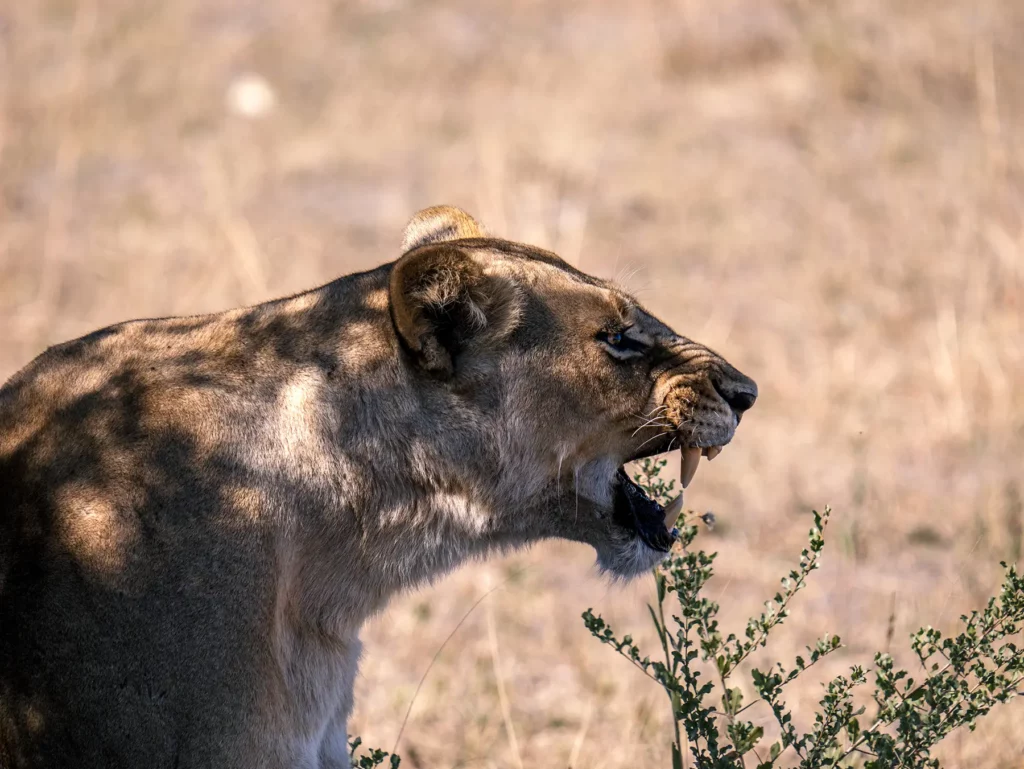
Option 3: Hotel-Provided Safaris
Many hotels and lodges provide their own safari experiences. This option may be worth considering if you have a large budget and prefer to stay in one location for a longer time or if you’d like to travel between lodges by air.
However, hotel-provided safaris are expensive and often the safari trucks are shared rather than private.
Pros of Hotel-Provided Safaris:
- If you choose to fly between lodges, your experience should be seamless and convenient, eliminating long road transfers.
- Whilst more expensive than booking with a local tour operator, this option is often more cost effective than booking with an international travel agent.
- You can expect a high standard of accommodation in pristine surroundings.
Cons of Hotel-Provided Safaris:
- Lodge-based safaris are substantially more expensive than safaris organized by local tour operators.
- Flights can be either scheduled (if you’re heading to popular airstrips) or chartered. While chartered flights provide more direct access to your destination, they do come with a significantly higher price tag.
- Lodge safaris often require you to share safari vehicles with other hotel guests, which can limit your flexibility regarding game drive timings, the duration spent at each sighting, and your overall safari experience.
Top Tip:
Consider combining lodge stays with a private local safari company for game drives. This hybrid approach can offer both luxury accommodation and personalized wildlife viewing experiences.
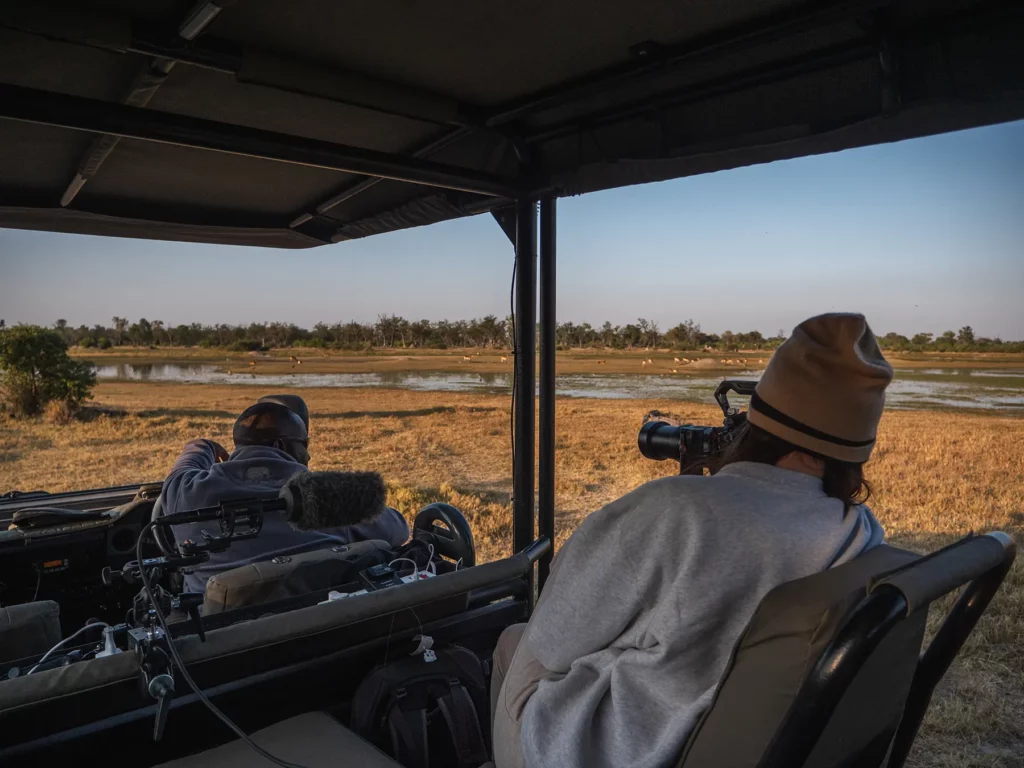
My Verdict on Hotel Safaris:
In my opinion, lodge-based safaris are a good option if you have a large budget and prefer a more stationary, luxurious safari experience. It’s important to be aware that you’re likely to share your game drives with other hotel guests.
How to Book a Hotel-Provided Safari
- Option 1: My recommended tour operators on Safaris By Ella can arrange hotels and air or road transport to and from the hotels. If you opt for the more cost-effective road transport, since they have driven you to the hotel, you might find it cheaper to use the safari company for safaris rather than using the hotel-provided safaris.
- Option 2: Check with your chosen accommodation whether they provide this service and the booking requirements.
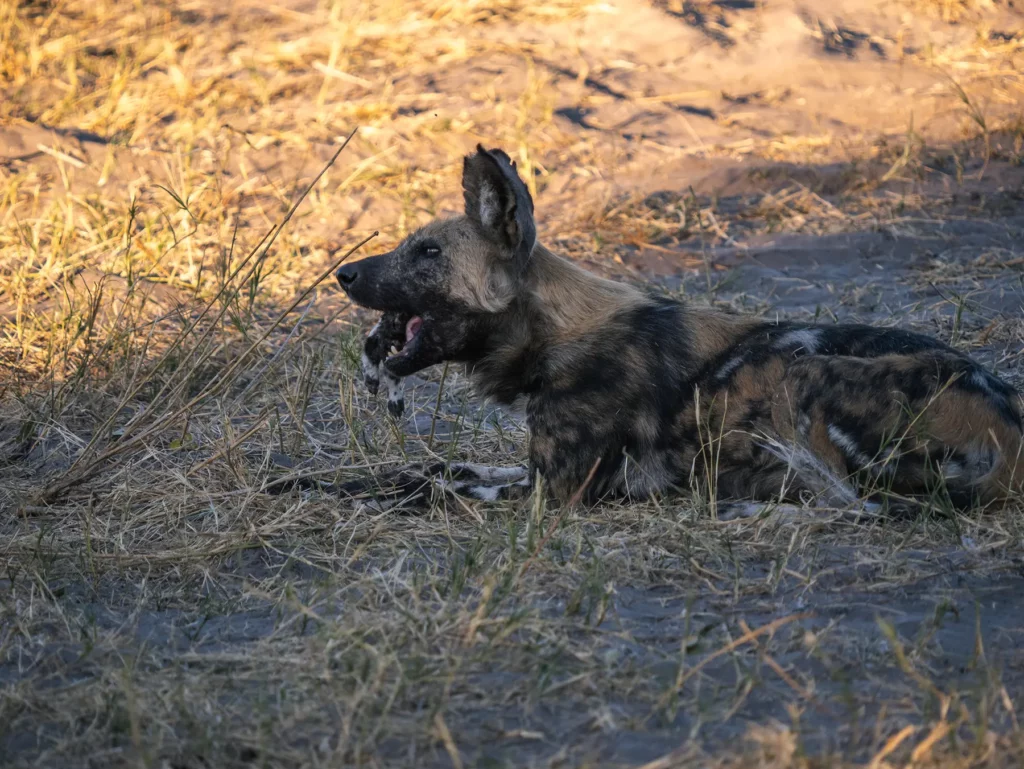
Option 4: International Travel Agents
If budget is not a concern and you’re after the convenience of somebody arranging your entire trip, including your international flights, then booking your safari via an overseas travel agent may be a good option to consider.
However, there are some major drawbacks of booking this way, the most obvious of which is that you will typically pay 25% – 40% more for your safari than if you booked through a local tour operator. This is because they will usually outsource the actual safari activities to local tour operators, and then add a markup onto their services in order to make a profit.
Pros of International Travel Agents:
- Having one provider book all aspects of your trip, including your international flights, can be convenient.
- Booking through international travel agents usually provides some mitigation of risk for the traveller. In the UK you will be covered by Package Travel Regulations and if your international flights have also been booked as part of your package, you’ll be covered by the ATOL scheme. In the USA there are also schemes such as the Airline Passenger Protection Act and the Federal Aviation Administration’s consumer protection rules which apply when booking through travel agents in the US.
Top Tip
There are steps you can take to ensure similar levels of protection for yourself when booking directly with local operators. If you use your credit or debit card to pay your deposit, you will legally have some purchase protection (in the UK it’s called Section 75).
It’s a good idea to buy good travel insurance with travel interruption protection. Use reputable, trusted local safari companies that allow for balance payments closer to the day of departure.
Cons of International Travel Agents:
- The main drawback of booking your safari through an international travel agent is that this is by far the most expensive way to organise your trip.
- 25-40% more expensive than booking through a local tour operator.
- Overseas travel agents often lack in-depth local knowledge, which can impact cost and the overall quality of your experience. For instance, they may not be aware of special rates being offered by particular lodges during the time of your visit, and end up booking you more expensive accommodation.
- You have no control over which local safari operator they subcontract to. Because you won’t know who your local providers are, it’s not possible to perform the necessary due diligence to make sure they are reputable.
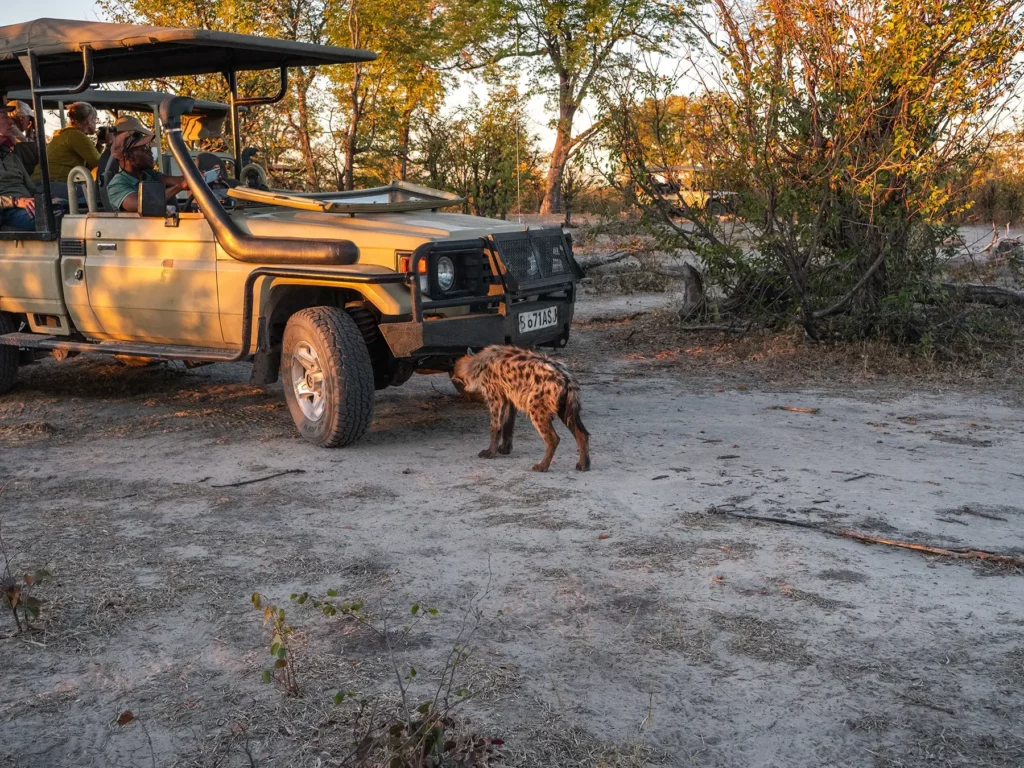
My Verdict on International Travel Agents:
In the end, aside from potentially simplifying international flight bookings, there aren’t many advantages to booking your safari with an international travel agent. At best, your safari experience will be similar to what you would get with a local operator, but at a significantly higher cost.
From my personal experience, booking through a local tour operator gives you the best combination of value and experience.
How to Book Your Safari with an International Travel Agent / Safari Company
- Comparison sites which provide multiple quotes from verified suppliers such as Safaris By Ella. When you select a luxury budget on the quote request, you will receive a quote from my recommended International safari company as well as my recommended local companies for comparison.
Join the rapidly growing tribe of over 1,000 travellers who’ve booked their dream safari using my insider tips and recommendations.
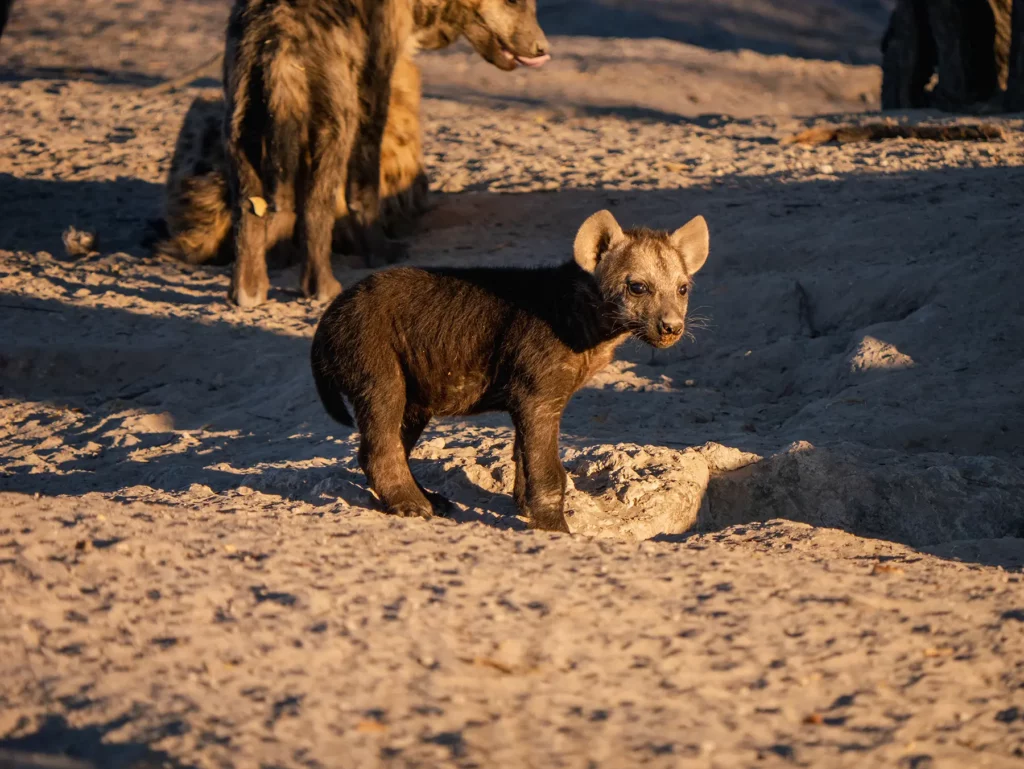
Private vs Group Botswana Safaris
The next thing you’ll have to decide is whether to book a private or a group safari. It’s an important decision that will have a big impact on the cost and quality of your overall safari experience.
I almost always recommend a private safari, rather than joining a group tour. Let’s run through some of the pros and cons of both of these options.
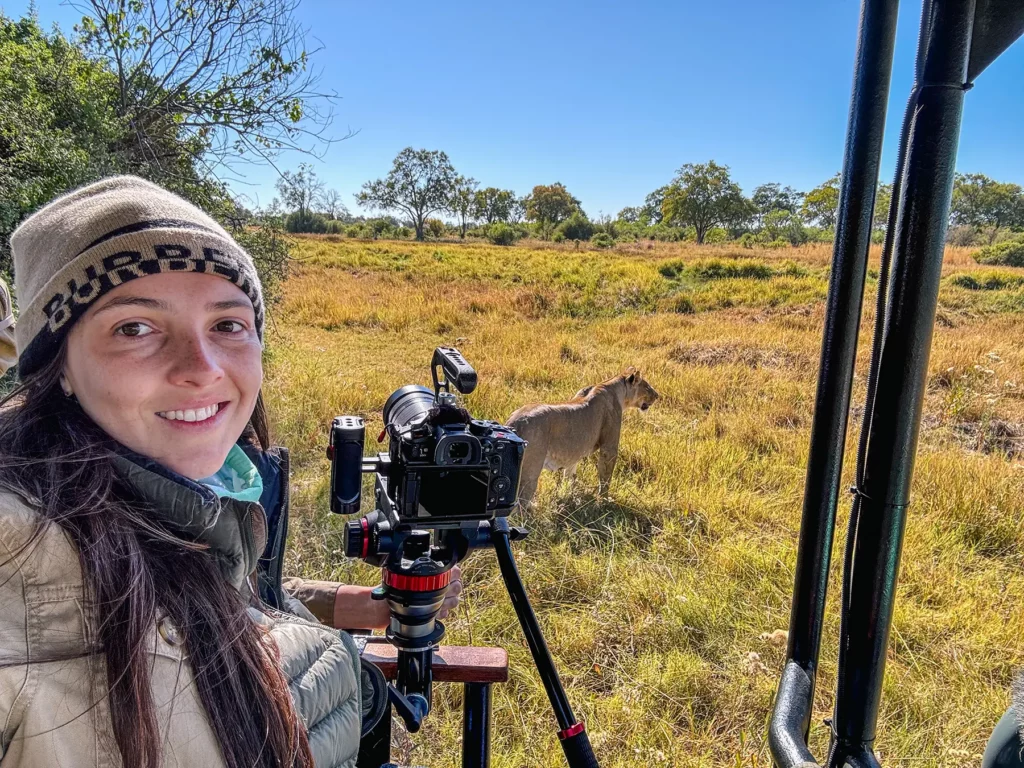
Private Botswana Safaris
Private safaris are the best option for most travellers, as the entire safari experience is custom-made to your individual needs.
Pros of Private Safaris
- You can customise just about every part of your experience. You get to choose where in the reserve you go, when you go there, which sightings to prioritise, and how long you stay at each sighting.
- You have the choice of which type of vehicle you have for the duration of your safari, which can impact your viewing conditions when you’re on a game drive.
- Many safari companies keep their most knowledgeable guides for private safaris.
- Since your safari vehicle is private, you won’t waste time collecting and dropping off other passengers at their lodges before and after your game drives. This way you get to spend more time in the bush focusing the wildlife.
Cons of Private Safaris
- Private safaris tend to be more expensive than group safaris, particularly for solo travellers.
Conclusion on Private Safaris
I always recommend a private safari, if your budget allows. I find that private safaris almost always provide a more enjoyable and fulfilling experience, and for that reason are better value for money.
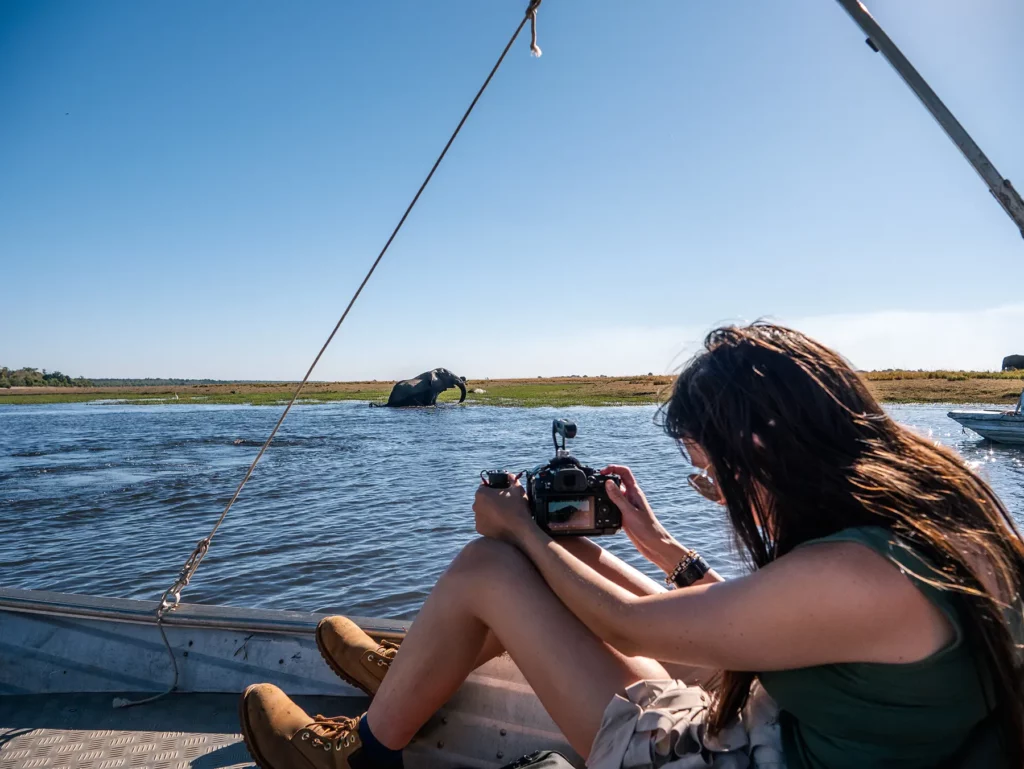
Group Shared Botswana Safaris
Group shared safaris tend to be more popular with those on a tight budget, or for solo travellers who are interested in meeting fellow travellers on their game drives.

Pros of Shared Group Safaris
- The main appeal of shared safaris is that they are usually less expensive than private safaris, especially for solo travellers. Fixed costs such as your vehicle and driver guide are split between all members of the group, making this a more appealing option for solo travellers on a budget.
- This is a good option if you like to meet new people and share your travel experiences.
Cons of Shared Group Safaris
- Shared group safaris lack flexibility, running at set times and following a predetermined route.
- You have no say over which sightings to prioritise and how long you stay at each sighting.
- A full vehicle means that you may not always get the best seat. These vehicles sometimes also squeeze a third row of seats down the middle, restricting the views of those in the middle.
- There is often a fair amount of time-wasting at the start and end of each game drive, as you drive from lodge to lodge collecting and dropping off all the passengers. This usually means that you all miss prime viewing times early in the morning and in the evening, when predators and other wildlife are more active.
Conclusion on Group Shared Safaris
If you’re a solo traveler on a budget, shared group safaris can be a decent choice. However, they’re not ideal for everyone. Sharing vehicles and having limited flexibility are major drawbacks for those who want a more personalised experience.
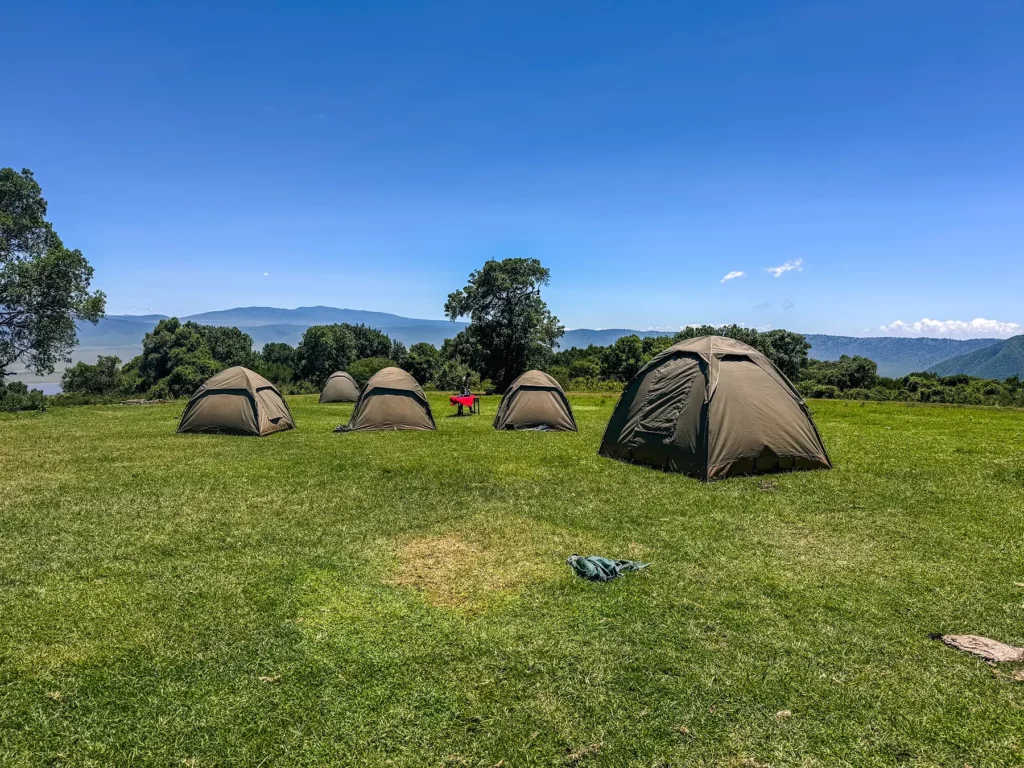
How Much Does a Botswana Safari Cost?
Typical prices for a private safari in Botswana start at $500 per person per day, and shared group safaris in Botswana start at around $400 per person per day.
A safari in Botswana will set you back more than a visit to other safari destinations in Africa. To put that amount in perspective, the starting price for a private Kenya or Tanzania safari is around $300 per person per day.
These expenses include your park fees, unlimited game drives, accommodation, meals on full board, beverages (including alcoholic drinks), transport, driver guide, and all activities (often including mokoro trips and boat cruises). Prices exclude international flights, tips and gratuities.
The final cost of your Botswana adventure depends on a range of factors, including your choice of accommodation, reserve entrance fees, and activities. Below you’ll find a general price guide based on local tour operator rates.
Below you can view a chart of typical Botswana safari costs based on the luxury level.
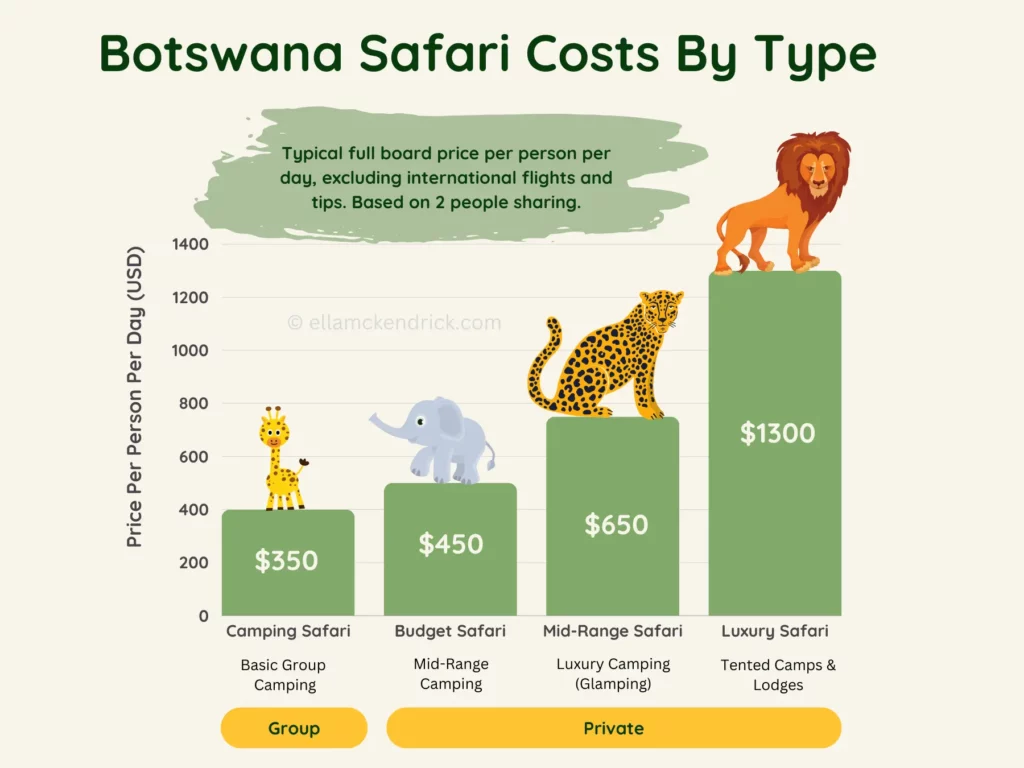
For an in-depth cost breakdown, you can have a look at my up-to-date guide to Botswana safari costs.
There are three price points when it comes to safaris in Botswana: budget, mid-level and luxury.
Budget private safaris start at $450-$500 per adult per day, while a budget group safari will set you back around $400 per day. The mid-range option, in which you stay in luxury mobile tented camps, is the most popular choice. These safaris average $650 per person daily.
High-end safaris with accommodation in semi-permanent tented camps or lodges typically cost around $1,300 per person per day, with premier lodges charging as much as $7,000 per night.
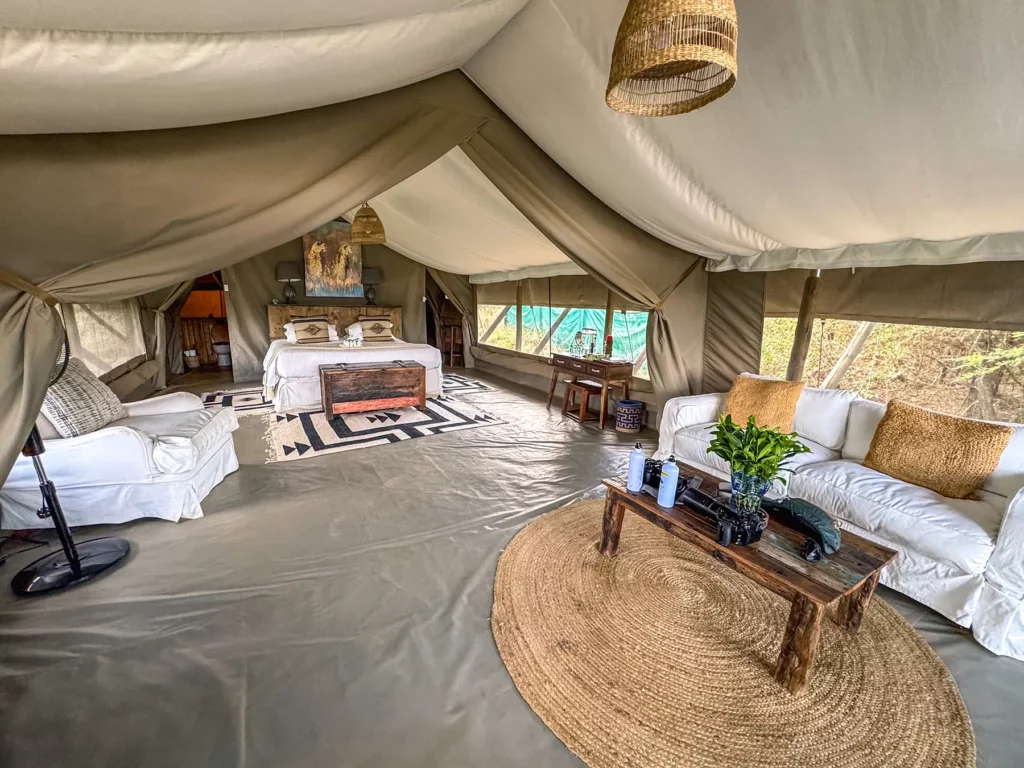
Botswana Safari Costs Breakdown
Let’s look at the distribution of your safari costs. The majority of expenses – over 59% – goes toward the core elements: your accommodation, safari vehicle, fuel, and professional guide. Add in the park and concession fees (15%), and these essential components make up about 74% of the total cost.
These park and concession fees are based on mid-range safari pricing, specifically for luxury mobile tented camps. These naturally come with higher overnight fees compared to basic camping options.
The remaining costs are split between bank charges (3.4%) and safari company operations like insurance and administrative support (13%). This leaves around 9% as the operator’s profit margin for organizing your safari experience.
You can see the complete breakdown in the chart below.

Comparing safari costs across eastern and southern Africa reveals some interesting differences. In Botswana, a higher percentage of costs goes to accommodation, vehicles, and guide services than Kenya and Tanzania. This reflects Botswana’s commitment to low-impact tourism, which naturally leads to higher accommodation prices.
Botswana’s relative prosperity means guides typically earn better wages and the guides are generally highly trained and demonstrate impressive expertise in their field.
Balancing this out somewhat, you’ll find that entrance fees to parks and reserves in Botswana are lower than in Kenya and Tanzania. Park entry fees are nominal, at about $10 per person per day. There is also a small vehicle fee for foreign vehicles, which is usually no more than $5 per day.
For basic camping accommodation, overnight concession fees range from $30 to $75 per person per night, and can reach up to $100 per person per night for luxury camping. The latter is what you can expect for a mid-range safari, in which the safari company rents a private campsite with ample space and privacy for setting up a luxury mobile tented camp.

Factors Affecting Botswana Safari Costs
The biggest factor affecting the cost of your Botswana safari is the type of accommodation you choose. As you might expect, semi-perminent luxury lodges and camps command higher rates than mobile tented camps
The way you book your safari also makes a difference – booking through an international travel agent, for example, typically costs more than using a local tour operator.
Let’s take a closer look at each of the key factors which will affect your safari cost below.
Jump to more information on each factor using the links below.
How you Book Your Safari
How you book your safari will impact the price you pay with self-drive being the cheapest.
International travel agents are typically the most expensive way to book a safari in Botswana. They typically use local operators to actually carry out the safari (and with whom you can book directly), and of course add their profits over and above the local operators’ prices.
If you book your safari through a local safari company in your destination country, this is typically the best value.
Below you can view a chart of typical budget safari costs based on the booking method.
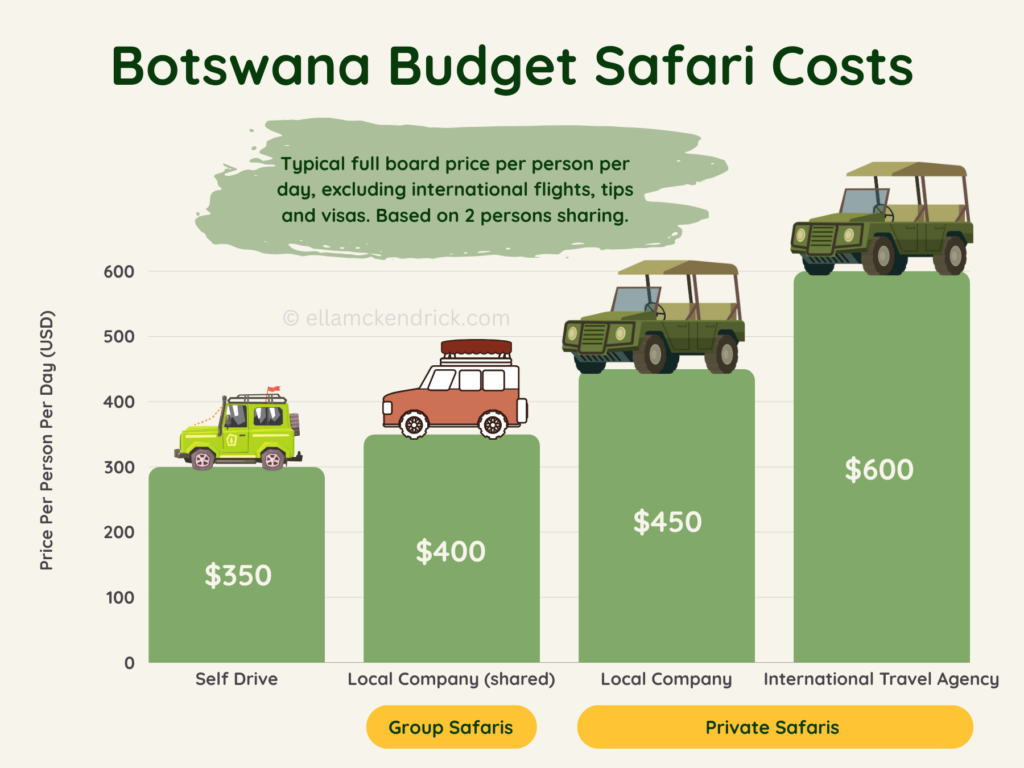
My Preference: Nowadays, I choose to book all my safaris through local tour operators. Even when I occasionally opt for fly-in safaris, I still rely on local tour operators for these bookings, as well as for game drives and other arrangements, as they handle everything, including airport transfers.
Accommodation Comfort Level
Your choice of accommodation comfort level significantly influences the overall safari cost.
Budget-friendly private safaris begin at approximately $450 per person daily, offering accommodation in mid-range tented camps. This option provides an authentic bush experience while keeping costs more manageable.
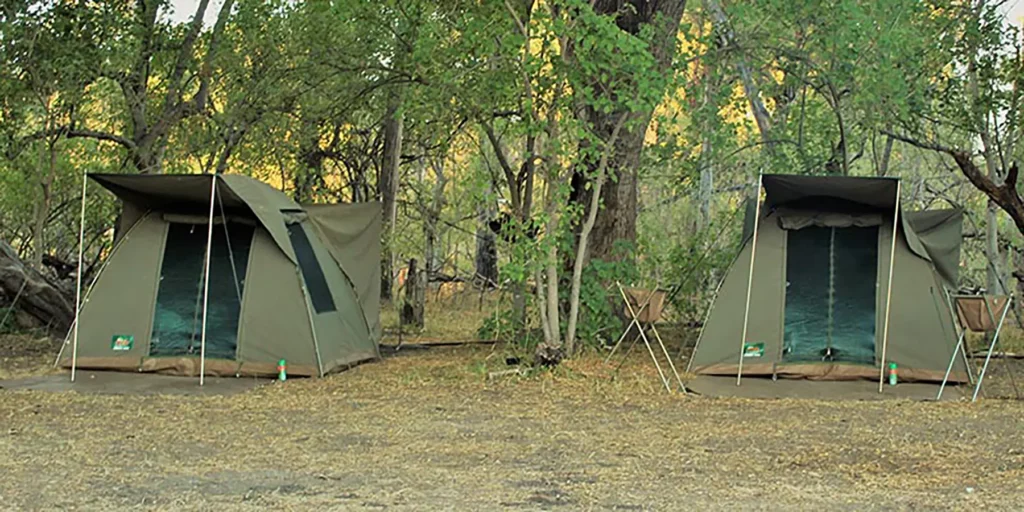
Mid-range private safaris, which start at approximately $650 per person per day, are a great choice if you’re after improved comfort levels. This option would offer you upgraded mobile tented accommodation, complete with proper beds and private bathroom facilities. Your dedicated team of porters and a chef would take care of everything so you don’t have to lift a finger.

Moving up the comfort scale, a higher-end private safari can easily cost more than $1300 per person per day. At this price point you can expect to stay in lodges with superior amenities and a high level of comfort. Some of the more luxurious lodges can cost as much as $7000 per person per night, or even more.
My Preference: For Botswana my preference is luxury mobile tented camps, which fall under the mid-range safari price bracket. These provide a good balance of value-for-money with a great experience.
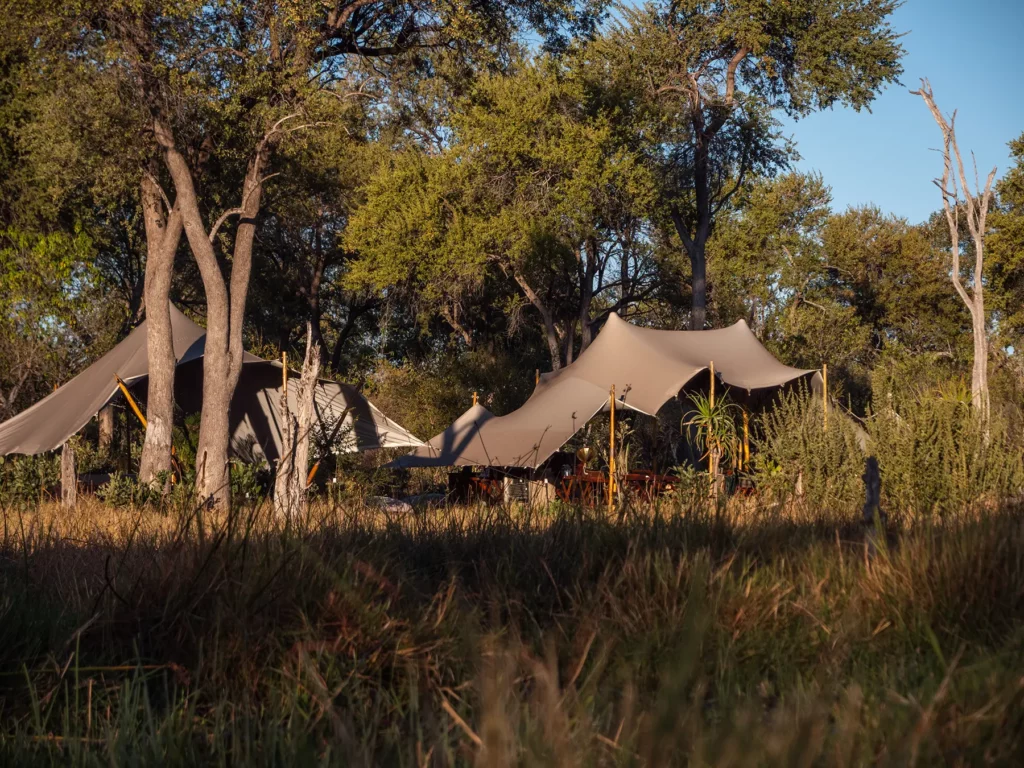
Time of Year
Botswana’s dry winter season attracts the highest visitor numbers, and prices tend to reflect this peak demand. However, traveling during off-peak periods comes with the prospect of significant savings – up to 40% on accommodation costs at luxury lodges.
While the wet summer season offers more affordable rates, it does present some practical challenges. Wildlife viewing conditions are not always optimal, and certain regions become less accessible. The Okavango Delta, for instance, has limited foot access during this period due to flooding.
My Preference: In my opinion you can’t go wrong with any time of year apart from perhaps January and February which are the wettest.
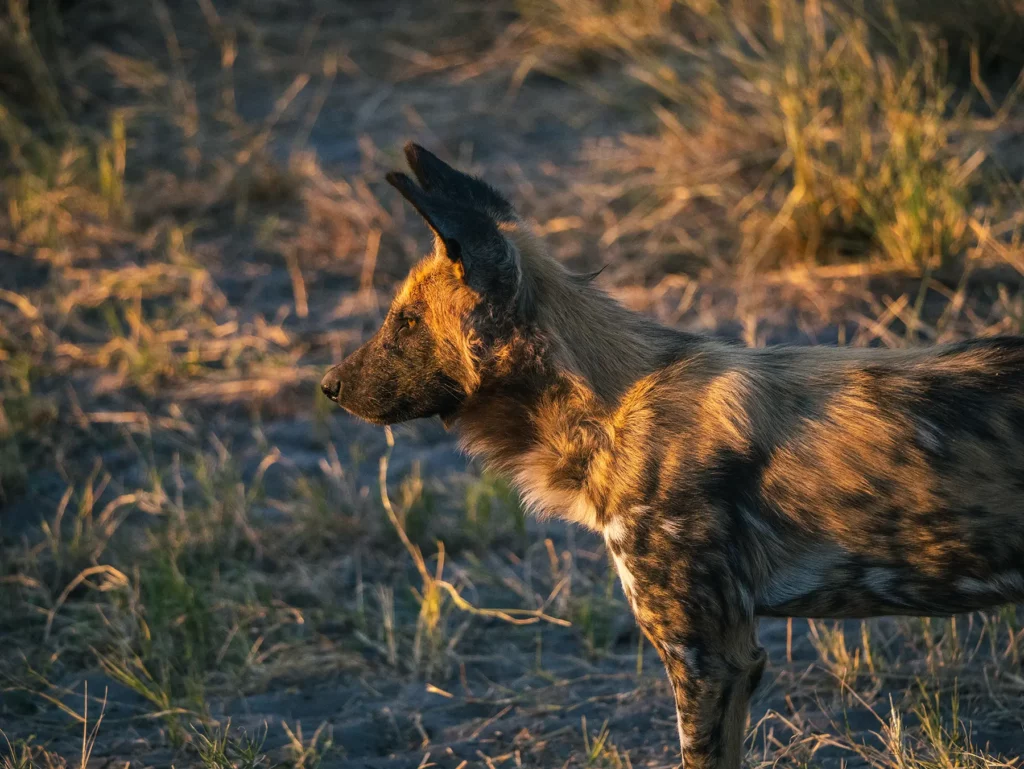
Mode of Transport Between Parks
Your choice of transport between locations can significantly impact your overall safari costs.
Opting for road travel between regions and reserves is a way to save on costs. Road transfers are essentially included in your daily rate (since you’re already paying for the vehicle), making them a cost-effective option that doubles as extra game viewing time!
While scheduled flights offer convenience and reduce travel times, particularly over rough terrain, they add approximately $300 per person per flight to your budget.
Private chartered flights cost significantly more than scheduled flights but allow you to choose the flight time and also access smaller airstrips which might not be covered by scheduled flights. These start from around $2,000 per flight hour.
My Preference: I tend to fly if my road travel alternative is anything over 6 hours. However, this is very much a personal preference. For my Northern Botswana safari, my drives were all under 6 hours, so I travelled by road in the safari truck.
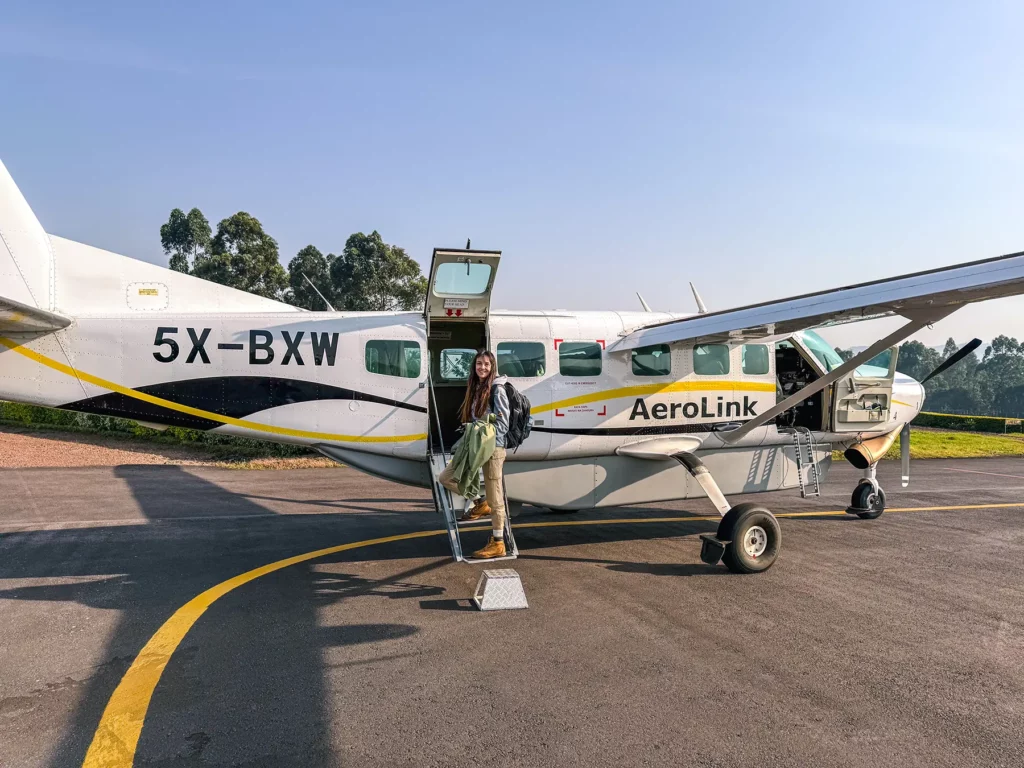
Group Size
The number of people in your safari party significantly influences individual costs. Solo travellers on private safaris bear the full burden of fixed expenses, such as vehicle and guide costs. You could pay up to 50% more, in total, per person when travelling alone than when travelling with a companion.
Sharing these fixed costs among multiple travellers creates significant economies of scale, but while larger groups generally means lower per-person costs, there are practical limitations. Safari vehicles typically accommodate a maximum of seven passengers, making this the upper limit for group size.
My Preference: I personally like a maximum of 2 or 3 people, including myself in the back of the safari truck to allow me to move around freely for sightings on both sides of the truck, and to take photos.
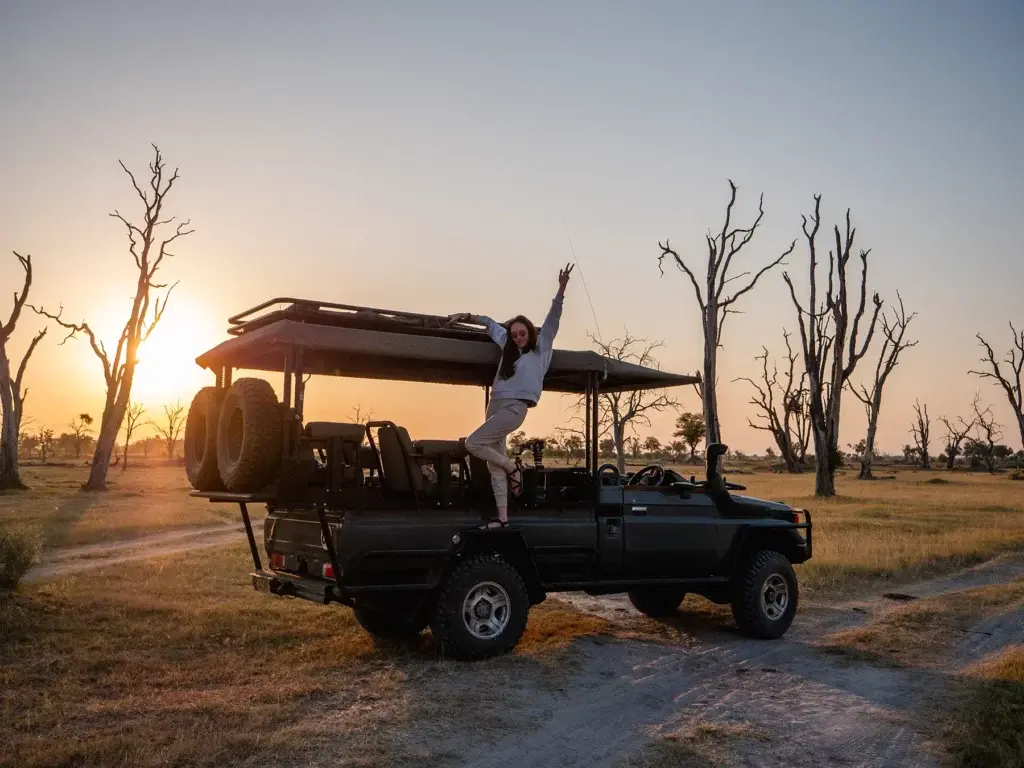
Best Time to Visit Botswana
Botswana is a good year-round travel destination, with the different seasons providing their own unique wildlife experiences.
My Preference: In my opinion you can’t go wrong with any time of year apart from perhaps January and February which are the wettest.
Let’s look at the pros and cons associated with each season.
Jump more information on each of the seasons using the links below.
The Dry Season (April – October)
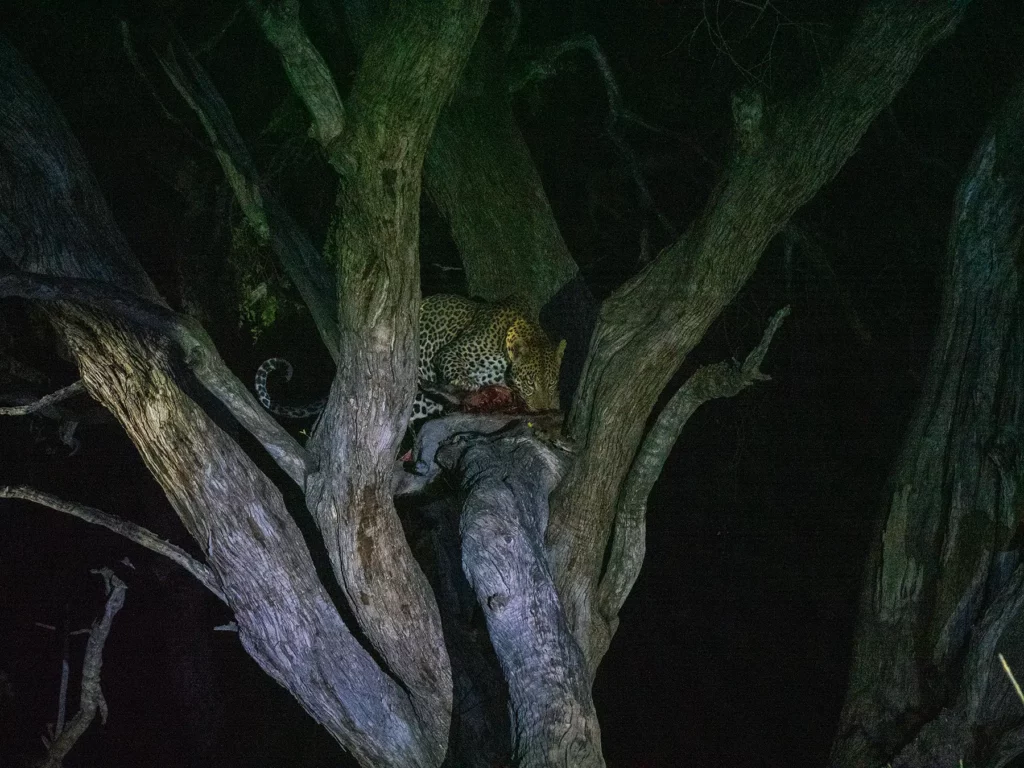
The Dry Season (April – October)
The dry season is best for wildlife sightings generally and for those who don’t mind higher prices and larger crowds.
This is the most popular time of year to visit as the weather is sunny and dry (with minimal chances of rain) and wildlife sightings are abundant.
Quick Facts
Prices: Highest at this time of year.
Weather: Sunny, dry days with minimal chance of rain. Temperatures range from lows of 43°F (6°C) at night to 77°F (25°C) in the day.
Wildlife: Easy to find as vegetation has died back and they tend to congregate around water sources.
Birding: Plentiful birdlife, though not as good as the green season.
Unique features: Okavango Delta is in full flood, wild dogs are denning so easier to find.
Pros of The Dry Season (April – October)
- Excellent game viewing
- Comfortable day-time temperatures
Cons of The Dry Season (April – October)
- Busiest time of year for safari
- Higher prices

The most popular time to visit Botswana is during the dry season, which runs from May to October. Temperatures during this time usually range from 43°F (6°C) at night to 77°F (25°C) in the day, and the skies are sunny.
Since there is little water, most of the animals gather around watering holes, so it’s easy to find them. The vegetation is less dense in the dry season than in the wet season, which makes it easier to spot game when they are roaming in the bush.
The dry season is also the best time to see my personal favourite, the African wild dogs. They typically den at this time of year, meaning that they remain in one territory.
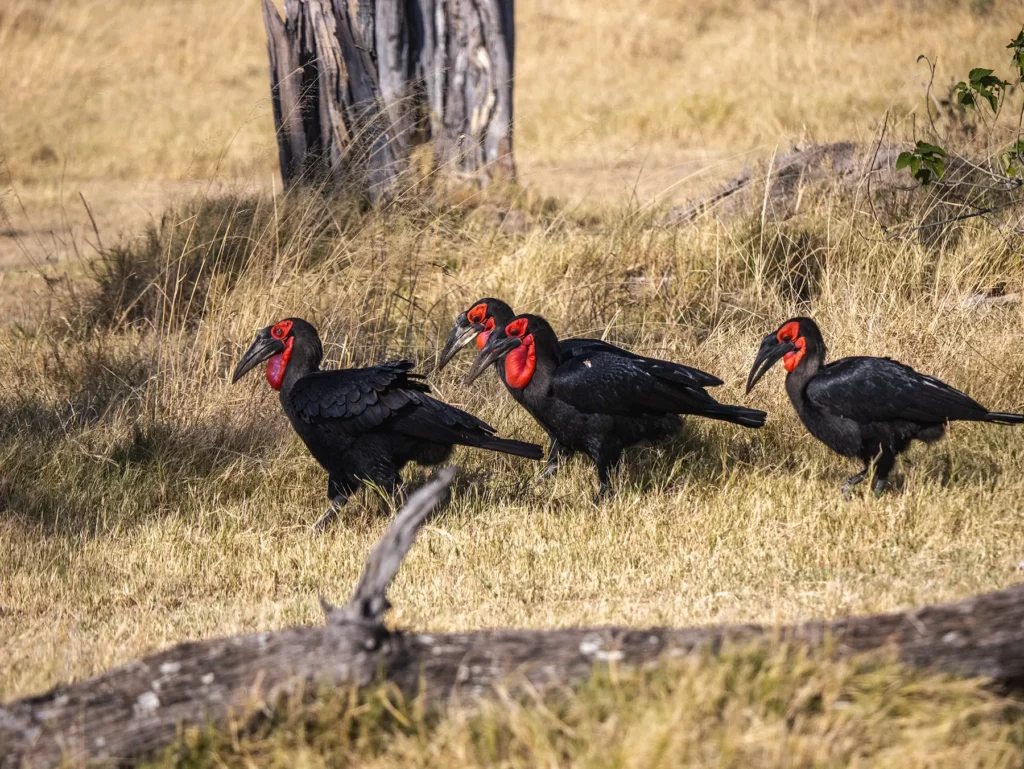
Wild dogs travel vast distances during most other times of the year, so you have to be really lucky to see them outside of the dry season. Most good guides would be able to locate a wild dog denning territory.
Botswana is famous for the Okavango Delta and many visitors to this region hope to explore it using a traditional dugout canoe, or mokoro. If that’s what you’re after, make sure to come between June and August when the Okavango Delta is flooded (but there is still little precipitation).
Travelling along water channels by mokoro helps you get deeper into the bush, where you’re more likely to have close-up encounters with wildlife. Botswana is one of the few places in southern Africa where you can do this, and it is certainly one of the most unique safari experiences on the continent.
Botswana’s impressive zebra migration can be viewed throughout much of the year. However, in the dry season, the 30,000-odd zebras that take part in the migration are static and can be found in the popular Chobe National Park and Okavango Delta.
The Green Season (November–April)
The Green Season is good for visitors who like it quieter with slightly lower prices as well as keen birders.
The rain starts to fall in November, transforming Botswana into a lush, green wilderness. Whilst days are hot with high chances of rain, wildlife viewing remains fantastic and prices are slightly lower at this time of year.
Quick Facts
Prices: Cheaper than the dry season with savings of up to 50% at high-end lodges
Weather: Hot and rainy in the north, less rain in the south. Temperatures average 85-95°F (30-35°C) but can be higher.
Wildlife: Migratory zebras and wildebeest in the central Kalahari region. Good viewing conditions in the Makgadikgadi and Nxai Salt Pans.
Birding: Abundant birdlife – this is the best time of year for birders!
Unique features: Zebra migration, the Kalahari desert is fabulous at this time of year
Pros of Green Season (November–April)
- Many baby animals
- Beautiful green landscape
- Less visitor numbers
- Lower prices
Cons of The Green Season (November–April)
- Rain affects viewing conditions and makes some roads impassible.
- Mokoro trips aren’t possible
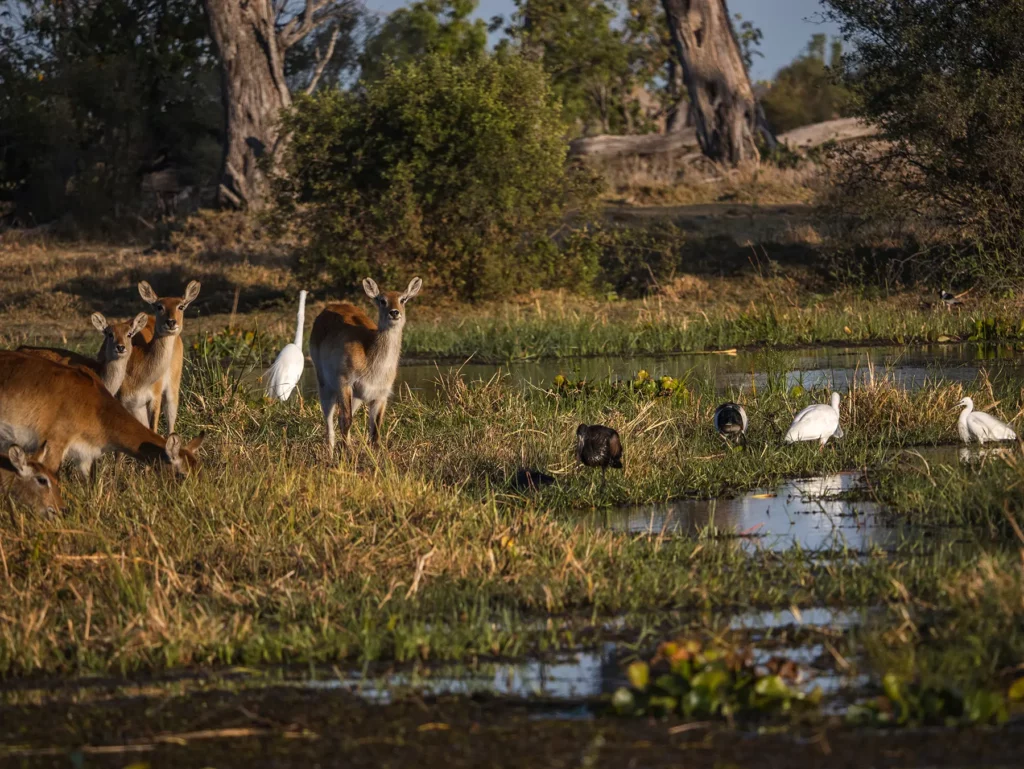
November to April is considered Botswana’s off-season, thanks to the high temperatures and regular rain. During this time, prices are lower than they are in the dry season, and there is a fraction of the number of visitors.
This is also a great time for bird watching, with many migratory species flocking to the southern hemisphere while it’s winter up north. What’s more, you’re likely to see many newborn animals as they take their first steps on the plains and riverbanks. As you can imagine, this is a really special time to be here!
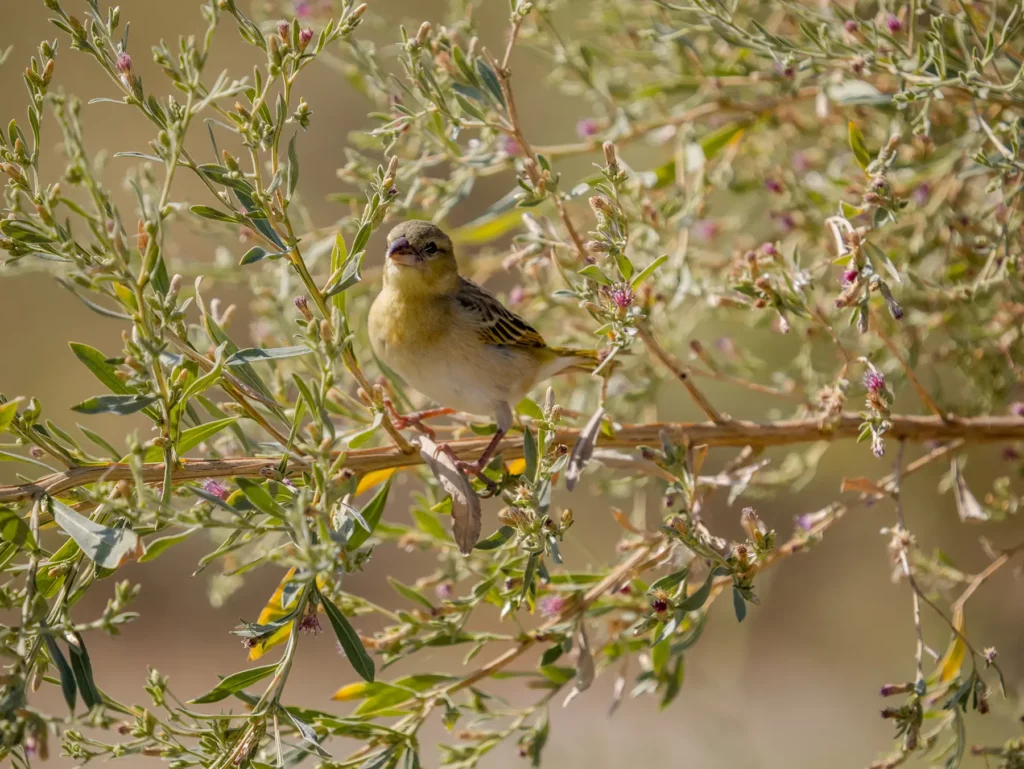
In the wet season, the zebra migration is in full swing. Starting in early November, the great herds make their way south towards Nxai Pan National Park in Makgadikgadi, where the soil is rich in minerals. At this time of year you’ll find the zebras happily chomping away on the park’s green grasses which are only here in the green season.
At the end of February and start of March, the great herds make their way north once more towards the Chobe River and Okavango Delta.
One of the challenges of visiting Botswana in the wet season is that rain can affect viewing conditions. No one likes to be in an open-sided safari truck while it’s pouring with rain outside. In addition to this, sometimes the rain makes certain routes unnavigable.
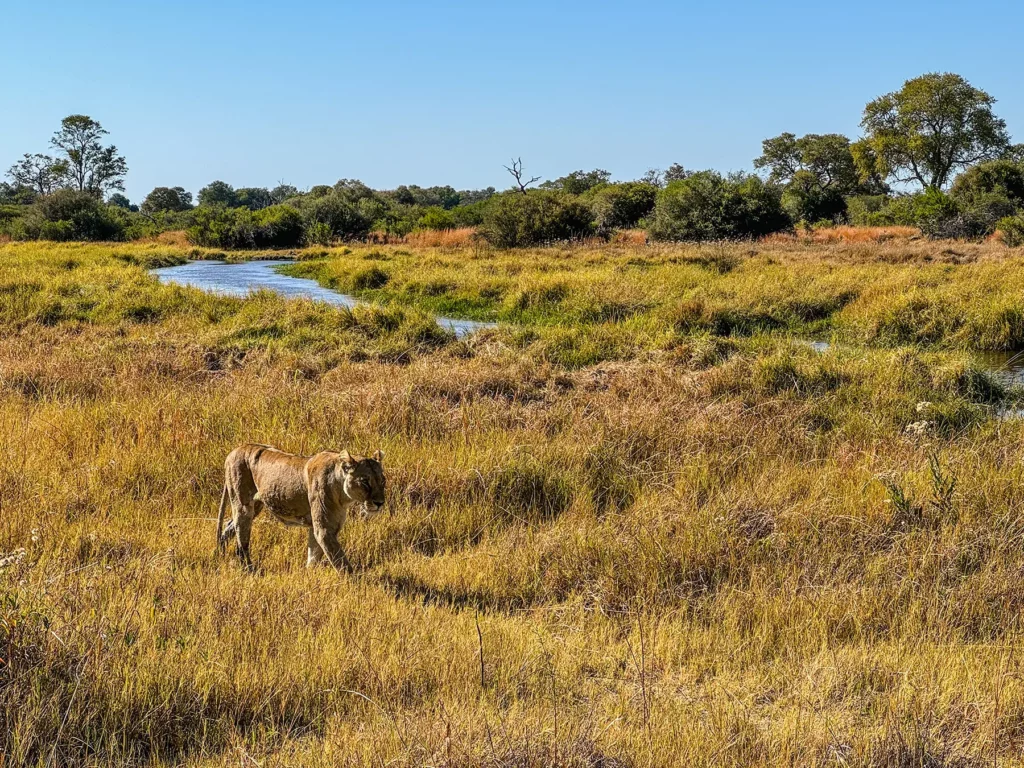
How Long to Spend in Botswana
You can easily spend up to three weeks exploring Botswana’s exceptional reserves and parks, particularly if you want to take in all the different regions.
However, for many people 7 days is the perfect amount of time to start out with, particularly if time and budgetary constraints are in play. 7 days is enough time to experience the highlights of what this magical country has to offer, and the best way to do that is to give your itinerary a particular regional focus.
If you’d like to spend slightly longer on your safari, take a look at my 10-day Botswana itinerary here.
My preference: I like to spend between 10 days and 3 weeks in Botswana depending on whether I’m focusing on of area of the country or covering all the key parks and reserves.
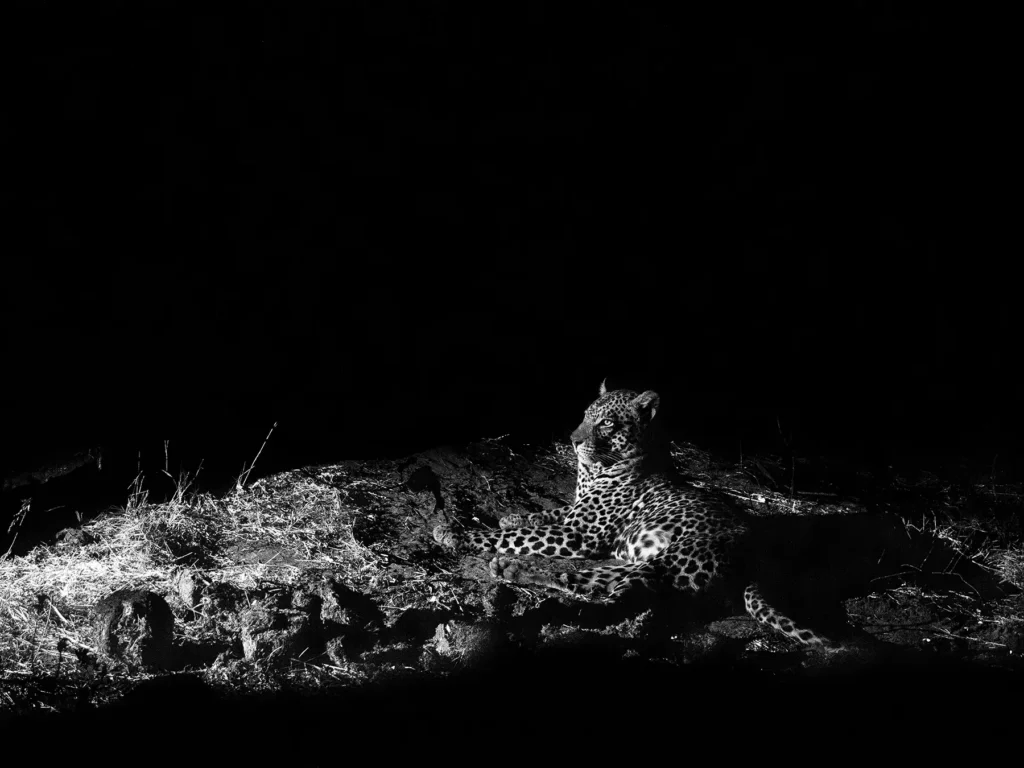
Botswana Safari Logistics
If this is your first time travelling to Africa, dealing with the logistics of a safari can be quite intimidating. Don’t be discouraged though – if you book through a local tour operator, they will take care of most of the logistics around accommodation and transport.
However, there are a few things you’ll need to handle yourself before travelling to Botswana.
Jump more information on each of the seasons using the links below.
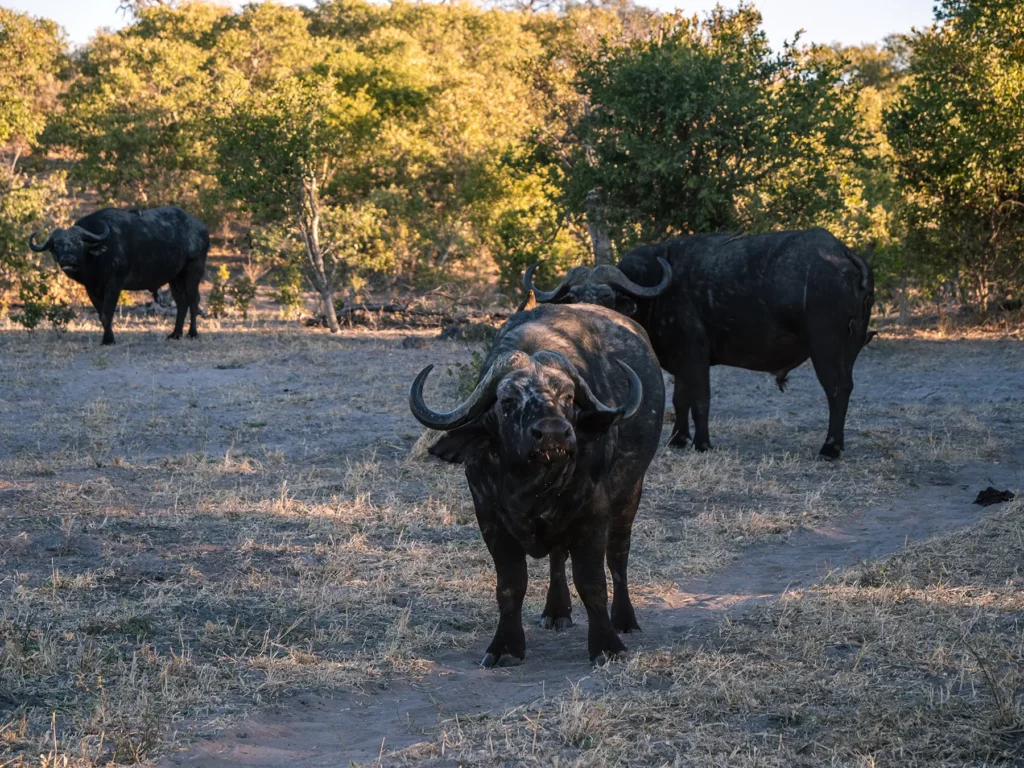
Botswana Visa & Entry Requirements
First and foremost, it’s important to check if there are any visa and entry requirements based on the passport you’ll be travelling on.
Citizens from the UK, Canada, Australia, the US, and most of Europe don’t need a visa to enter the country for stays fewer than 90 days. However, you must make sure that your passport is still valid for at least six months after your arrival date, and that you have at least three blank pages in it.
You should also always reconfirm the visa requirements before you leave, as these can sometimes change with little warning. You can find more information about this on the Botswana e-visa website.
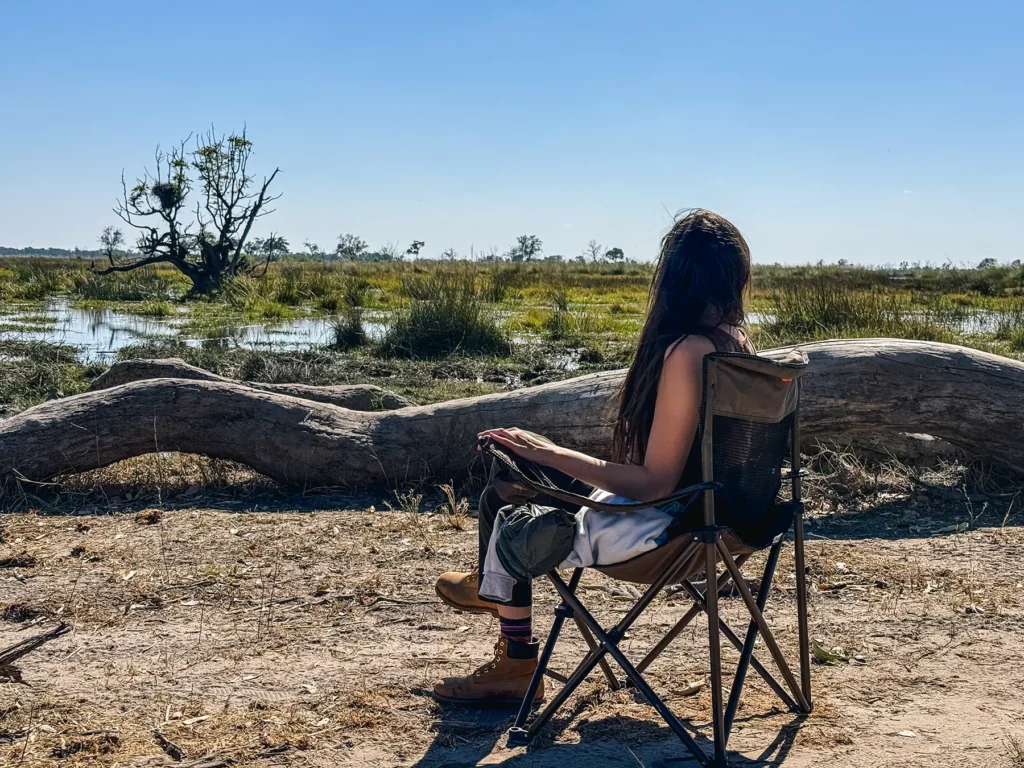
Vaccinations for Botswana
Like many developing countries, Botswana still struggles with some communicable diseases that are no longer prevalent in the UK or the U.S. It’s a good idea to make sure that you are up-to-date on all routine vaccines such as polio, measles-mumps-rubella (MMR) and tetanus. It’s also recommended to get vaccinated for Hepatitis A and B.
You may also need a yellow fever vaccination if you have recently travelled in a country listed as high risk for transmission or are including one of these counties in a multi-country trip.
Depending on the area of the country that you are travelling to, you may want to consider taking prescription medicine to prevent malaria. Most of these medications need to be taken a few days before your trip, throughout the trip, and then up to two weeks after you return home. It’s important that you factor in the entire trip to ensure that you don’t run out of medication.
You can consult NHS Fit4Travel for further information.
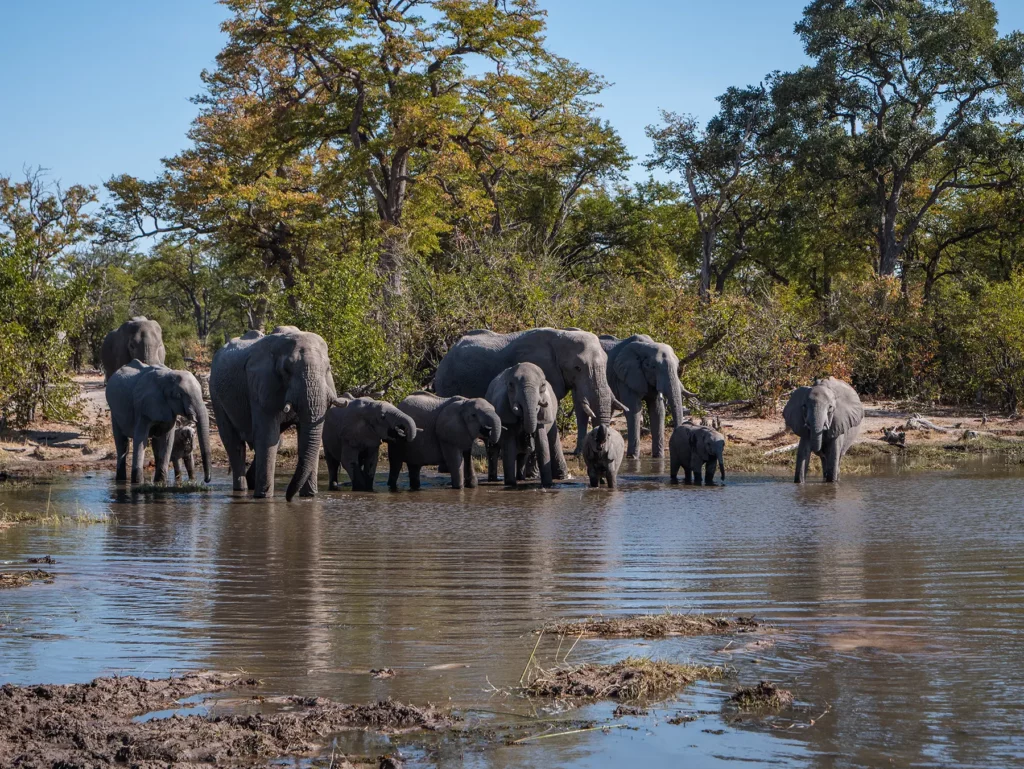
Medications in Botswana
There is a risk of malaria in Botswana, especially in the rainy season.
Talk to your healthcare provider or travel clinic about taking antimalarial medication as a precaution. Certain medications need to be taken for some days before you enter a malaria area, and then throughout your stay. To prevent mosquito bites, cover up with loose-fitting, light-coloured clothing, and use insect repellent, especially at dusk, dawn, and in the evenings.
It’s also a good idea to pack enough of any regular or chronic medications, as pharmacies may not be easily accessible during your trip.
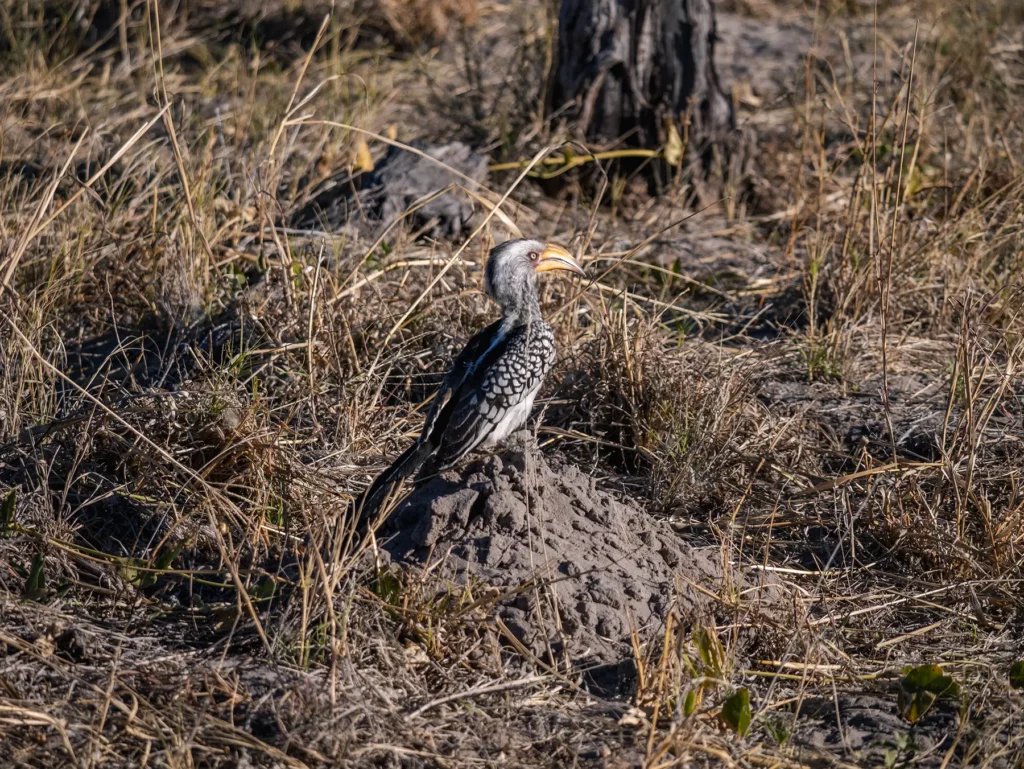
Botswana Currency
The local currency in Botswana is Botswanan Pula. Local currency can be obtained at the airport via a Bureau de Change or ATM. Maun also has ATMs, banks and Bureau de Changes.
Small towns usually have 1 ATM but they occasionally run out of cash.
USD (printed after 2007) is widely accepted at lodges, hotels, and tourist-focused establishments, but smaller local businesses and roadside vendors typically only accept local currency.
Credit / Debit cards are widely accepted, especially Visa. Occasionally card payments can incur a fee of 3-5%, added by the establishment to cover their card fees – they will tell you about this before payment.
If you plan to use your credit / debit card, let your bank know about your travel plans first to avoid it being blocked. These days you can usually do this via your bank’s phone app or website
My experience: I just took USD and a multi currency Visa Debit card (E.g. those offered by Wise, Revolut etc.) I used some 1 USD notes for tips for the taxi driver in Maun. The taxi costs were added to my room bill and paid by card. The only other time I used USD was for tips for my guide and mobile camp team at the end of my safari.
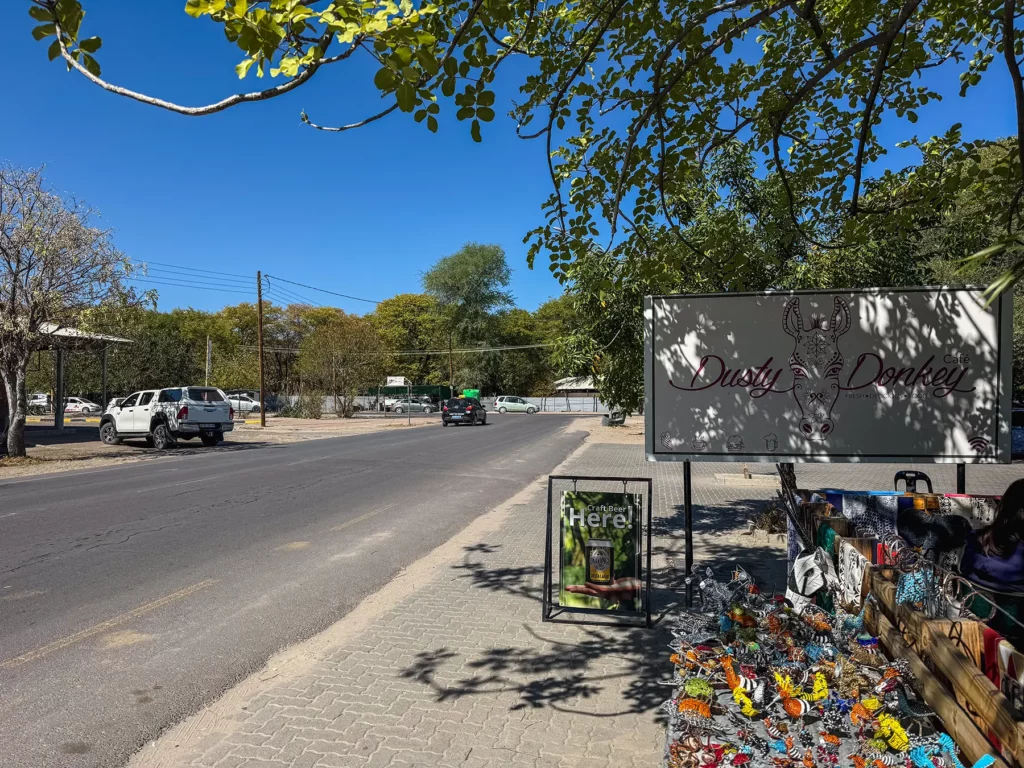
Botswana Border Crossings
It’s very popular for visitors to Botswana to add the natural wonder of the world, Victoria Falls, to either the start or end of their itinerary. Located on the border between Zimbabwe and Zambia, visiting Victoria Falls requires at least one border crossing. But the good news is, in my experience, it’s very straight-forward!
It’s possible to get a Zimbabwean visa on arrival at the border between Botswana and Zimbabwe.
These visas cost somewhere between $30 – 55 (the exact costs is dependent on your nationality. At the time of writing, the visa costs $30 for US citizens and $55 for UK citizens).
Alternatively, you can purchase a Kaza Univisa. This visa costs $50 and allows tourists to obtain one visa that covers Zambia and Zimbabwe. It’s valid for stays of up to 30 days and can be used any time during a 12 month validity period as long as you stay within the two countries. The visa is only available at a handful of borders – in my experience it’s available at the border near Kasane in Botswana with Zimbabwe.
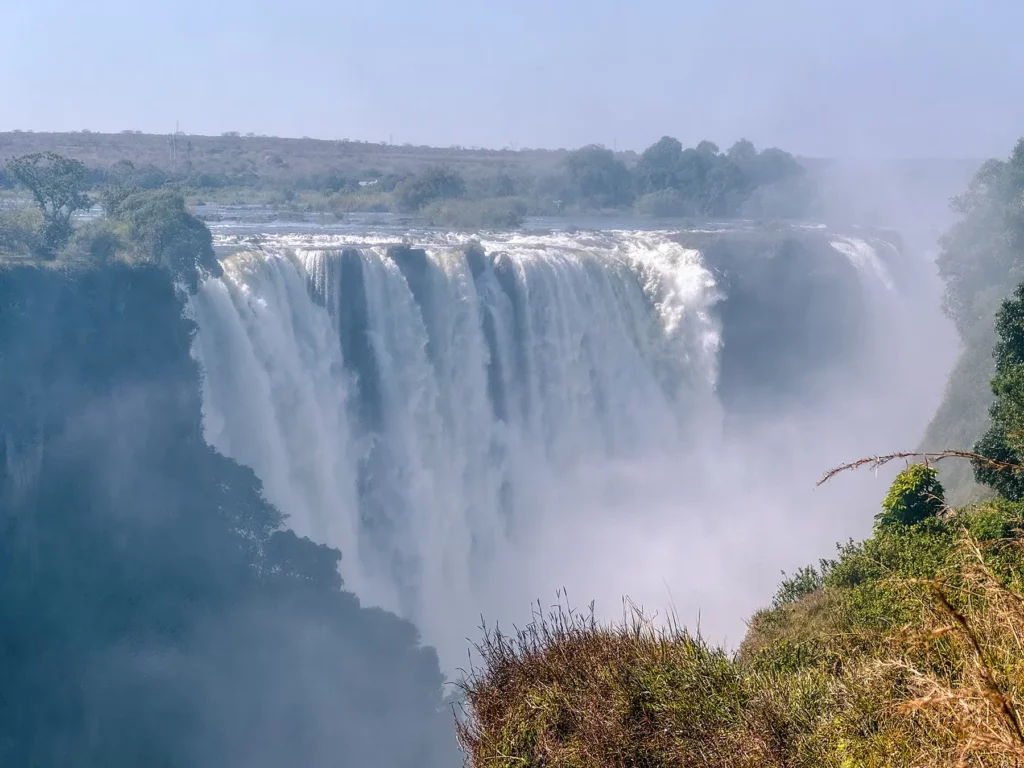
Useful Botswana Travel Advice Links
UK government travel advice for Botswana
USA government travel advice for Botswana
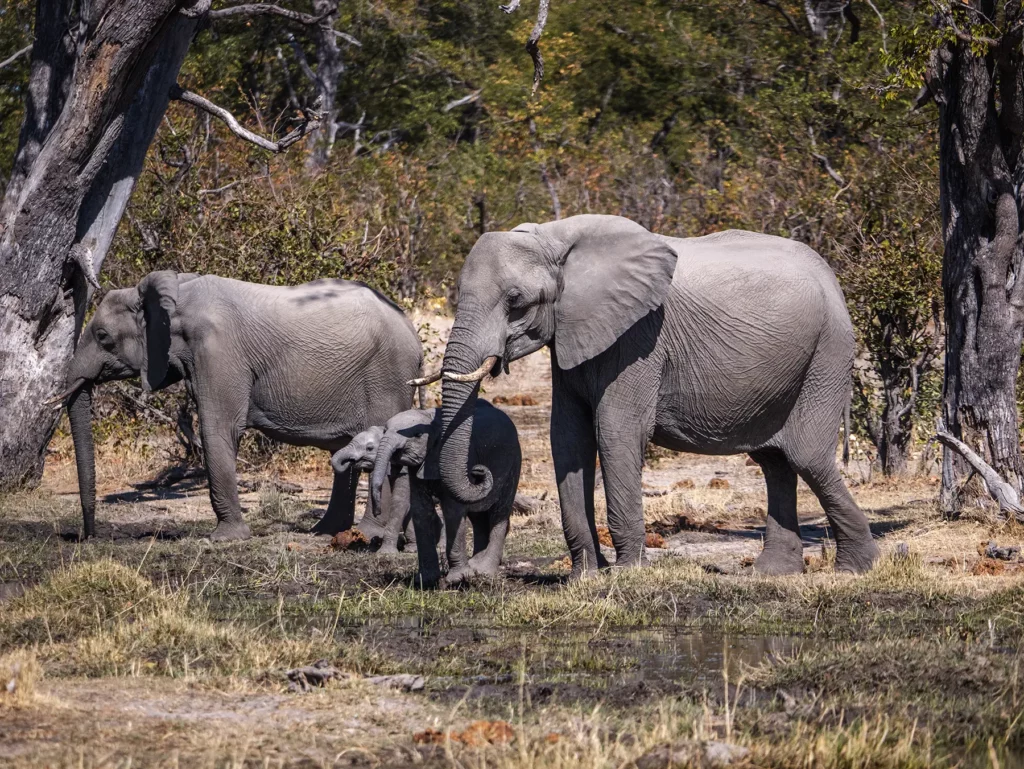
My Two Favourite 7-Day Botswana Safari Itineraries
I have crafted two of the perfect 7-day Botswana safari itineraries below based on both my personal experience and after conducting copious research on the topic.
I have also considered the distance between the parks and driving times in order to come up with the most enjoyable itinerary.
Click the links below to jump to each of the itineries.
7-Day Okavango Delta Botswana Safari Itinerary
The first 7-day Botswana safari takes a circular route starting and ending in Maun, passing through the wildlife-rich Moremi Game Reserve and Khwai Community Area in the Okavango Delta. The itinerary blends land and water-based activities, including game drives, night safaris, and mokoro rides.
7-Day Khwai & Chobe Botswana Safari
The second 7-day itinerary begins in Maun, moving northeast through the Khwai Community Area within the Okavango Delta, known for exceptional night drives. It continues onward to Savuti in the famous Chobe National Park, renowned for its high concentrations of wildlife, including elephants and predators. The itinerary concludes with a boat safari along the bustling Chobe Riverfront near Kasane.
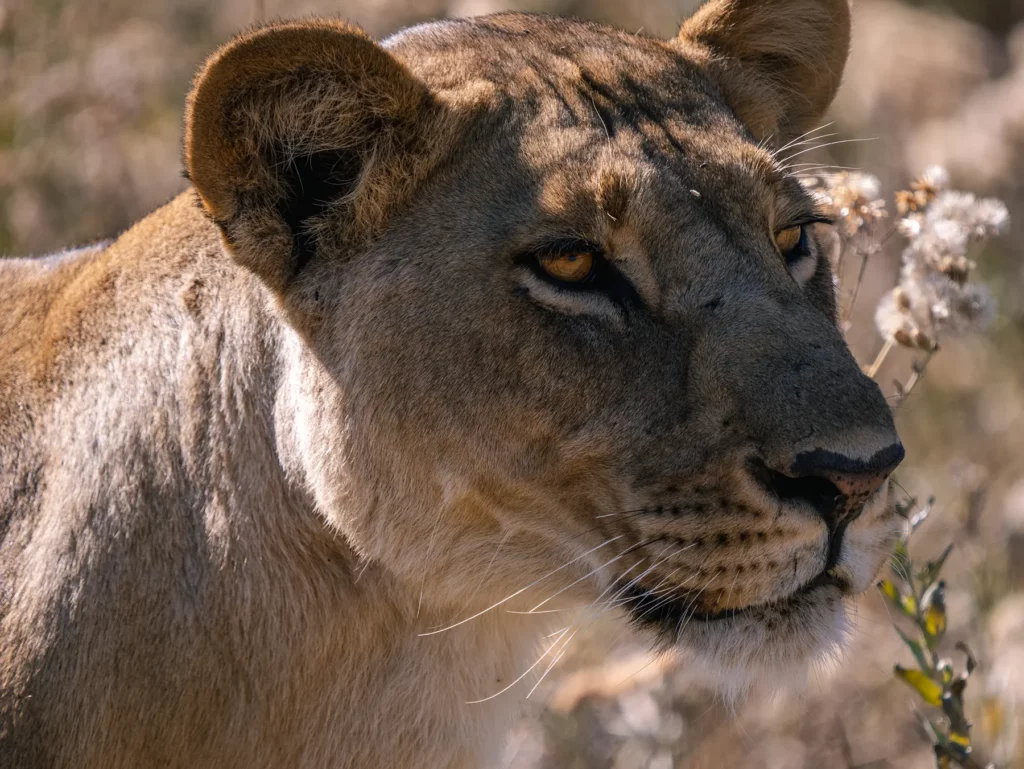
Option 1
7-Day Okavango Delta Botswana Safari Overview
The itinerary below begins in Maun before heading north into Moremi Game Reserve in the Okavango Delta, Botswana’s oldest and most diverse wildlife reserve.
After spending a few days in the Okavango Delta, you’ll continue to the edge of the reserve to the Khwai Community Area. This privately owned conservation area is one of a few places in Botswana where you can do game drives at night, allowing you to see animals and behaviours that are rarely seen during the day.
Quick Facts:
Average Driving Time Per Day: 1.75 hours, excluding game drives.
Best Times of Year: July to September is best, coinciding with peak flood levels in the Okavango Delta. For more guidance, visit the Best Time to Visit Botswana section of this article.
7-Day Okavango Delta Botswana Safari Map

Day-by-Day Breakdown of the Perfect 7-Day Okavango Delta Botswana
Click any of the days below to jump to my full notes on that day.
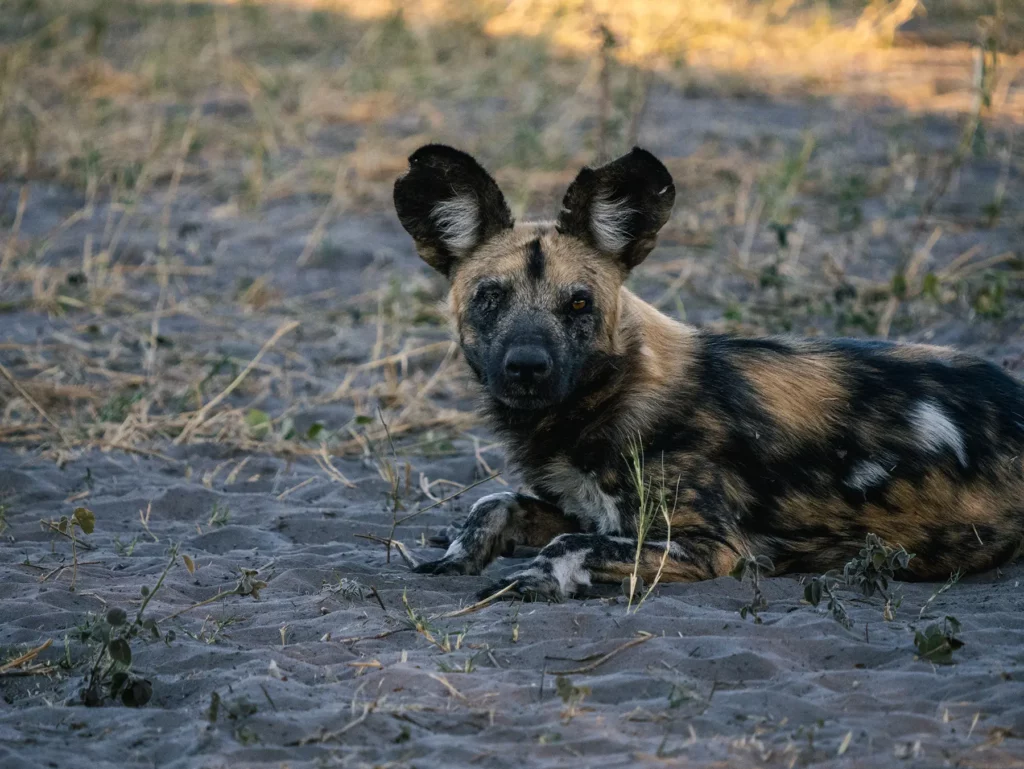
Day 1: Maun
Drive Time (Excluding Game Drives): 15 minutes
Itinerary
Today is the first day of what will hopefully be an awe-inspiring week! Flights into Maun Airport usually arrive at around 1.00 or 2.00 p.m. Once you’ve landed, you can either head to your hotel to relax after your flight or you can go out to explore the city of Maun.
If possible, try to arrive at least a day before your safari begins. This serves as a buffer in case of any travel delays on the way, and can ensure that you don’t miss a day of your safari!
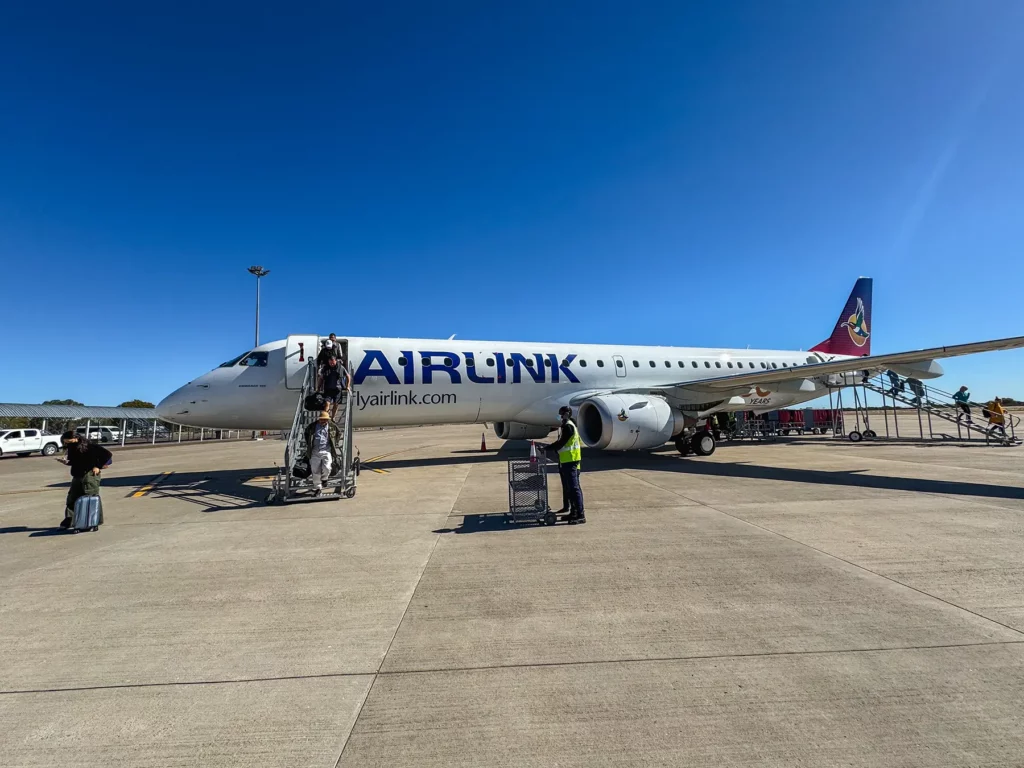
About Maun
Maun is located in the northern part of the country and is the country’s tourism capital. It’s known as the “gateway to the Okavango Delta”, and you can fly into Maun from either Johannesburg or Cape Town in South Africa, both of which have good international connections. Since it’s just a few hours’ drive away from the delta, this is one of the most popular starting or finishing points for safaris in Botswana.
One of Botswana’s largest cities, Maun was founded in 1915 by the BaTawana people. It began as their tribal capital and grew into an important ranching town. As Botswana’s popularity as a tourism destination has grown, Maun has grown with it. However, it’s still a far cry from a bustling metropolis! Today, it has a bit of a frontier town feel, with an interesting mix of traditional residences, modern buildings, and colourful streets.
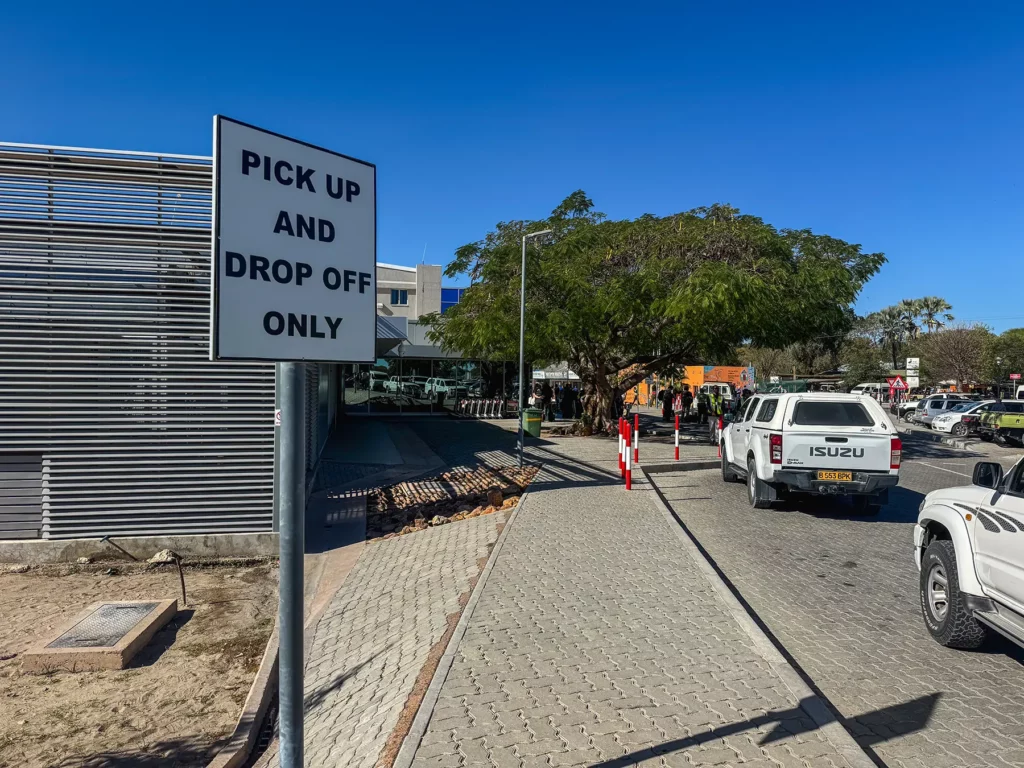
Things to Do in Maun
Maun may be small compared to other Africa cities, but it has a lot to offer visitors. There are some great restaurants and a few interesting tourist attractions that can easily fill your time there.
1. Visit Marc’s Eatery for Lunch or Dinner
Serving up fresh, home-cooked food in a lovely garden setting just outside of town, Marc’s Eatery is my absolute favourite place to go for dinner in Maun.
They offer an international menu with a few artisanal delights from the local market and a surprisingly large vegan and vegetarian selection.
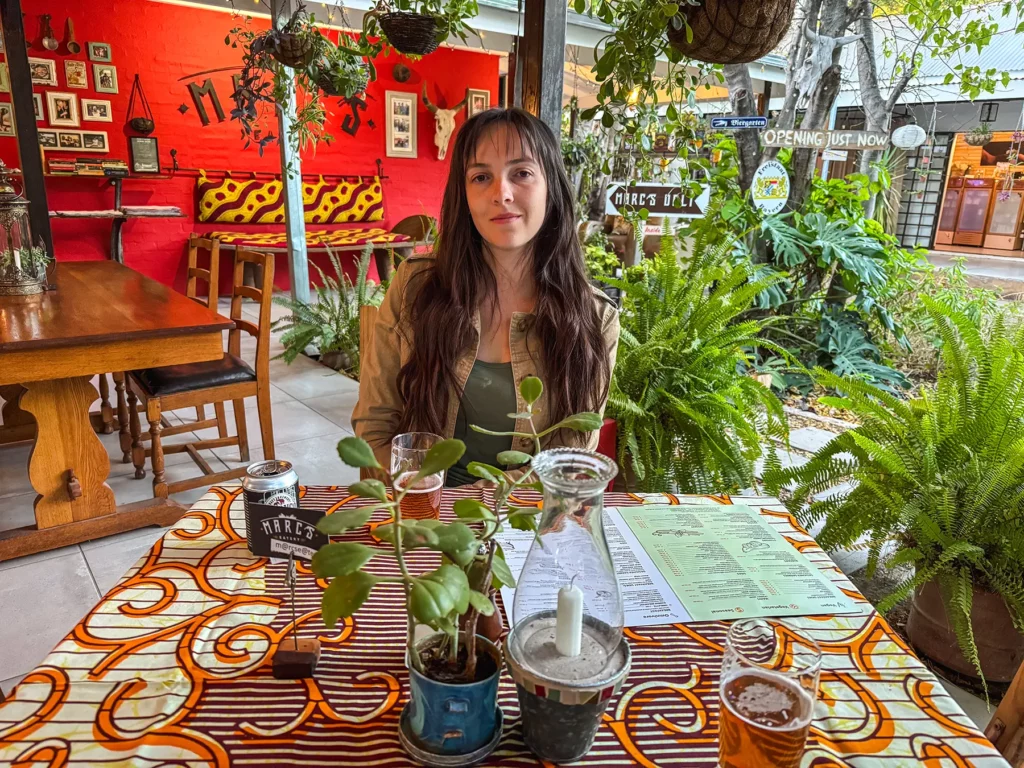
The overall atmosphere is laid back thanks to the eclectic blend of furniture, and you almost feel like you have just wandered into someone’s home – and a very nice home at that!
One of the best things about this place is that they have a deli where you can grab sandwiches and cakes if you need to throw together a picnic lunch. This can be handy when you don’t have access to a kitchen. They even started offering packed lunch boxes for travellers on the go!
I personally haven’t tried this yet, but based on their menu and attention to detail, I have no doubt their lunch boxes are delicious and filling.
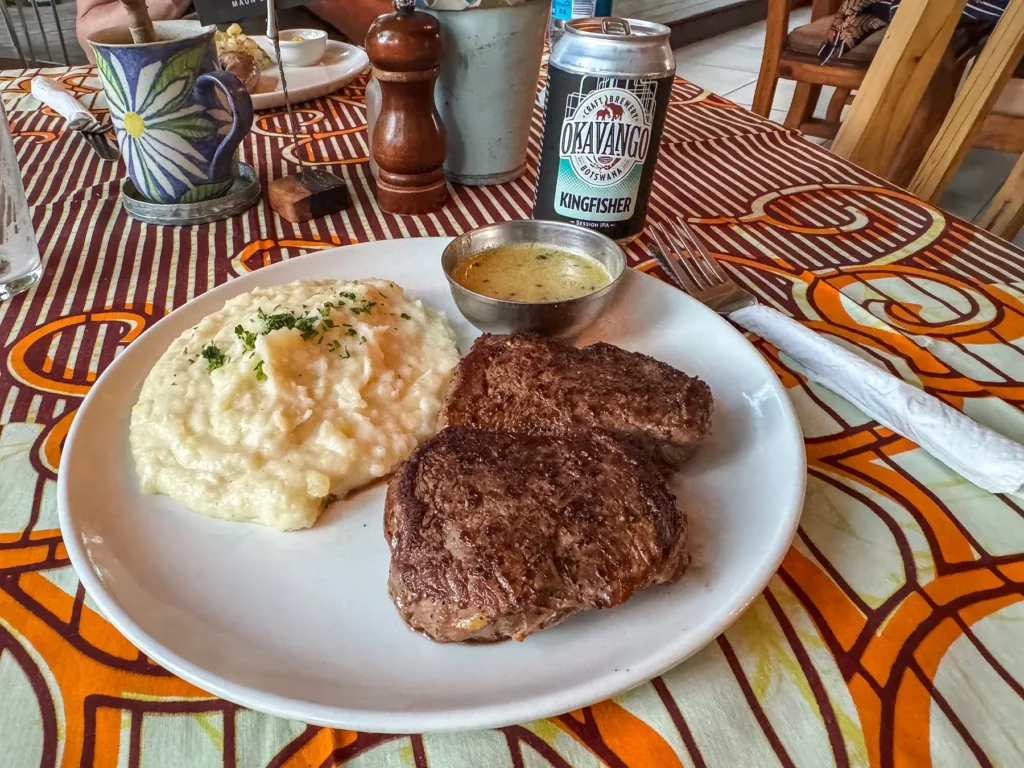
4. Hang Out at The Duck Cafe and Buy Souvenirs
Situated just across the street from the airport, the Duck Cafe and Bar is a family-run business that is part-restaurant and part-souvenir shop.
They serve excellent coffee and an assortment of homemade dishes.
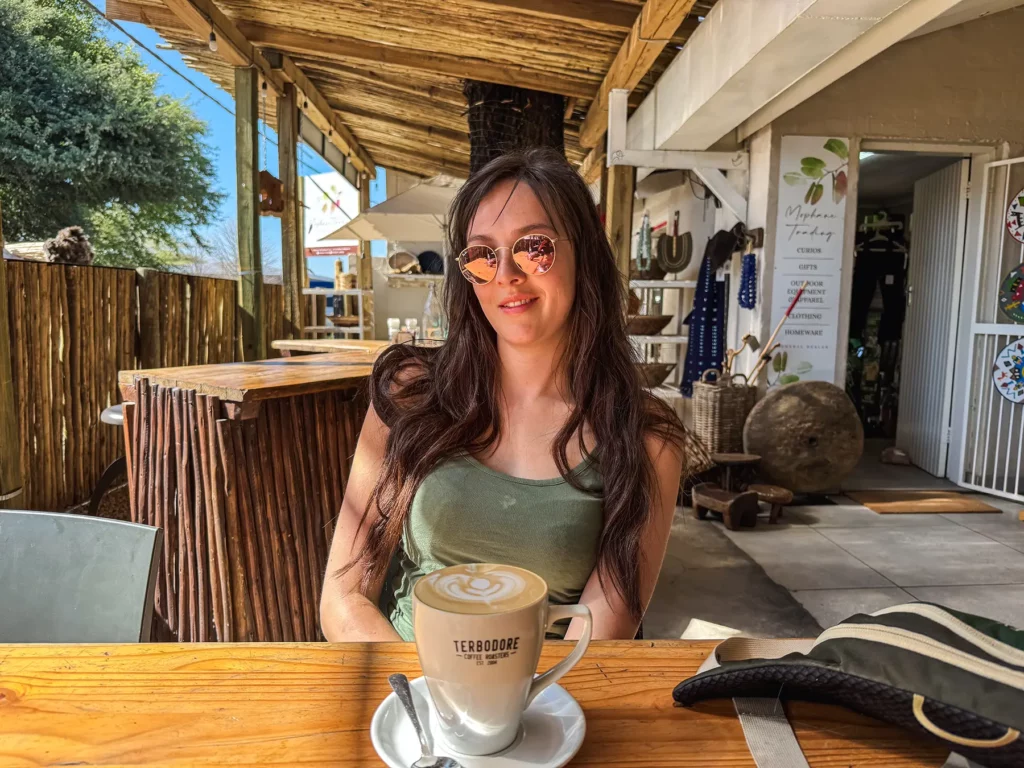
Here you can pick up quirky, locally-made handicrafts that are perfect as souvenirs. One of the reasons I love this place (besides the coffee) is that there are marked prices on everything, so there’s no need to haggle. If you can’t find the perfect souvenir, you can go to the nearby souvenir shop across the road where you can find high-quality souvenirs that are reasonably priced (again – no need to haggle!). This is a great spot to buy hand-carved animals and books about Botswana.
I highly recommend stopping by at the start of your trip to see what is on offer and then coming back and buying it before you go. This saves you from carrying heavy and potentially fragile items throughout your safari.
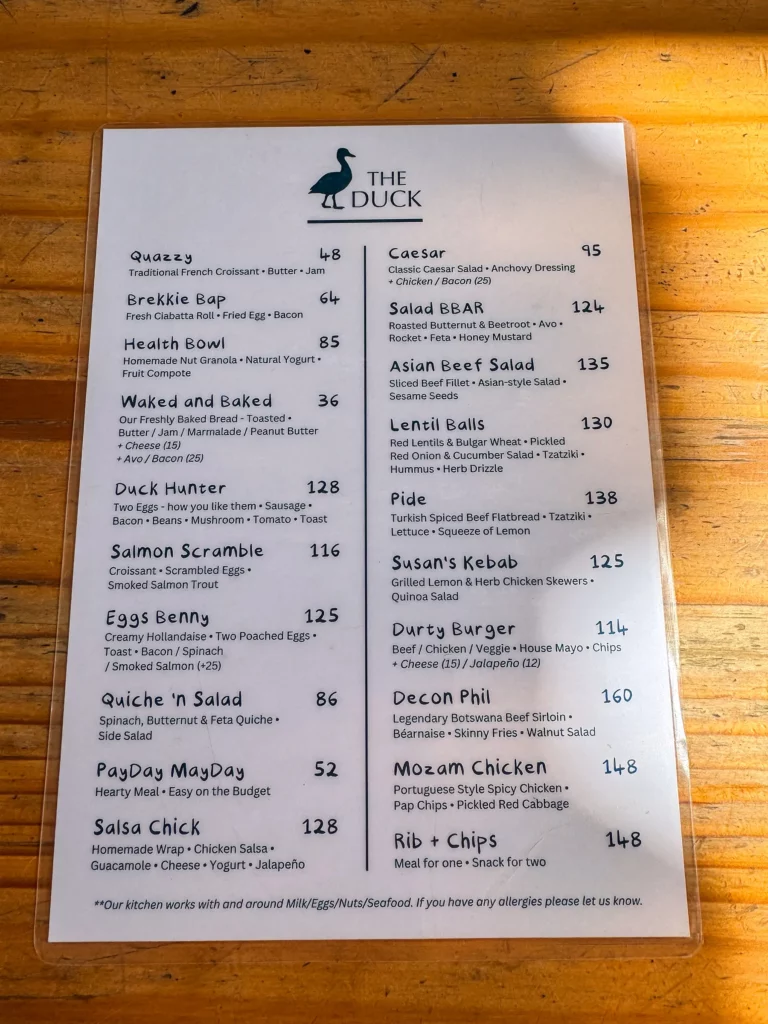
3. Visit the Nhabe Museum
If you want to learn more about the history and culture of the Okavango Delta, look no further than the Nhabe Museum. This fascinating spot is a treasure trove of artefacts and exhibits with an emphasis on the Ngamiland tribal heritage. You can learn more about everything from art and basket weaving to the local wildlife, and walk through a living museum that makes you feel like you have stepped back in time.
The museum is located in an old British colonial building built in 1939. It was used during World War II to spy on German-occupied Namibia. It’s a great place to get an introduction to the region, especially on your first day when you’re still trying to get your bearings. They have a small gift shop on site but I would wait until the very end of your trip to buy souvenirs.
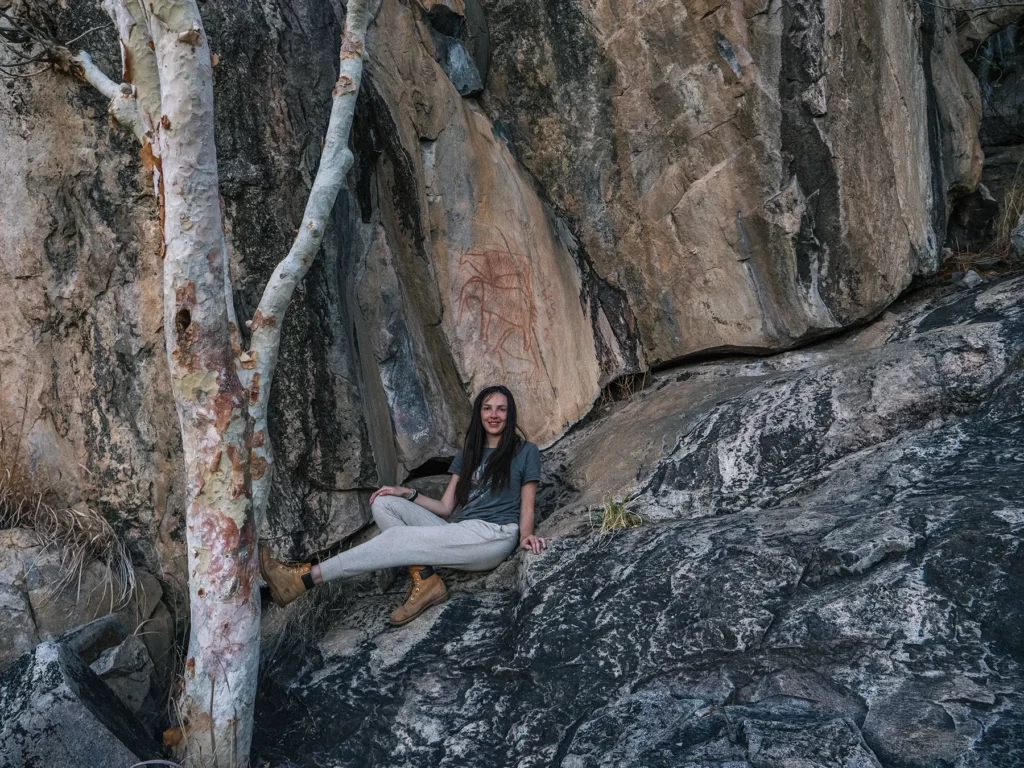
4. Take a Scenic Helicopter Flight
Maun is surrounded by breathtaking scenery and a helicopter flight will give you a bird’s eye view of it! During the flight, you’ll cross massive floodplains teeming with wildlife. It’s fascinating to see the maze of woodlands, grasslands, and channels that make up this region, and it gives you a completely different perspective on this unique ecosystem.
Many of the scenic flights from Maun fly with their doors off, giving you an even better view and making it feel like you are truly immersed in the landscape. Flights usually last around 45 minutes, so there is plenty of time to take in the views and get some great photos. A lot of the areas that the scenic flights cover aren’t accessible by land, so this is one of the only ways to see these places.
If you want to make the occasion feel even more special, you can opt for a luxury version which can include anything from a stop at an upscale lodge in the delta for lunch, or a trip to a remote island where you can sip champagne while enjoying the scenery.
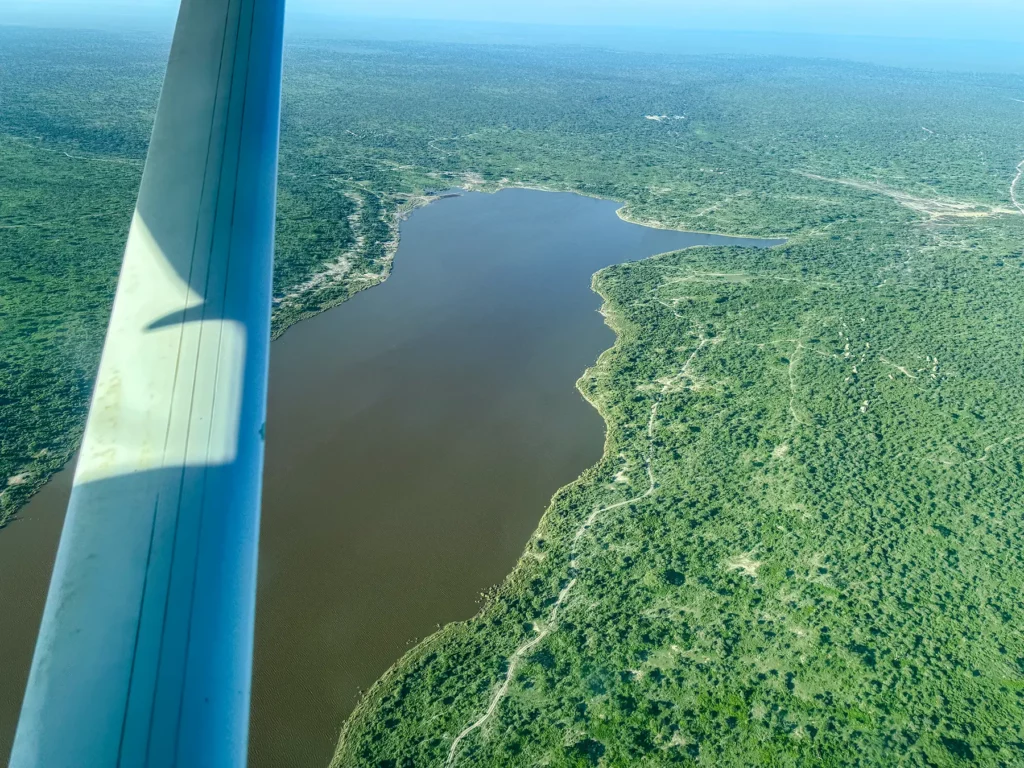
Tips for Visiting Maun
Although Maun is considered big by Botswana standards, it’s still a pretty small town. However, it is really spread out. If you usually like to walk everywhere, make sure to check how far your guest house is from both the airport and the centre of town before booking it so that you know exactly what to expect when you arrive.
Private taxis are inexpensive and can be arranged by your lodge. A taxi from the Waterfront to Marc’s Eastery was around $3 each way from memory or $7 to the airport.
Keep in mind that even though it’s generally a safe city, Maun does sometimes have petty crime like pickpocketing. Make sure to keep your valuables out of sight in public places and don’t walk around alone at night or in secluded areas. Also, don’t forget that Maun is completely surrounded by nature. There are crocodiles in the river so don’t walk too close to the water, especially after dark.
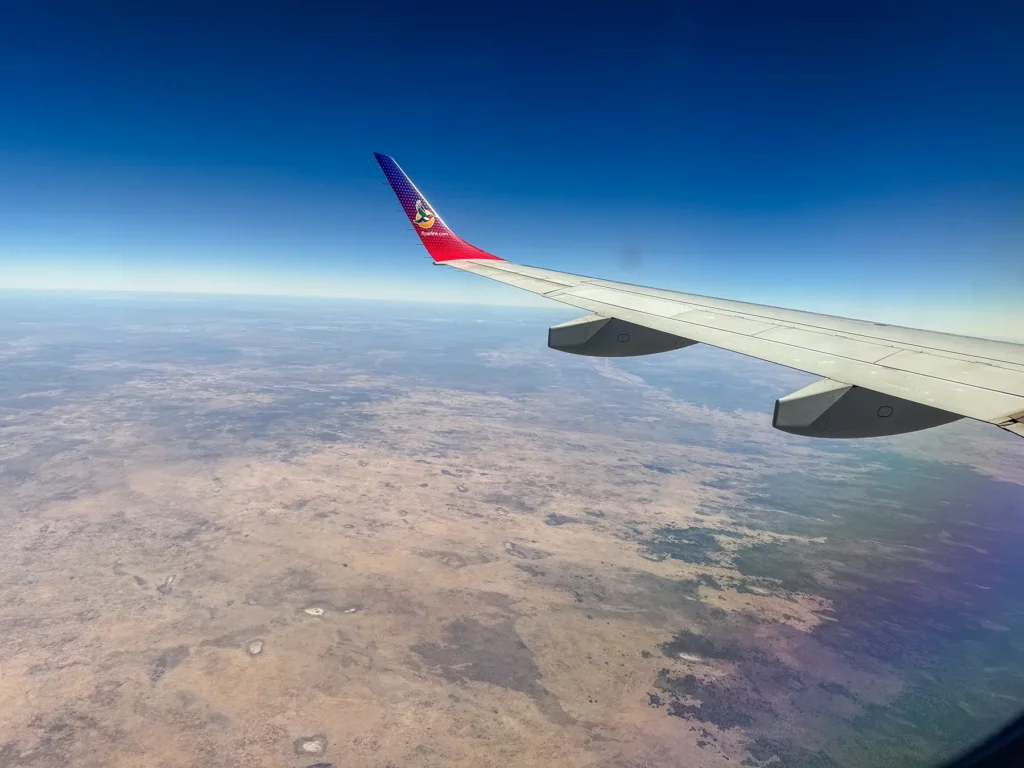
Where to Spend the Night
As you would expect from a tourist town, Maun has several nice lodges and guest houses where you can stay. Many of these are located along the Thamalakane River.
My favourite place to stay in Maun is The Waterfront. It’s just a 15-minute drive from the airport and the staff are incredibly friendly. Breakfast is included in the room rate and everything is clean and modern. It’s one of the best-rated establishments in Maun and is extremely comfortable.
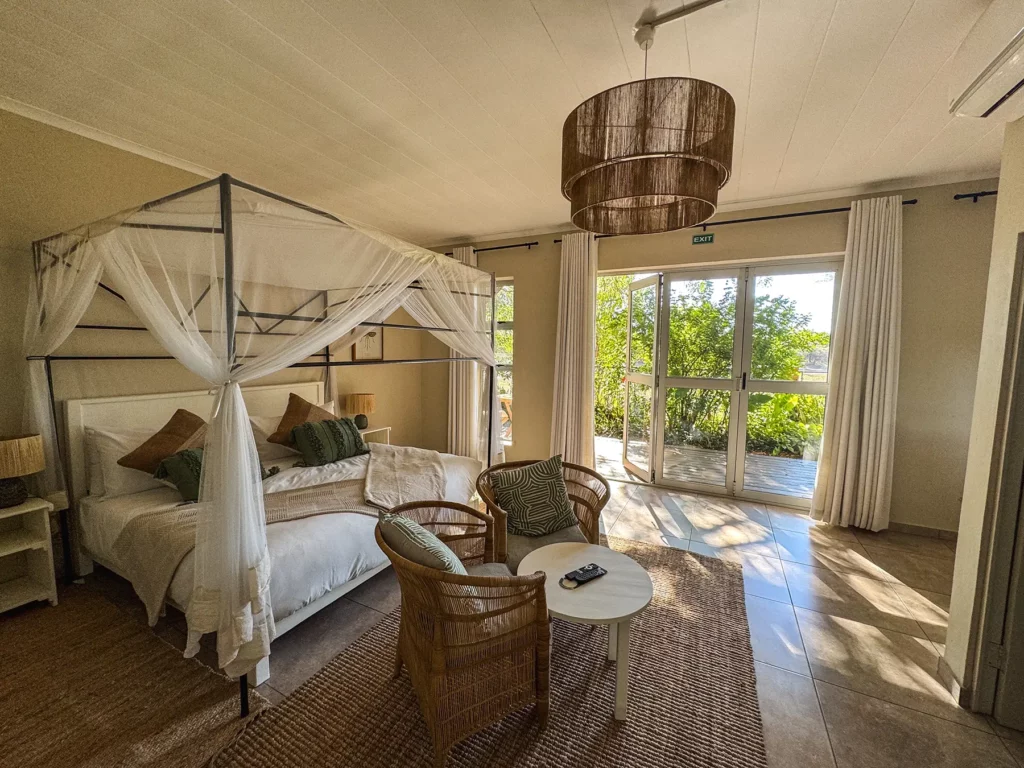
My Experience Visiting Maun
The peaceful atmosphere of this quiet town made me feel completely at ease. I particularly enjoyed how welcoming the local residents were, and I experienced no overbearing selling tactics from vendors in curio shops. I had consistently great experiences when eating out – I felt like a regular at Marc’s Eatery for dinner, while The Duck Cafe became my go-to lunch spot. Starting each day at the Waterfront B&B was a treat, with their excellent breakfasts and attentive staff.
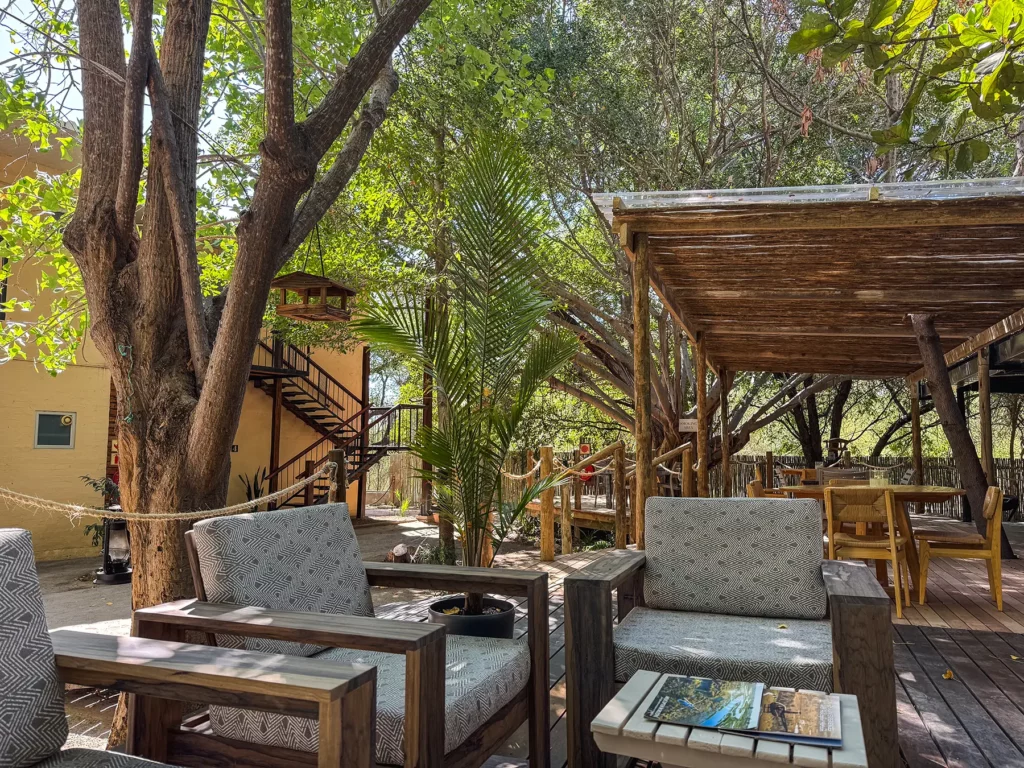
Day 2: Maun to Moremi Game Reserve (Okavango Delta)
Drive Time (Excluding Game Drives): 3-4 hours drive or 30-45 minute flight
Today you’ll make your way to the Okavango Delta and begin your exploration of the beautiful Moremi Game Reserve. This is one of the most highly sought-after safari destinations in Botswana and is famous for its wildlife density and variety.
You can either fly or drive to Moremi Game Reserve, which lies approximately 95 miles from Maun.
Whether you drive or fly, you should arrive in time for a filling lunch before heading out on an afternoon game drive. If you are staying at one of the lodges, you’ll have time to eat there and if you’re doing a mobile safari, you’ll have a lovely picnic lunch, whist the team sets up camp.
Moremi Game Reserve (Okavango Delta) Map

Itinerary
To get from Maun to Moremi takes around 3-4 hours by road or a 30-45 minute flight. The drive begins along a stretch of smooth, tarred road which transforms into a sandy track. This is where the “Africa massage” begins. While it may be a bit bumpy, the mopane woodland through which you’re driving will provide excitement – I’ve spotted a herd of elephants including a young calf on this road.
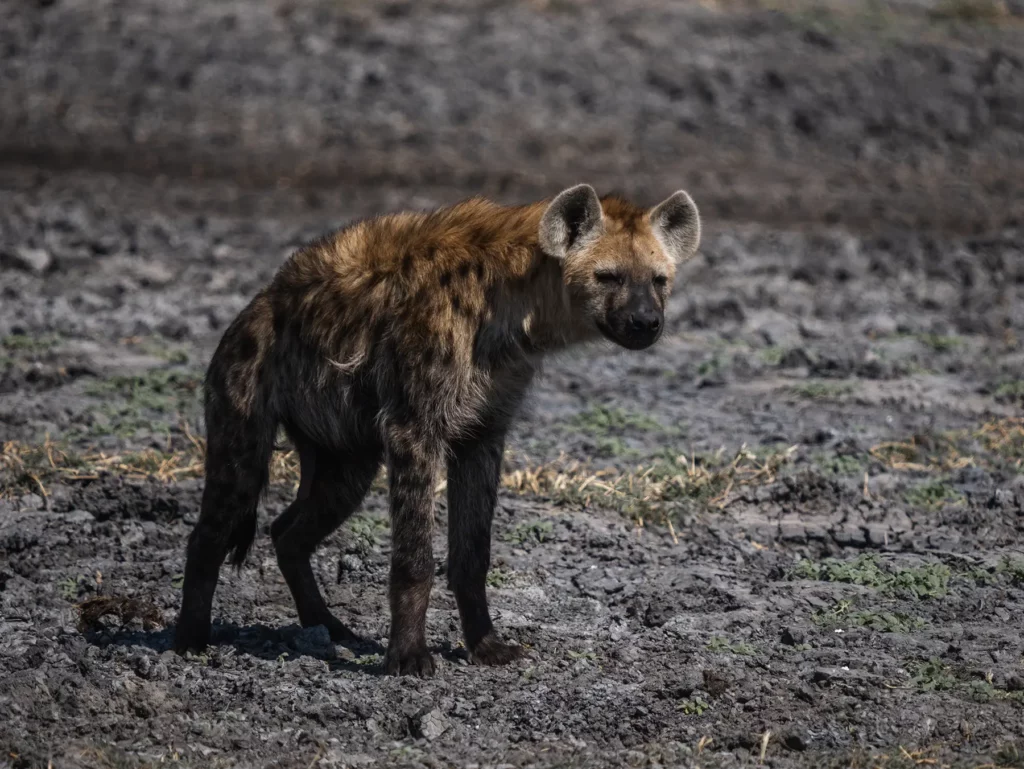
Once you’ve reached the cattle fence that separates the game reserve from the surrounding countryside, the game drive truly begins! You can expect to start seeing wildlife pretty much as soon as you enter the park, such as impalas and giraffes.
If you’ve arrived by plane, you’ll be collected at the Moremi airstrip by your lodge or tour operator and be driven to your lodge or mobile camp for lunch. The drive to the lodge almost feels like a mini-game drive so make sure to keep your eyes open for wildlife!
In the late afternoon, you’ll head out for your first evening game drive. Don’t forget to bring some layers of clothing with you when you go as it can get cold quickly when the sun starts to set!
Moremi is located to the east of the Okavango Delta and you’ll pass tranquil blue waterways, swathes of untouched mopane forest, and grasslands, giving you the opportunity to spot elephants, leopards, lions, and more. You’ll get back to the lodge or mobile camp in time for a quick shower, dinner, and a few hours of relaxation before bed.
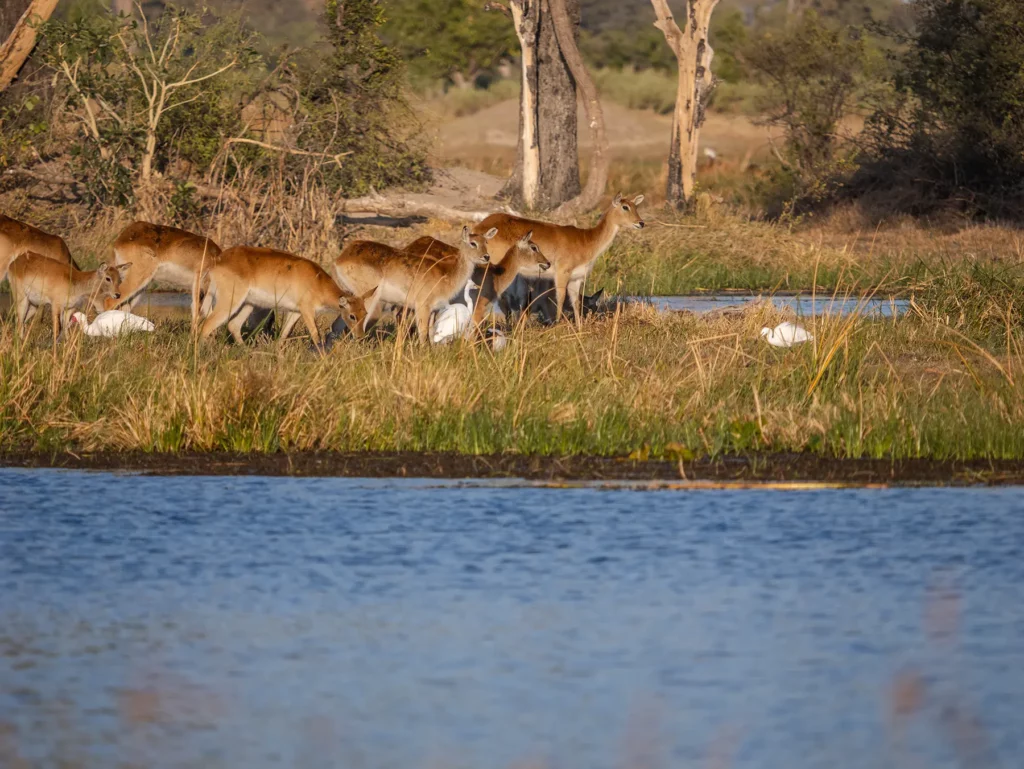
About Moremi Game Reserve
The world-renowned Moremi Game Reserve has the well-deserved reputation of being one of the best safari destinations in Botswana. Named after Elizabeth Moremi, wife of Chief Moremi III of the BaTawana tribe, it’s the oldest protected area of the Okavango Delta and covers about 20% of the region.
From floodplains to woodlands, Moremi’s diverse habitats support a bewilderingly diverse range of wildlife. You can see all of the Big Five (lion, leopard, elephant, buffalo and rhinoceros) as well as wild dogs, hippos, giraffes and floodplain animals.
Currently, the only place to see rhinos is Chief’s Island as it’s the only place they can keep them completely safe from poachers.

Tips for Visiting Moremi Game Reserve
If you want to see the Okavango Delta in full flood I’d recommend visiting Moremi between July and September.
Since all the accommodation options are located within the park, most of the lodges and camps aren’t fenced. This means that wildlife can wander freely throughout the area. Staff will escort you wherever you need to go after dark. This will most likely be when you walk from your tent or accommodation site to dinner and back.
Finally, bring lots of clothing layers with you! The temperatures during a safari can fluctuate from anywhere between 5 degrees Celsius at night to 30 degrees during the day. This fluctuation usually happens when you’re out on safari so you have to be prepared to add and remove layers throughout the day.
From the evening until late morning it can feel bitterly cold, so bring a scarf, gloves, hat, and neck warmer that you can pull up over your face to protect yourself from the wind during a game drive. I personally like to wear a vest top and then put a shirt over that.
I then put a fleece or jumper on and finish it off with a down jacket. Despite all these layers, I find I still get cold so make sure to take the weather seriously.
Many mobile safari companies provide plenty of blankets and hot water bottles, which allow you to stay nice and toasty all night long.
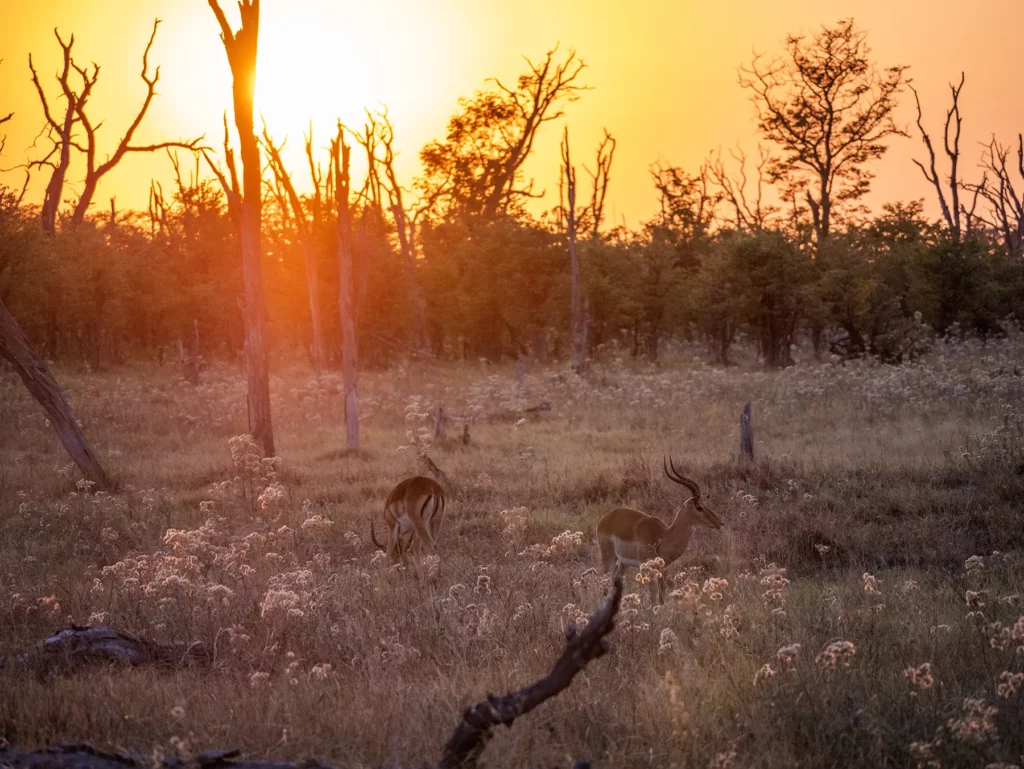
My Experience Visiting Moremi Game Reserve
I experienced some unforgettable sightings in Moremi Game Reserve, thanks to the skills of my guide. I stayed in the Xakanaxa area, where I had my first ever encounter with a side-striped jackal. The evening game drives in this park were particularly spectacular.
One enchanting evening, I watched a family of elephants cross the road behind our vehicle at dusk, their forms outlined against the evening sky as they kicked up dust. Though nothing quite matched the thrill of glimpsing a shy male leopard hiding in the Mopane Woodland as the pink light of sunset faded to purple.
You can watch a video of my experience visiting Moremi Game Reserve in the Okavango Delta below.
Where to Spend the Night
My favourite way to explore Moremi is in luxury mobile tented camps. These are essentially tented camps with comfortable spacious beds and ensuite bathrooms, but they have the added benefit of being easy for your team of porters to transport.
Mobile camping takes place in the heart of Moremi Game Reserve putting you in prime wildlife viewing areas.
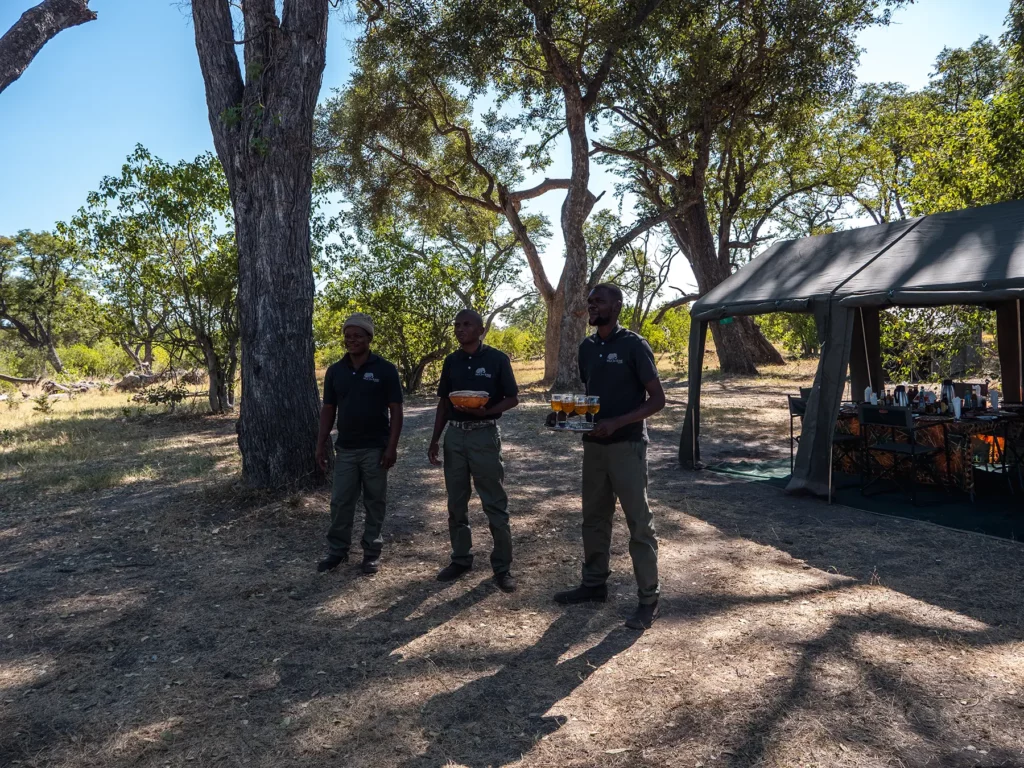
Day 3: Moremi Game Reserve (Okavango Delta)
Total drive time (excluding game drives): 0 hours
Today, you’ll have another incredible day at Moremi Game Reserve! Depending on your guide (and the animals, of course) you may return to some of the same spots as Day 2, or you may go off in a completely different direction.
Itinerary
Your alarm should be ringing at 5.30am, as it’s time to set off for a sunrise game drive. Expect to explore forests, lagoons, riverbanks, and floodplains as you creep through the game reserve, the engine of your 4×4 vehicle purring as the light grows.
Your morning game drive will last until roughly 11.30am, so that you can get back to your camp or lodge for lunch. If you are staying in a mobile camp, you may also want to take this opportunity for a shower while the weather isn’t too cold. I can attest that taking a shower in the evening is freezing!
After you are fed, rested and hopefully cleaned up, it’s time to head back out for an evening game drive from 3:30pm. This is the ideal time to spot predators just waking up after napping all day. These hours also offer amazing lighting for photographs, since you will be there right when the sun begins to set. Dinner will be back at camp or the lodge and then an early night in bed – you have another big day ahead of you tomorrow!
Where to Spend the Night
You’ll be staying in the same mobile camp or lodge as the previous night.
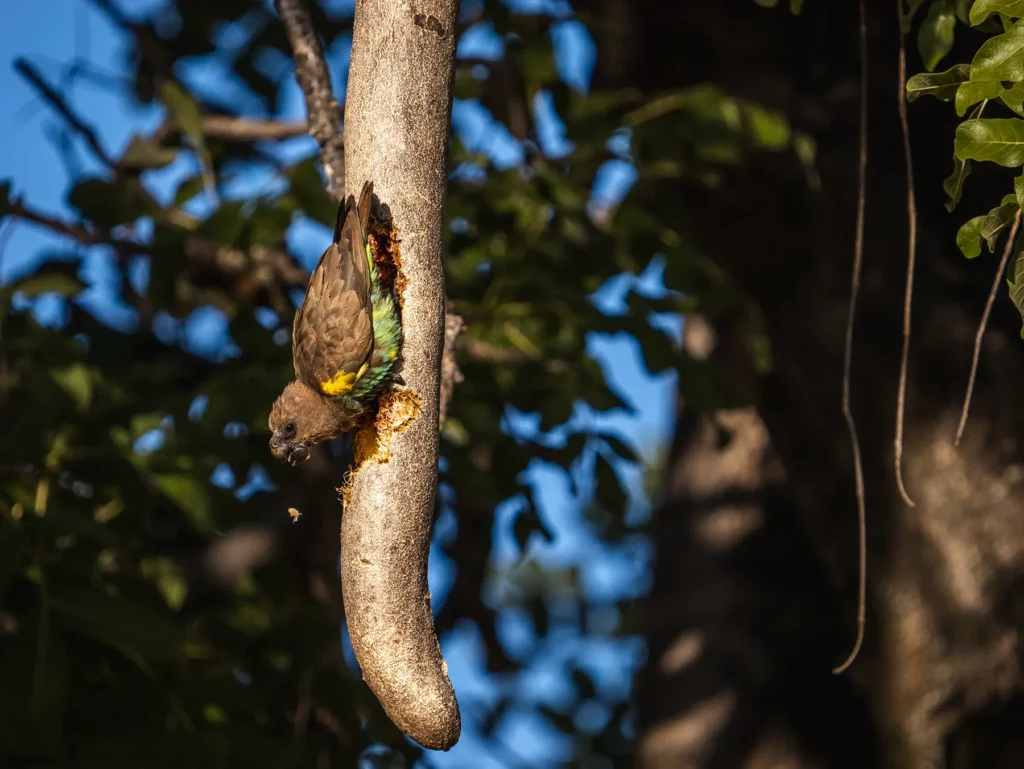
Day 4: Moremi Game Reserve to Khwai Community Area
Total Drive Time (Excluding Game Drives): 4 hours drive or 30-45 minutes by plane
Rise and shine for the drive from Moremi Game Reserve to the Khwai Community Area!
This is a travel day, but overland travel between Botswana’s reserves can often be like an extended game drive. It’s not unusual to have great sightings while you’re en route to your next camp. Sit back, relax, and enjoy the journey!
Khwai Community Area Map

Itinerary
You’ll start your day with a final sunrise game drive in Moremi. You then have the option to take a flight, or to meander your way over to Khwai by safari vehicle.
The drive takes you through the reserve, so it’s essentially another game drive. You’ll either have a picnic lunch at a nice little spot along the way if you’re mobile camping, or you’ll dine at your lodge once you arrive in Khwai. After a meal and a rest, you’ll jump back in the safari vehicle. to start your first evening game drive in Khwai.
The Khwai Community Area is a private concession owned by the indigenous San people. Since this park is privately owned, night drives are permitted here! A night drive is a very exciting prospect, as it allows you to go out after sunset in search of Botswana’s ‘nightlife’ – big cats on the hunt, civets, spring hares, genets and even bush babies.
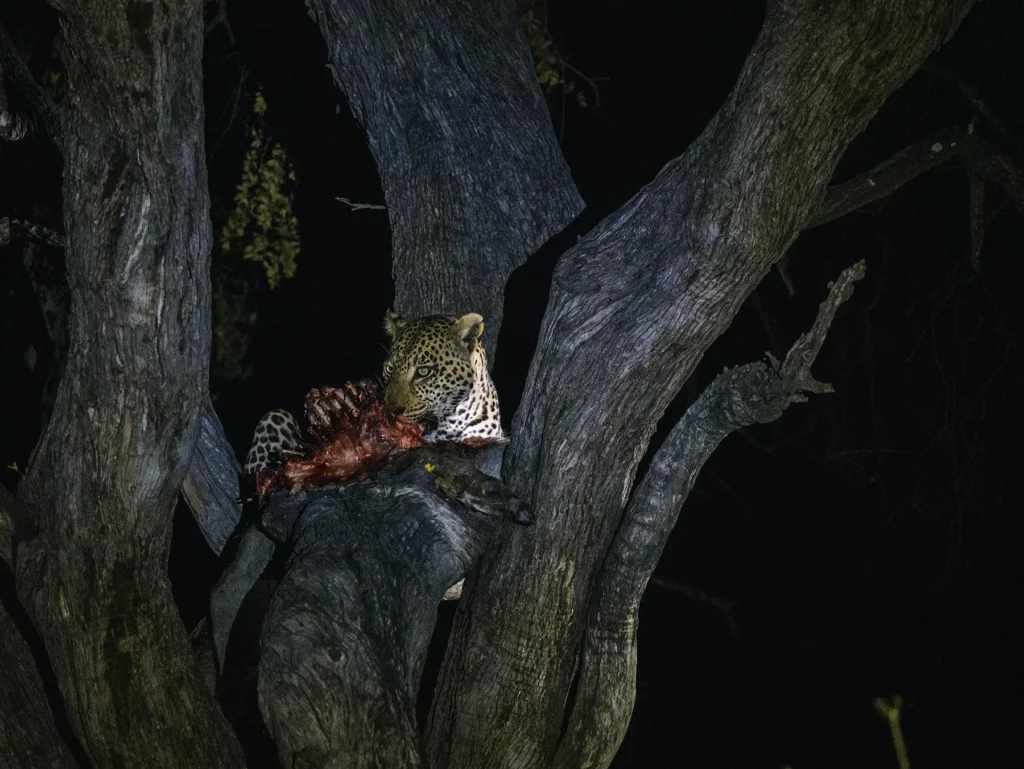
About Khwai Community Area
Located on the edge of Moremi Game Reserve in the northeastern section of the Okavango Delta, Khwai Community Area is a magnificently unspoilt wildlife area. It’s full of diverse ecosystems, including floodplains, lagoons, open grasslands, and forests, making it a great all-round safari destination.
Khwai was originally a hunting region before the local villagers turned it into a conservation area. Most of the population here was relocated from the Moremi region when the Moremi Game Reserve was formed.
There are only around 400 people in the indigenous San community today. They generally live in harmony with the nature around them, following the ancient ways of their ancestors. They also help manage most of the ecotourism initiatives, manage the wildlife of the concession, and actively work to conserve the environment. This is an inspirational example of conservation, tourism, and economic development coming together to benefit everyone.
As you explore the wide variety of ecosystems in the area, keep an eye out for lions, cheetahs, leopards, and hyenas, as Khwai is famous for its predators. There’s also a healthy population of wild dogs here, as well as giraffes, hippos, and elephants.
Be sure to schedule a game drive at night here – it’s your opportunity to see rare nocturnal species like aardvarks, porcupines, and, if you’re very lucky, pangolins.
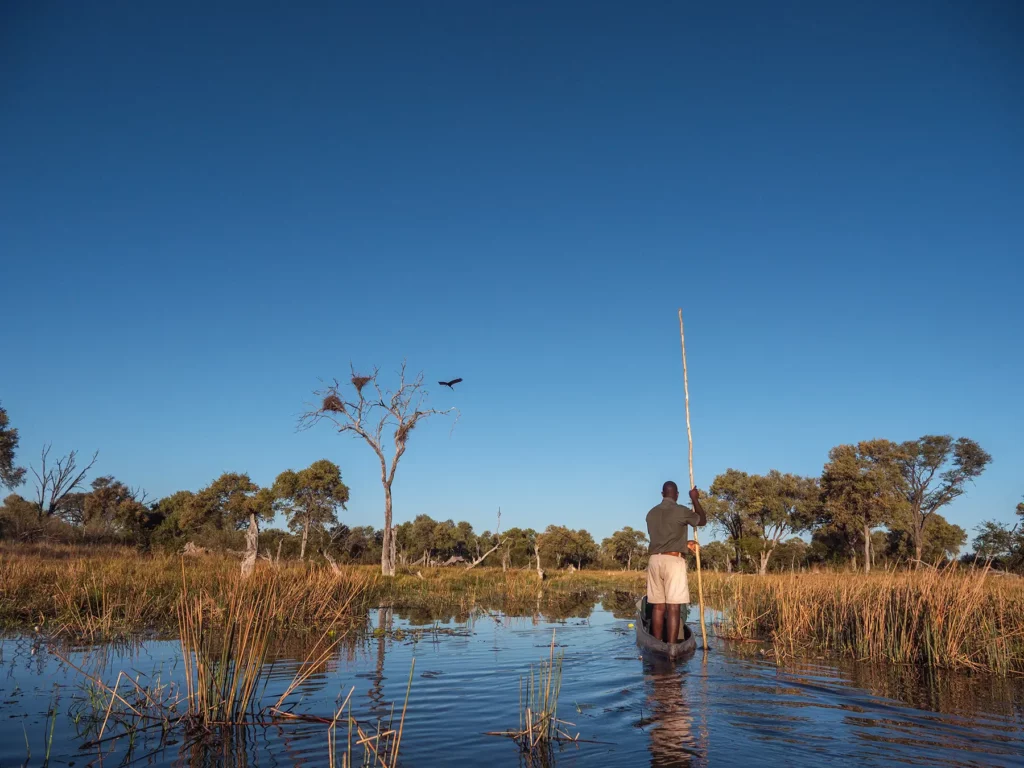
Tips for Your Moving Day to Khwai
- Flying is the most efficient way to get to the Khwai Community Area and the road from Moremi can be quite bumpy.
- However, the drive is only four hours so I tend to drive and you can see wildlife on the way.
Where to Spend the Night
If you’ve chosen the mobile safari option, your camp will be rebuilt in Khwai.
If you’ve opted for a luxury mobile safari, this will all be done for you in advance and waiting for you when you arrive. However, if you are budget camping, be ready to roll up your sleeves and help set up camp when you arrive.
There are also a number of high-end lodges located within the concession.
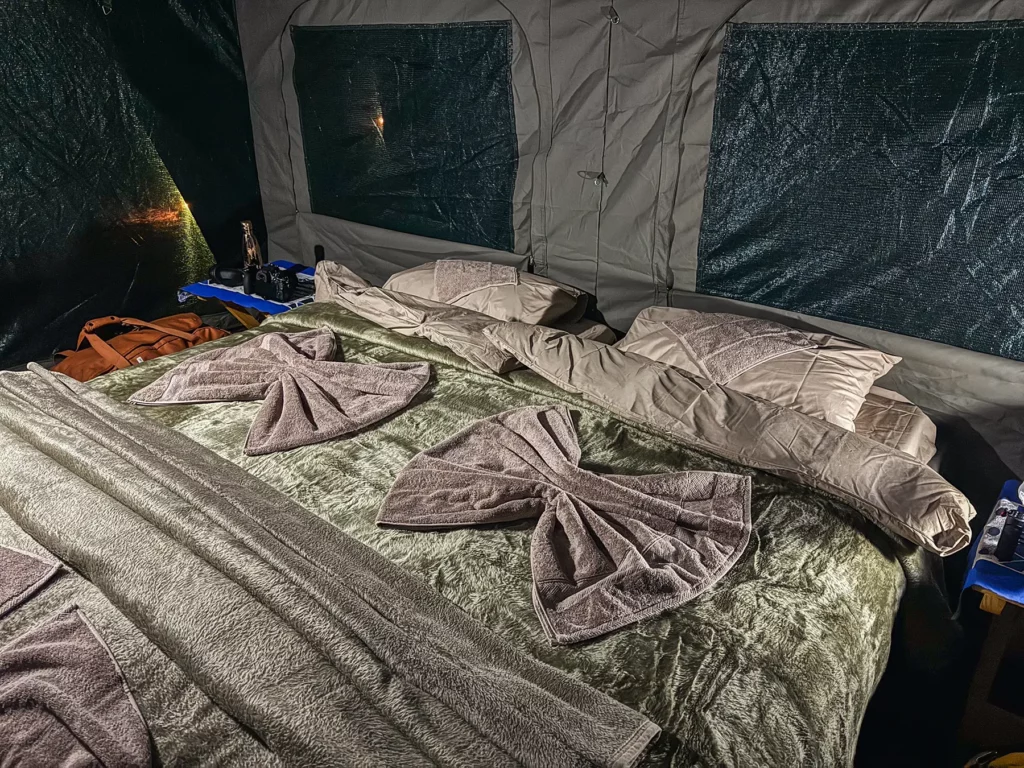
My Experience Journeying from Moremi to Khwai
During our journey from Moremi to Khwai, we stopped for lunch beside a small tributary. What started as a peaceful picnic became quite spectacular when we found ourselves surrounded by elephants. While it was incredible being so close to these magnificent animals, things got a bit tense when one of the bulls showed signs of agitation.
He was flapping his ears and rumbling, which was his way of telling us we’d overstayed our welcome. Thankfully, our guide kept his cool and had us slowly retreat to our vehicle before clapping his hands to encourage the elephants to move away. It felt like a close call, but it’s also one of those unforgettable safari moments that I’ll be telling people about for many years to come!
We reached the Khwai Concession as the day was winding down, passing through Khwai Village near the entrance.
I found it encouraging to see such a good example of community-based ecotourism at work. The local San people who own the concession live in such harmony with the natural environment. It seems like a real success!
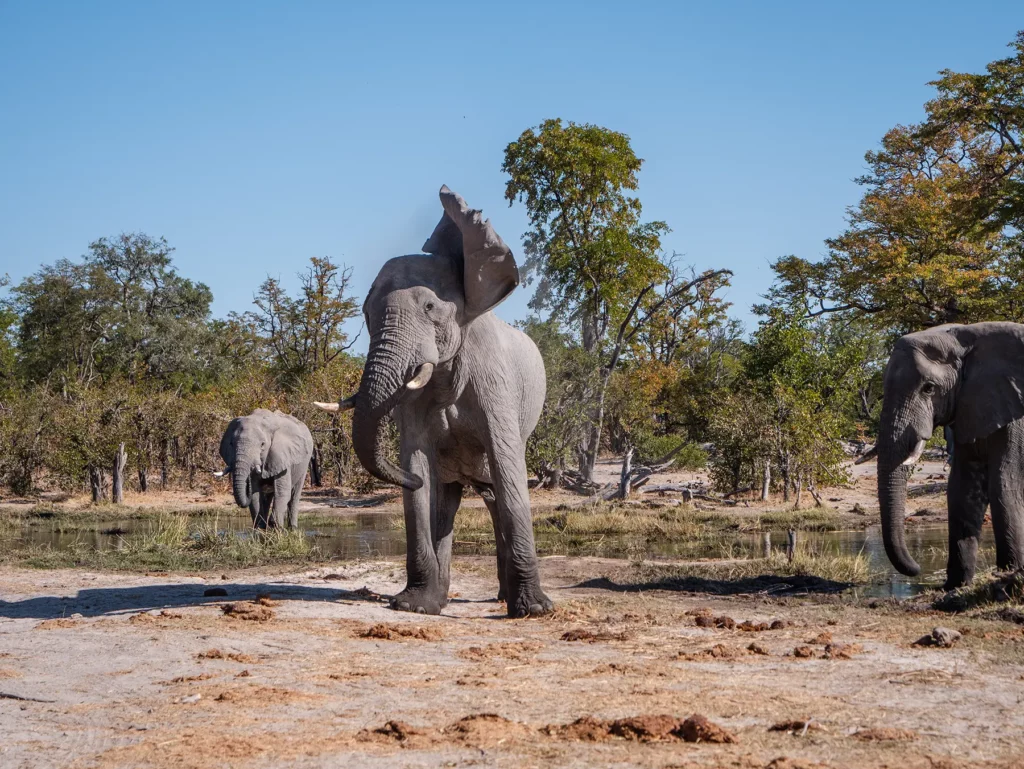
Days 5 – 6: Khwai Community Area
Drive Time (Excluding Game Drives): 0 hours
You’ll start the day with a morning game drive, and you’ll get back to your lodge or camp in time for lunch.
After eating and showering, you’ll venture back out into the wilderness for a traditional mokoro ride that will offer you a completely different perspective of the park.
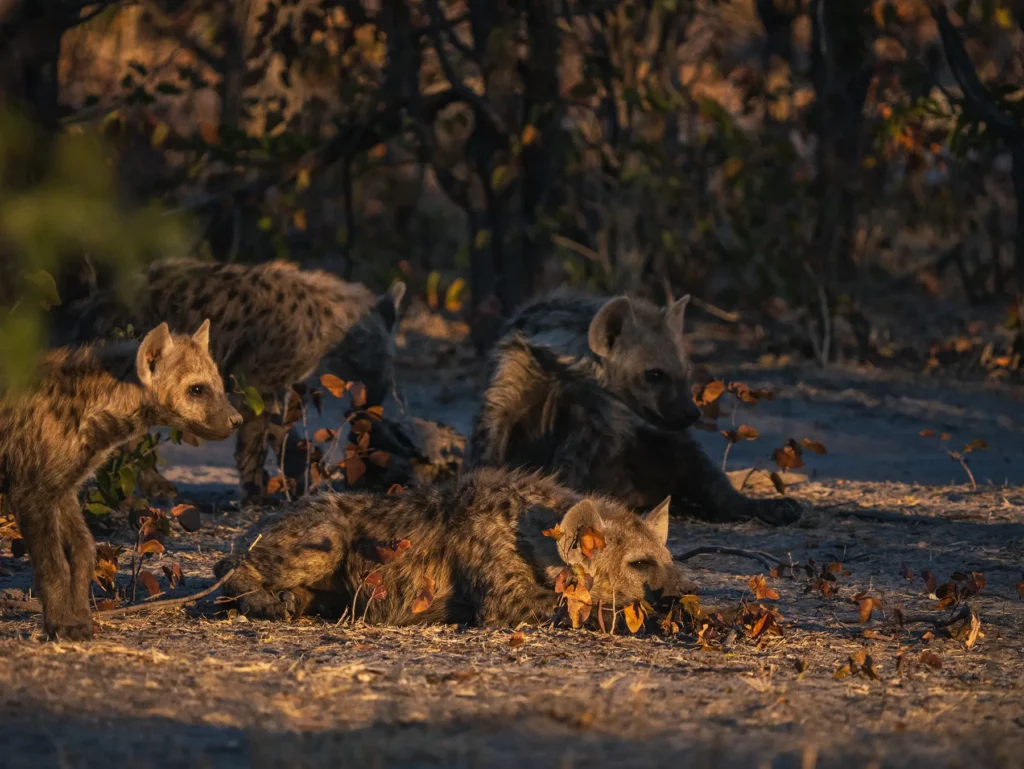
Itinerary
You’ll want to get out the door early again today for your sunrise game drive. There are healthy populations of leopards, lions, and wild dogs here, and predators tend to be the most active right around sunrise and sunset. You certainly don’t want to sleep in and miss all the action!
After a couple of hours of exploring the park, you’ll head back to your campsite or your lodge for lunch.
In the afternoon, you’ll head out for a gentle ride on a mokoro, which is a traditional dugout canoe.
Travelling by mokoro is one of the best ways to get up close with wildlife that may otherwise be disturbed by the sound of the 4×4. Also, traversing the waterways in places unreachable by 4×4 increases your chance of seeing animals hiding deeper in the bush.
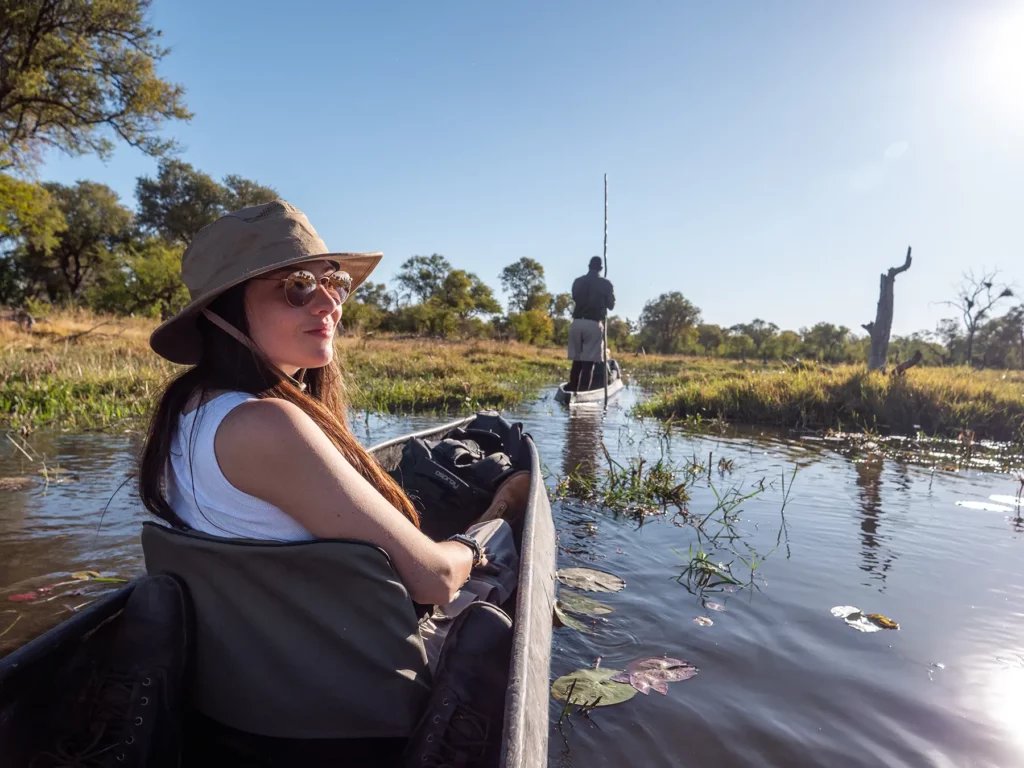
Where to Spend the Night
You’ll be spending the next two nights at the same lodge or campsite as you did on the first night here.
Tips for Visiting Khwai Community Area
Khwai is a great year-round destination to visit. The water levels tend to ebb and flow throughout the year but there is always something interesting to discover. Your guide will know the best places to go.
Since this is the only place on the itinerary that allows game drives at night, I suggest taking advantage of this opportunity and going out for game drives each night. The wildlife & behavours you see will be different from your daytime sightings, and the whole experience is just totally unique. In some ways, it makes you feel a little more in touch with the world around you.
Much like Moremi, the camps and lodges in Khwai Community Area are completely unfenced which means that you may get some unexpected animal visitors from time to time. Hyenas and hippos in particular seem to show a special interest in campsites, so staff will escort you around after dark, even if you’re simply leaving the restaurant to go back to your room after dinner.
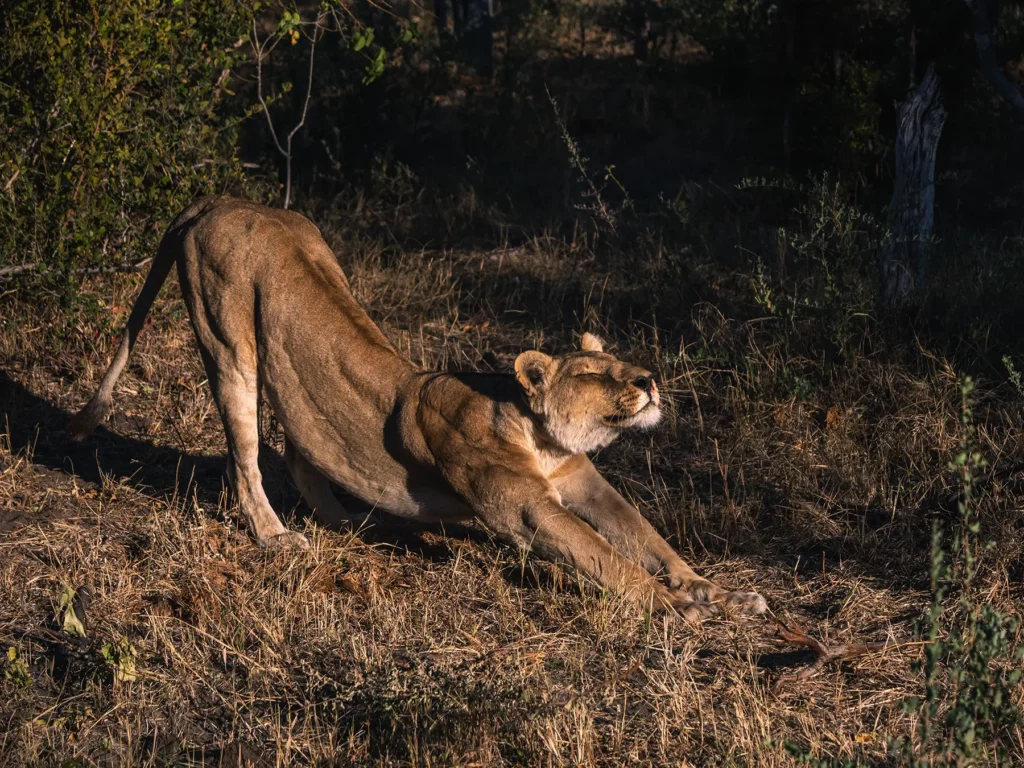
My Experience Visiting Khwai Community Area
We set up at Khwai Safari Grounds, which is perfectly located right alongside a lush tributary. The wildlife viewing started right from our camp, with hippos, waterbuck, elephants, warthogs and impalas all making appearances.
I was particularly impressed with our local guide’s deep understanding of the bush, when he managed to track two lionesses who were stalking buffalo. While other vehicles headed off elsewhere, we were lucky enough to be able to follow these cats for hours, completely on our own.
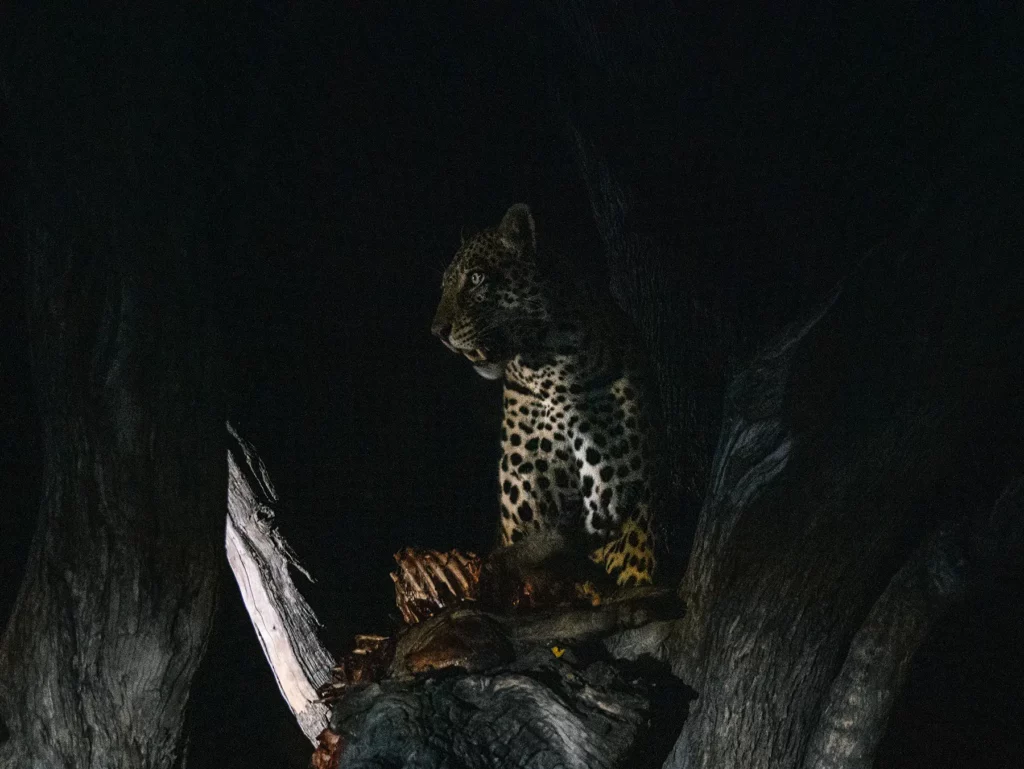
Taking a mokoro trip in the afternoon showed us a completely different side of the delta. Gliding silently through the waterways, we got much closer to the wildlife than we could in the 4×4, and it really felt like we were immersed in nature. I had to smile when our guide and poler pointed out a tiny green frog that I would have completely missed without his sharp eyes.
Being in a private concession meant that we could go out after dark, and one night drive turned out to be particularly special. We came across a male leopard who treated us to quite a show – watching him leap into a tree and feast on a kill is something I won’t forget in a hurry.
You can watch a video of my experience visiting Khwai Conservation Area in the Okavango Delta below.
Day 7: Khwai Community Area to Maun
Drive Time (Excluding Game Drives): 5 hour drive or 30-45 minute flight
After one last morning game drive, it’s time to make your way back to Maun. By road, the journey will take around five hours and you’ll be more or less backtracking your way through Moremi Game Reserve. Alternatively, you can take a 30-minute flight back to Maun.
Itinerary
Although it’s a long way back to Maun, you still have time for a morning game drive so don’t forget to get to bed early the night before! The game drive will start around sunrise so you can see the animals while they are at their most active. After your last few game sightings, it’s time to say goodbye to this magical corner of the world and begin the drive back to Maun.
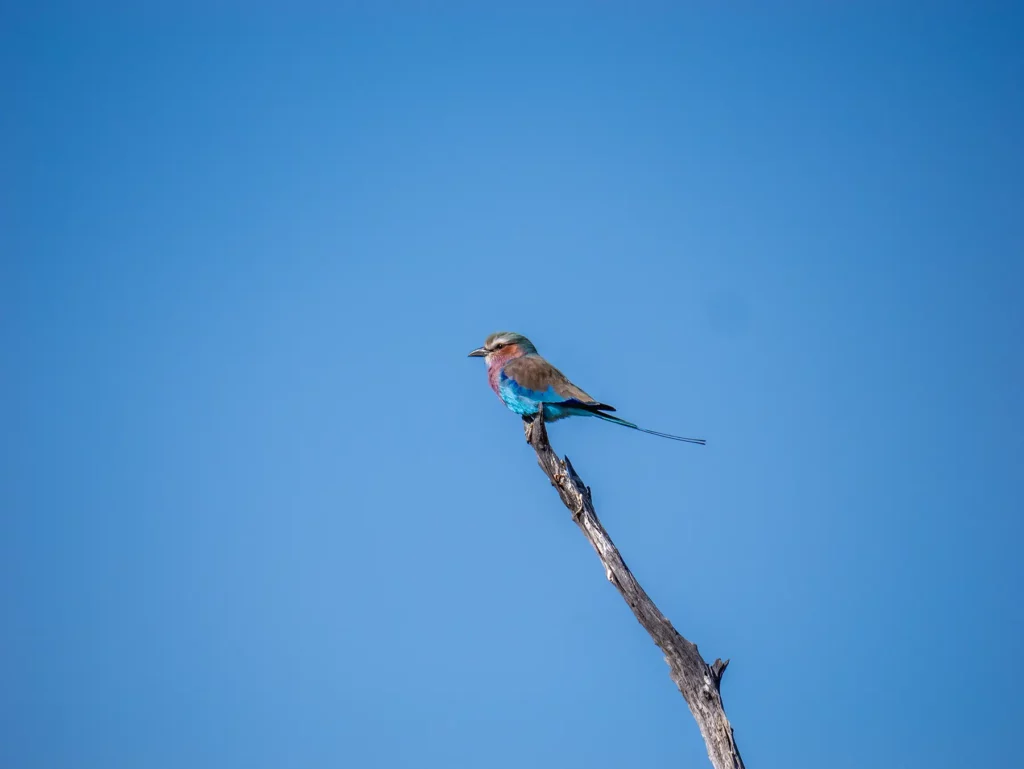
Where to Spend the Night
Back in Maun, you can either spend the night at the same lodge or guest house where you stayed on your first night, or, you can switch it up a bit and try somewhere new. Some of the best mid-range options in Maun include Maun Studios and The Waterfront.
If you have an evening flight back to Johannesburg or Cape Town, you may be able to fly out the same day. Tell your guide what time your flight departs so he can schedule the day properly and don’t forget to allow plenty of time in case of any delays.
Recommended Booking Options For Your 7-Day Okavango Delta Botswana Safari Itinerary
Safari with local tour operator
Most popular & best experience – typical prices for this itinerary start from $450 per person per day.
Visit safarisbyella.com for free quotes from trustworthy local tour companies I use to book my own trips.

Option 2
7-Day Khwai & Chobe Botswana Safari
This itinerary starts off in Maun before heading northeast to the Khwai Community Area. This privately owned game reserve is one of the few places that you can do a night game drive, which makes it very unique. You’ll have the chance to see many different animals that you can’t normally see during the day.
After spending a few days in Khwai Community Area, you’ll head to Chobe National Park. There, you have a few more days of game drives. The itinerary finishes in Kasane where you can take a boat ride along the Chobe Riverfront, which is absolutely teeming with animals. From there you have the option to visit Victoria Falls after this 7-day itinerary ends.
Quick Facts:
Average Driving Time Per Day: 1.75 hours, excluding game drives.
Best Times of Year: June to October is ideal for Chobe National Park, as dry conditions concentrate wildlife around remaining water sources, making sightings frequent. For more guidance, visit the Best Time to Visit Botswana section of this article.
7-Day Khwai & Chobe Botswana Safari Map

Day-by-Day Breakdown of the Perfect Khwai & Chobe Botswana Safari
Click any of the days below to jump to my full notes on that day.
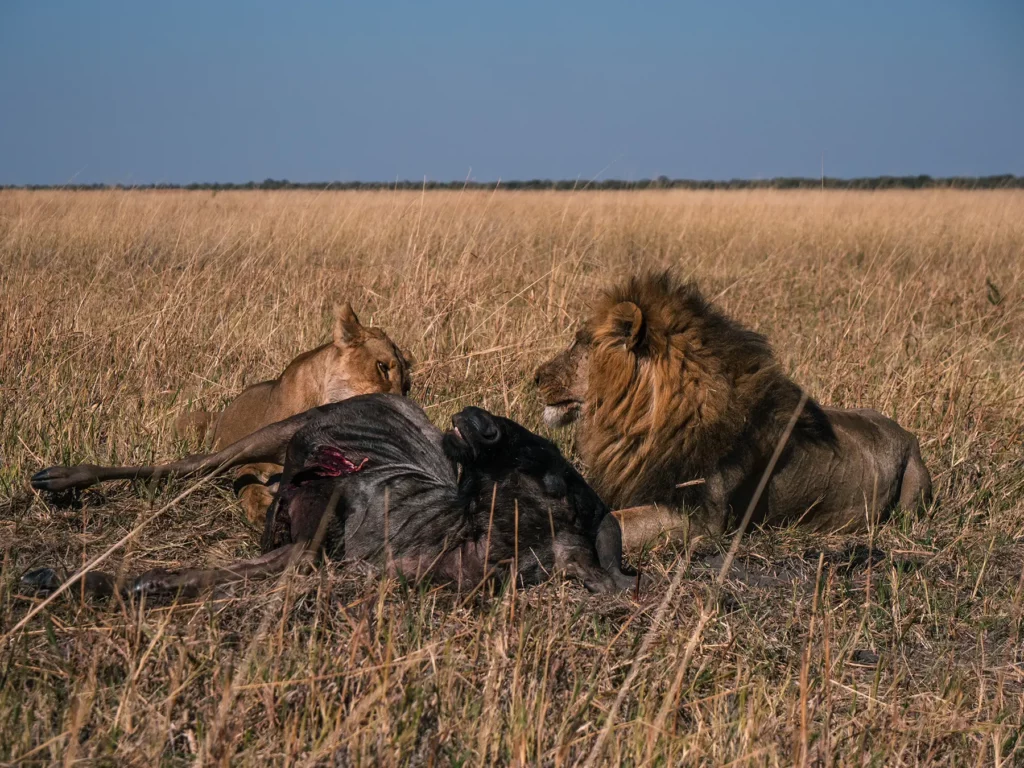
Day 1: Maun
Drive Time (Excluding Game Drives): 15 minutes
Most flights will arrive in Maun somewhere between 1 and 2 p.m. so you’ll have most of the afternoon to either explore the city or relax before your safari adventure starts tomorrow! I highly recommend arriving at least a day before your safari starts to allow for any delays. In the best case scenario, you have extra time to spend in Maun!
About Maun
Maun serves as the gateway to the Okavango Delta, and has a fittingly laid-back character. As Botswana’s ‘tourism capital,’ it’s home to the main offices of various safari operators and small airlines, making it an easy starting point for most delta adventures.
Convenience and character are two of Maun’s standout features, and getting into town from the airport is a quick 15-minute drive. Even though you’ll find modern amenities like shopping centres, restaurants, bars and quality hotels, Maun hasn’t lost its small-town charm.
The colourful streets and unhurried pace create a pleasant transition between urban life and the wilderness experiences that draw people here. The Thamalakane River runs through the center of town, dividing it in two before flowing south to become the Boteti River.
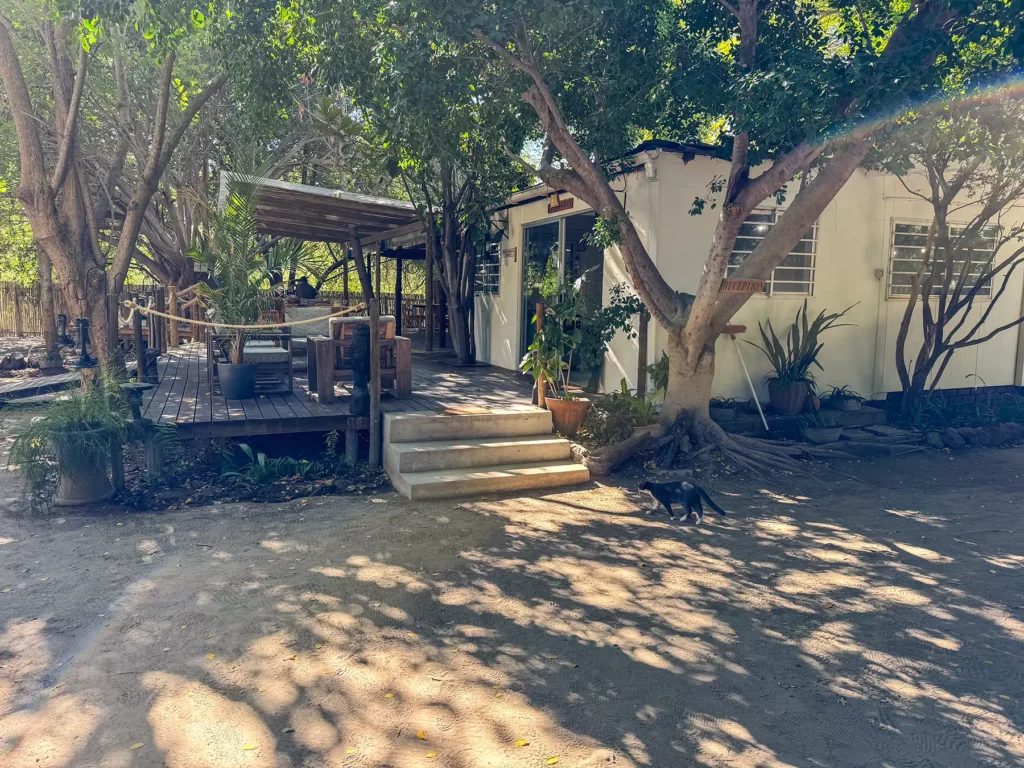
Things to Do in Maun
If you’ve got some time in Maun before heading out on safari, it’s a great idea to explore some of the restaurants and local sites. Here are some of my favorites:
1. Visit Marc’s Eatery for dinner
Marc’s Eatery is a little gem of a restaurant on Sir Seretse Khama Road, just five minutes from town, near the airport runway. The courtyard setting is lovely, and their menu includes everything from local fare to Middle Eastern cuisine. It’s all delicious! They’re also great for takeaway, and pack excellent safari lunch boxes. Don’t miss their cakes if you have a sweet tooth.
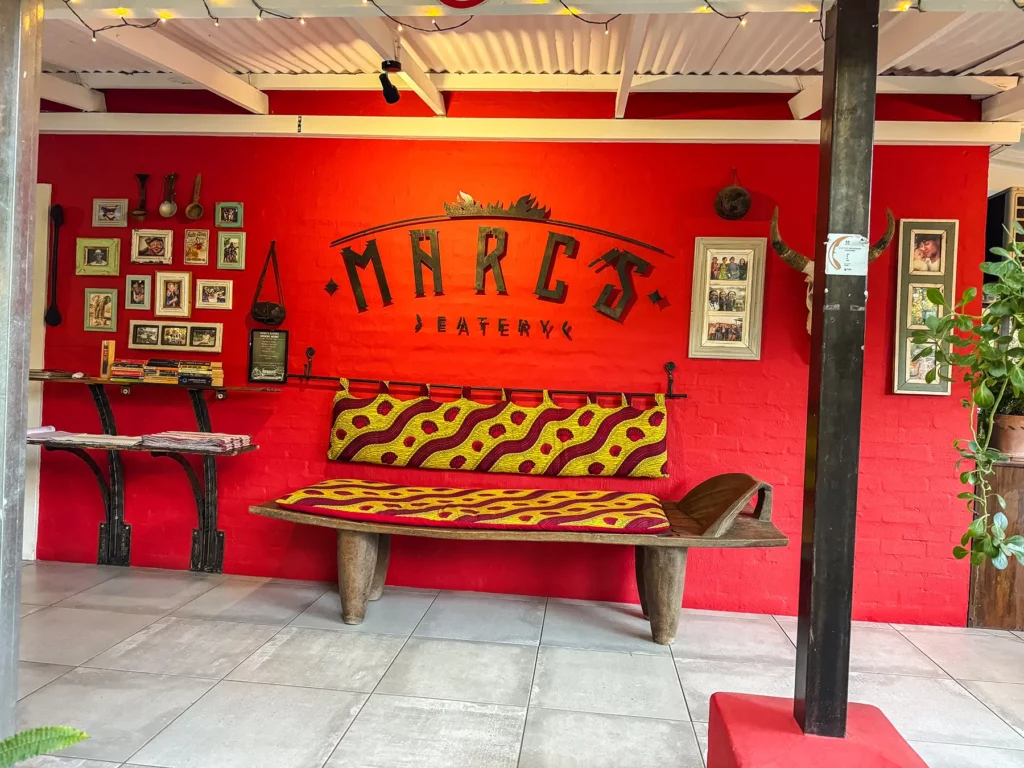
2. Lunch at The Duck Cafe and Buy Souvenirs
Situated near the airport terminal, The Duck Cafe is perfect for breakfast or lunch, serving up homemade dishes, pastries, and what might just be best coffee in Maun.
This could also be a good spot to pick up some souvenirs, as they carry some beautiful locally made crafts,like hand-carved wooden animals. Consider doing your shopping when you stop at Maun at the end of your trip though, so that you don’t have to carry your souvenirs with you for the week.
For more shopping options, pop across to Bushman Crafts – it’s packed with handmade treasures from jewellery to hammocks. If the prices seem a bit high, there’s usually room for negotiation.
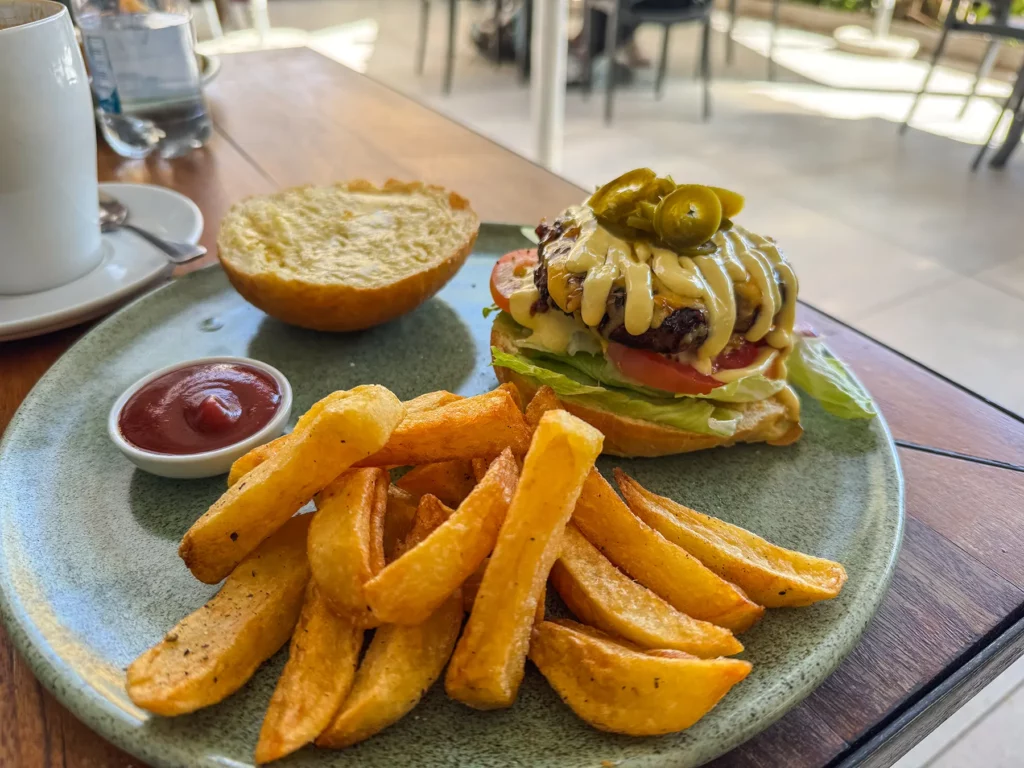
3. Explore the Nhabe Museum
A short walk from The Duck Cafe you’ll find this interesting little museum. It’s worth taking an hour of your time to learn about local history and culture through their displays of artifacts and artworks. You can buy locally made crafts in their shop, too.
The building itself has quite a history – built by British settlers in 1939, it served as a World War II surveillance post monitoring German activities in neighbouring Namibia.
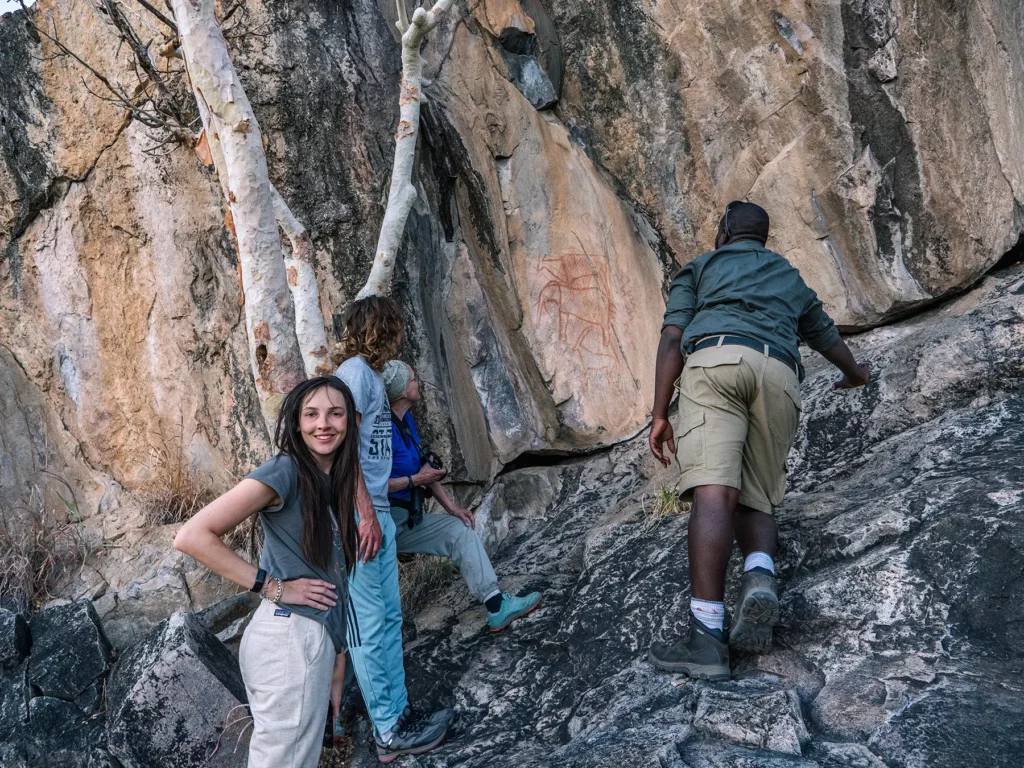
4. Take a Scenic Helicopter Flight
For something special (if your budget allows), try a helicopter flight over the Okavango Delta. The standard 45-minute trip gives you amazing photo opportunities from the open sides.
If you’re up for a splurge, you could opt for a longer trip that includes a champagne stop on a remote island or lunch at a luxury lodge. Keep your eyes peeled for wildlife below – elephants, buffalo, and giraffes are often spotted from above, thanks to those long giraffe necks poking out from the canopy.

Tips for Visiting Maun
Getting around Maun takes a bit of planning since it’s quite spread out. Taxis are your best bet – they’re reasonably priced and can be arranged by your accommodation for minimal cost. Just keep in mind that there is no Uber or other e-hailing service here.
While Maun is generally safe, you should always use common sense and take precautions like you would anywhere else. Avoid walking alone after dark and keep jewellery low-key to avoid drawing unwanted attention.
If you’re enjoying an evening walk along the riverfront (when there’s water in the river), keep a safe distance from the water’s edge – this is crocodile territory!
Where to Spend the Night
For convenience, I’d recommend arranging an airport pickup through your tour operator to take you directly to your chosen lodge.There are many super accommodation options in Maun, and my personal favourite is The Waterfront. A good mid-range option, this guest house is situated just north of town in a peaceful spot overlooking the river. You can reach it from the airport in about 15 minutes.
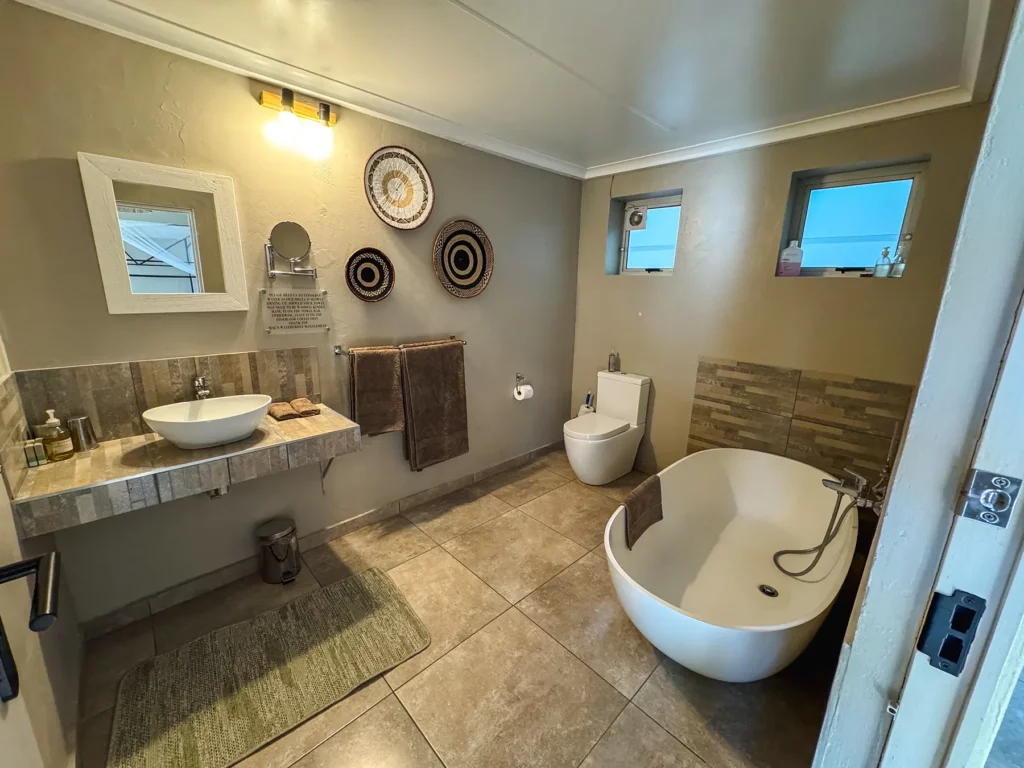
My Experience Visiting Maun
Maun has a wonderfully laid-back atmosphere that made me feel at ease throughout my stay. Unlike some tourist destinations where vendors can be quite pushy, the local people here were welcoming without being intrusive.
When shopping for souvenirs, whether at Bushman Crafts or The Duck Cafe, I could browse at my own pace without any pressure – a refreshing change from some other tourist spots I’ve visited. The authentic local crafts, from woven baskets to beaded jewelry, were fairly priced and made lovely mementos.
I settled into a comfortable routine: delicious breakfasts at the Waterfront B&B, where the staff went out of their way to be helpful, relaxing lunches at The Duck Cafe, and dinner at Marc’s Eatery became my daily ritual. Each place had its own charm, and the consistent quality of both food and service made me feel like a local rather than a tourist.
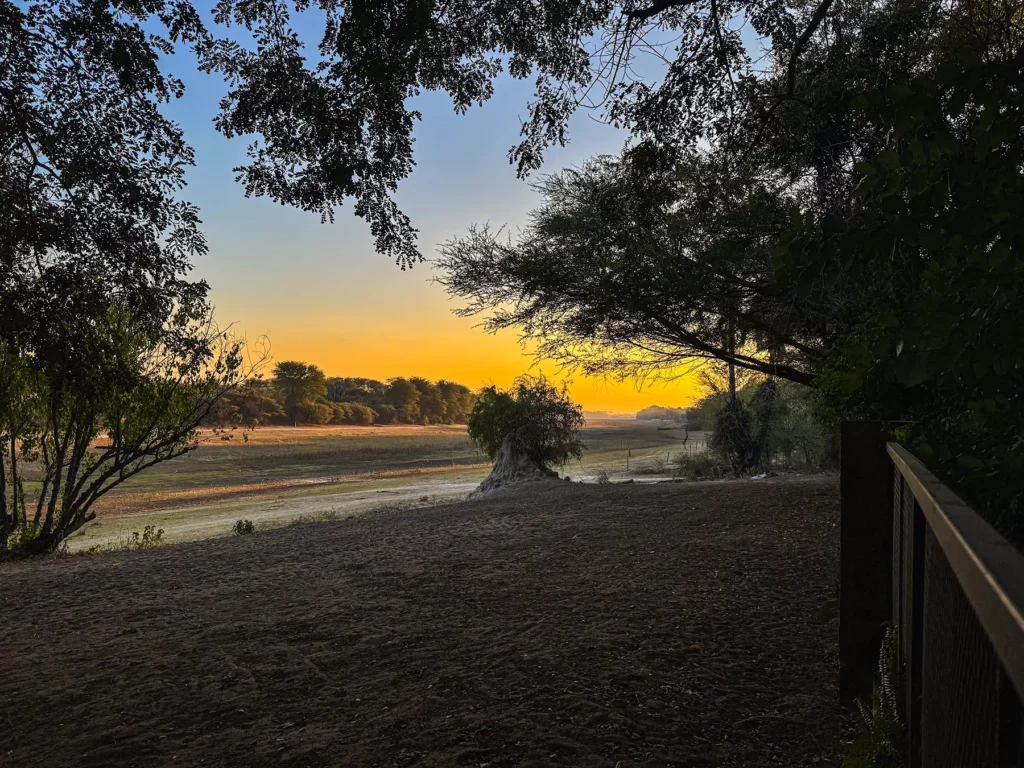
Day 2: Maun to Khwai Community Area
Drive Time (Excluding Game Drives): 3 hours drive or 30-45 minutes by plane
From Maun, you can take a 45-minute bush plane to Khwai Community Area, or embark on a 3-hour drive that takes you through some lovely scenery. Unless you’re really short on time, I recommend the drive as it allows you to get more of a feel of the country.
Khwai Community Area Map

Itinerary
After you arrive in Khwai Community Area, you’ll be treated to a delicious lunch. If you’re staying at a lodge, you’ll eat there and if you’re on a mobile safari, you can expect to have a picnic lunch in the bush. In the afternoon, you’ll head out for a game drive.
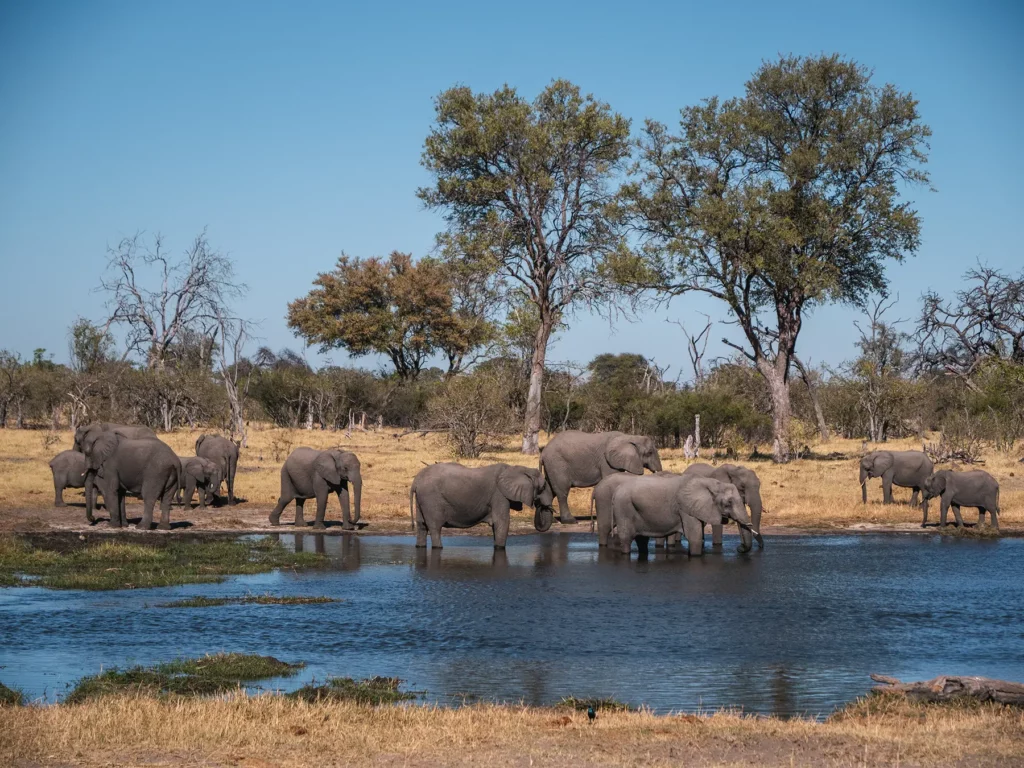
About Khwai Community Area
The Khwai Community Area is a wonderland of animal conservation. This area was formerly the site of a hunting ground. Luckily, it was then handed over to the local people who transformed it into a conservation area.
With a population of only 400, the local community is able to manage this vast area and the wildlife that lives there, and run a successful ecotourism industry.
Khwai is located on the edge of Moremi Game Reserve in the Okavango Delta and has many of the same landscapes as the nearby park.
While you’re there, you can expect to encounter a range of ecosystems including floodplains, forests, lagoons, and open grasslands.
This makes it an ideal spot for wildlife-viewing as these diverse ecosystems are able to support a mind-boggling array of animals, including predators like lions, leopards, hyenas, cheetahs, and wild dogs. In fact, the Khwai Community Area is famous for its predators! You can also find many giraffes, hippos, and elephants.
One of my favourite things about Khwai Community Area is that it’s one of the few parks where you can do night game drives. This gives you the chance to see some really interesting nocturnal animals such as aardvarks and porcupines! And, though very rare, you may even be able to see a pangolin!

Tips for the drive from Maun to Khwai Community Area
Keep your camera at the ready on the drive to Khwai – you never know what wildlife you might spot along the way, and there’s usually plenty to see! The road journey itself can turn into an unintentional game drive.
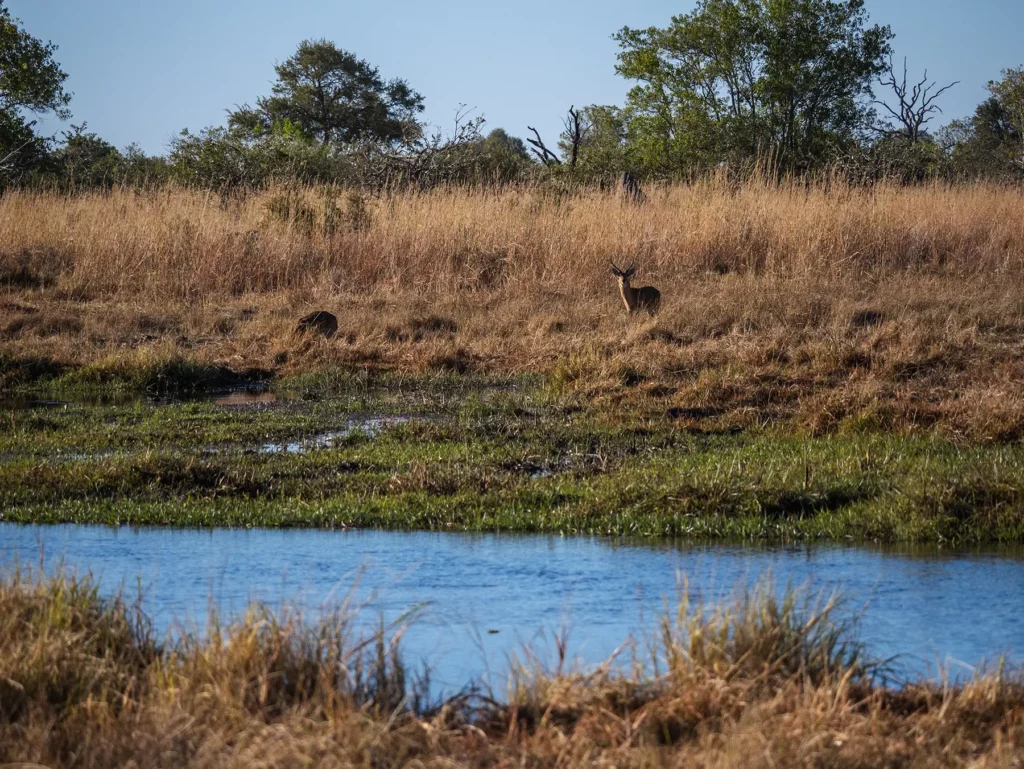
Day 3: Khwai Community Area
Total drive time (excluding game drives): 0 hours
Today you’ll have the chance to explore the diverse landscape of the reserve and see countless animal species. Make sure you get a good night’s sleep the day before – you’ll want to be well-rested for morning, afternoon, and nighttime game drives!
Itinerary
There are some wonderful things in store for you today! You’ll want to get up early and hit the road in time for a sunrise game drive.
You should be back to camp around 11.30am, after which you can eat lunch and take a shower before it gets too cold.
In the afternoon, you’ll be treated to a traditional mokoro ride which will give you a whole new perspective on the delta.
You may then want to head out on another night game drive to check out the nocturnal animals that are just starting their day.

Where to Spend the Night
Tonight, you’ll be staying in the same place as the previous night.
Tips for Visiting Khwai Community Area
Khwai is a special place that is magical year-round. Even though water levels shift through the seasons, there’s always something interesting to see.
This is quite different from some other African destinations that have distinct ‘on’ and ‘off’ seasons. Your guide will know exactly where to find the action based on the seasonal conditions.
One of Khwai’s unique features is that it’s among the few places in Botswana where you can go on night drives. I’d definitely recommend this – it’s not just about seeing different animals, though that’s certainly a highlight. There’s something quite humbling about being out in the darkness; it gives you a whole new perspective on how wildlife experiences the bush and really heightens your other senses.
A quick but important safety note about camp life: since these areas aren’t fenced, wildlife can freely wander through. While it’s thrilling to spot a giraffe near your tent, encountering a predator is another story entirely! That’s why it’s a good idea to wait for staff escorts when moving around camp after dark. They’re always happy to accompany you between your accommodation and the dining area, or help with anything else you need.
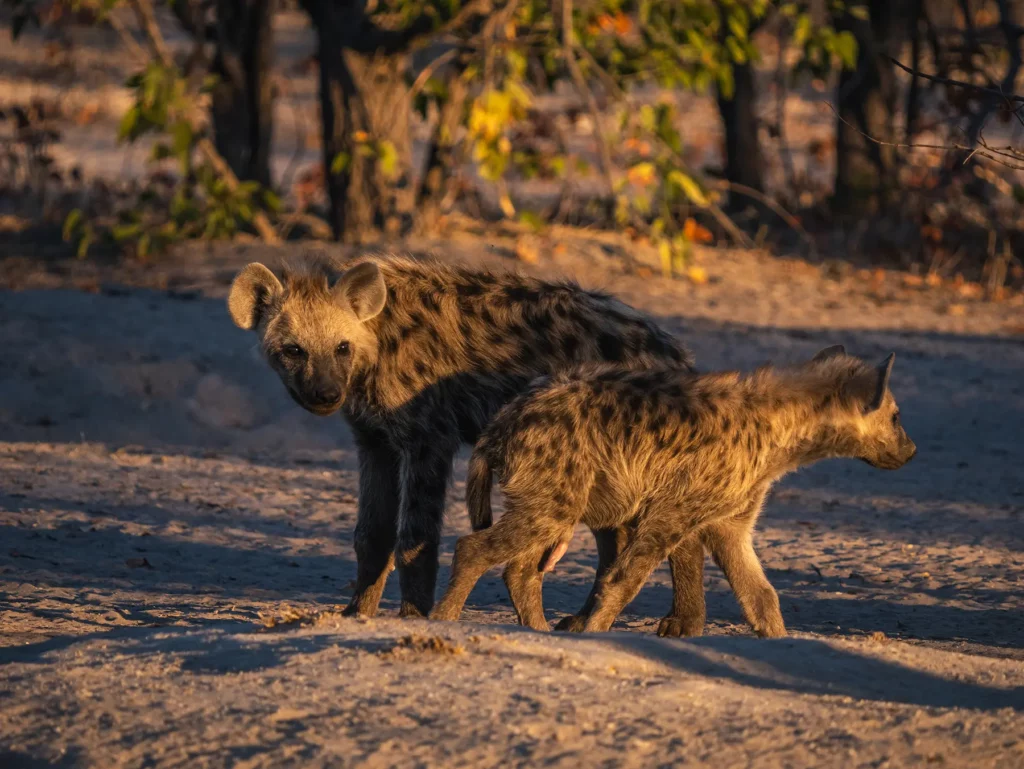
Where to Spend the Night
As with most of the parks in Botswana, all of the accommodation options are located within the park. This means that you’re never very far from nature!
If you are doing a mobile safari, your camp will be set up and broken down whenever you go to a new place. If you’ve opted for one of the more upmarket mobile safaris, this will be done for you in advance. If you decide to go budget, you may have to help your safari guide and team set up the camp.
There are also a number of high-end lodges located within the concession.
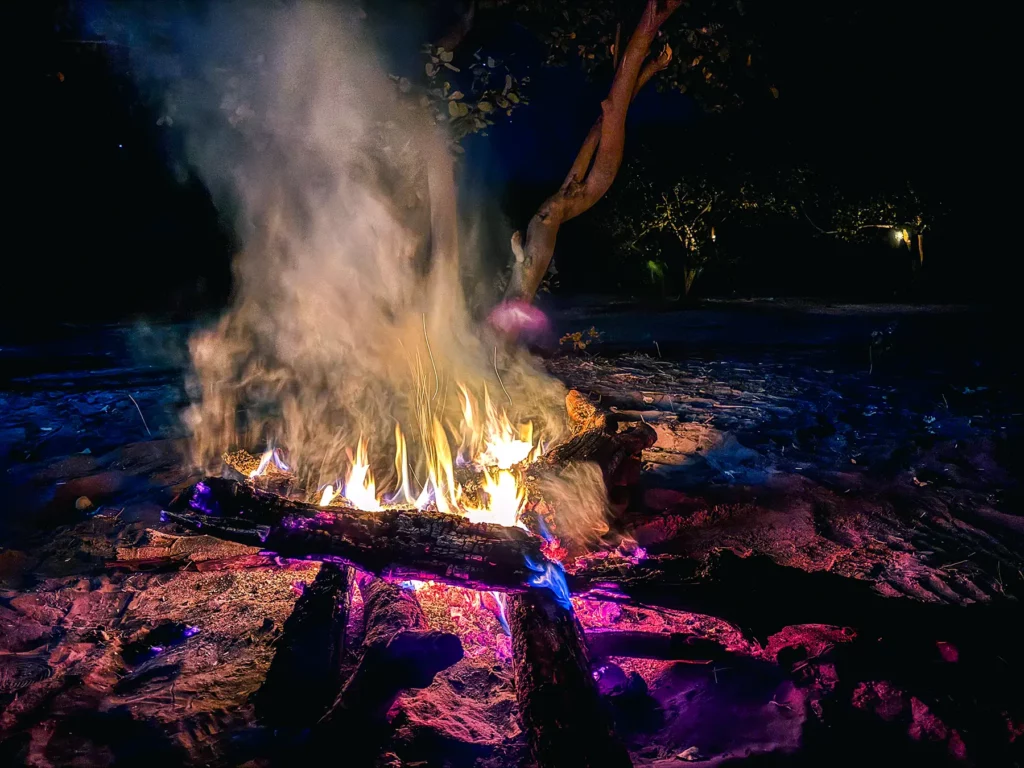
My Experience Visiting Khwai Community Area
We stayed at Khwai Safari Grounds, perfectly positioned along a leafy green tributary. The location was fantastic. We didn’t even need to leave camp to spot wildlife, with hippos, waterbuck, elephants, warthogs and impalas all making appearances right there.
On one morning in particular, our local guide demonstrated his tremendous bush expertise. While other vehicles headed elsewhere, he tracked two lionesses stalking a buffalo herd, giving us several hours of exclusive viewing.
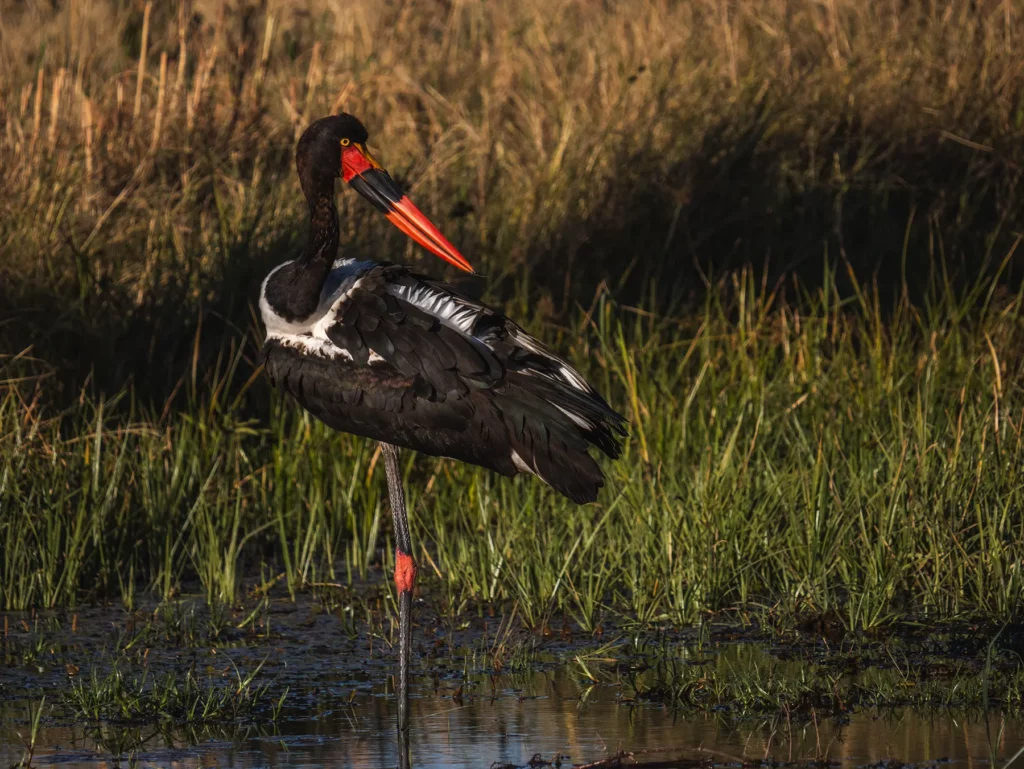
The afternoon mokoro excursion offered a completely different perspective of the delta. Gliding quietly through the waterways, we got close-up views we couldn’t have had any other way. I was so delighted when our guide pointed out a tiny green frog – the kind of detail I would have completely missed without his sharp eyes.
Being in a private concession meant we could go out after dark, and one particular night drive delivered something special. We watched a male leopard leap into a tree and feast on his kill. That’s the kind of sighting that stays with you for a long time!
You can watch a video of my experience visiting Khwai Conservation Area in the Okavango Delta below.
Day 4: Khwai Community Area to Savuti (Chobe National Park)
Total drive time (excluding game drives): 4 hours drive or 30-45 minutes by plane
It’s time for another travel day as you leave the Khwai Community Area to travel to Savuti in Chobe National Park. The day will be split into two game drives with a scenic journey in between.
Savuti Map
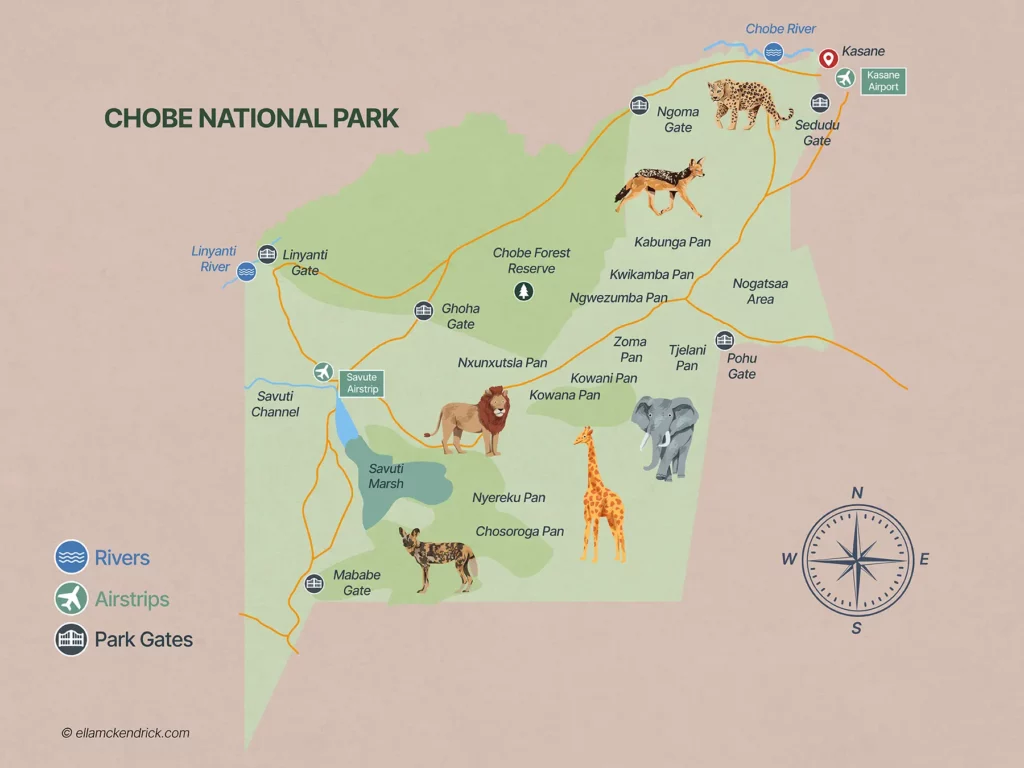
Itinerary
Your day will start well before sunrise as you get up and start preparing for your final game drive in the Khwai Community Area. Once you’ve finished your morning game drive, it’s time for a leisurely journey through the reserve to get to Chobe National Park.
Alternatively, if you feel you’ve done enough driving and your budget allows, you can hop on a bush plane and be there within about 30 minutes. There are some amazing views as you fly over the region, so you may want to splash out on the flight. Your safari vehicle will then meet you at your lodge or campsite.
You’ll have a picnic lunch at a scenic spot on the way if you’re mobile camping, or you can look forward to a filling hot lunch at your lodge when you arrive in Chobe. The day will finish with an evening game drive in Savuti.
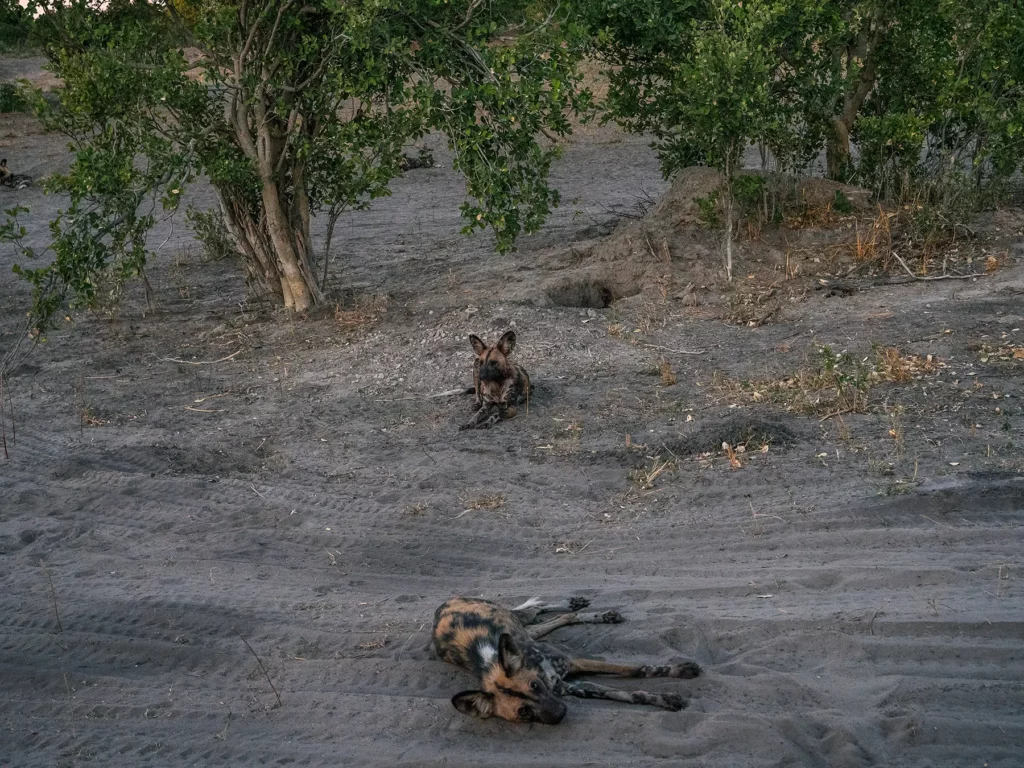
About Savuti (Chobe National Park)
Considered to be one of Botswana’s most visited safari destinations, the greater Chobe National Park is famous for its enormous herds of elephants and fantastic river cruises that give you the chance to spot animals at close range.
Located in the western section of Chobe National Park, Savuti spans a whopping 6,200 square miles. The area was once home to a huge lake that dried up after tectonic movements cut off its water supply. The nearby river remains, but has been a bit unpredictable ever since. As of 2025, it has been dry for over 10 years.
While the river is the focal point of the park, Savuti is home to a wide array of habitats ranging from grassy savannahs to mopane woodlands. These ecosystems support an abundance of animals including elephants, giraffes, lions, leopards, wild dogs, buffalos, and antelope. If your timing is right, you may be able to catch the zebra migration as it moves down from northern Botswana.
Savuti is also perfect for bird lovers, with over 450 different species to spot. Some of the most commonly seen ones are the secretary bird, the red-billed francolin, and the kori bustard. In April, huge flocks of quelea finches can also be seen overhead, so make sure to pull your eyes away from the forest and savannah every once in a while to take a look up at the sky.
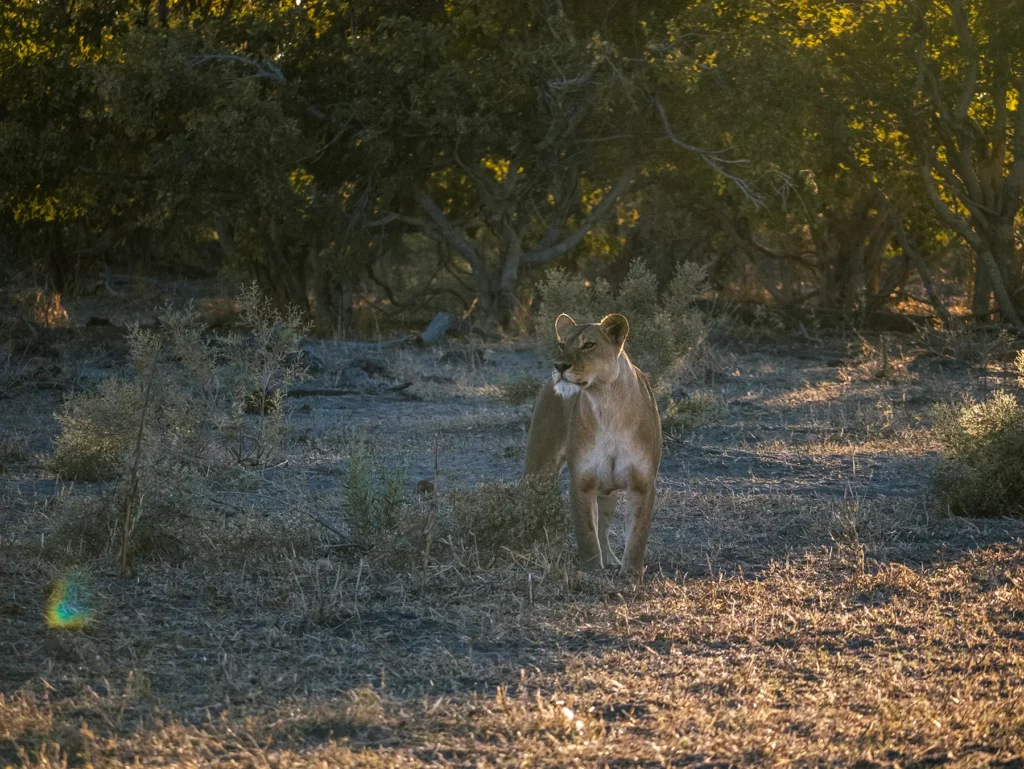
Tips for Your Moving Day to Savuti
If you’re doing a mobile safari, pack up your gear the night before you move on. The camp crew will appreciate it, as they like to load the vehicles early before tackling the tents.
Don’t forget to ask your guide about making a quick stop at the fascinating Dead Tree Forest just east of Khwai. It’s one of those unexpected sights that makes you do a double-take – imagine a whole forest of bare thorn trees right in the middle of otherwise thriving bush!
No one’s quite sure what created this ghostly scene. People speculate that it could have been hungry elephants, too much flooding, or maybe an old fire that damaged the bark. Whichever way, it’s definitely worth a photo stop!
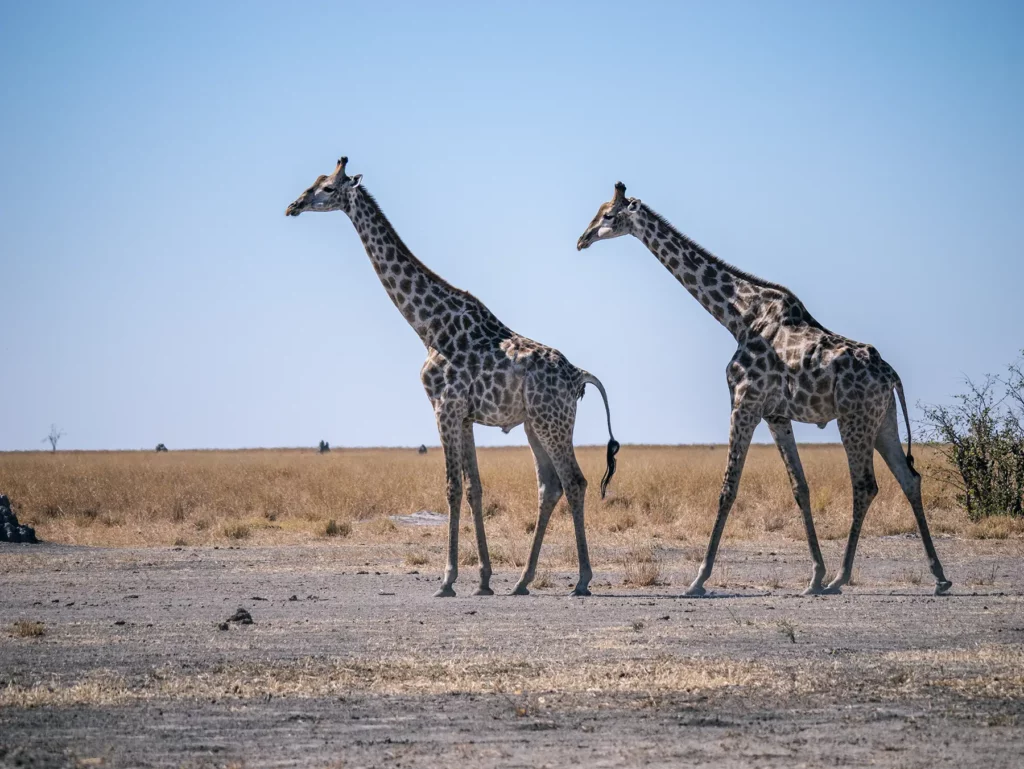
Where to Spend the Night
If you’re on a mobile safari, your camp will come with you from Khwai and it will be set up when you arrive in Savuti.
There are plenty of up-market lodges on offer as well.
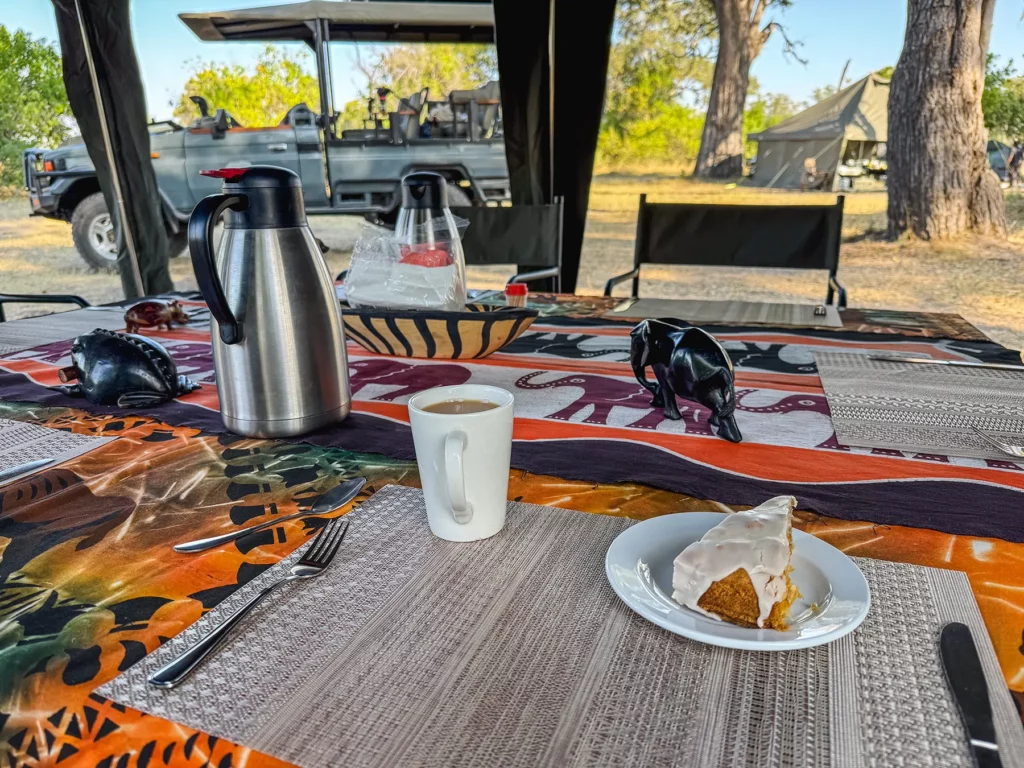
My Experience Journeying From Khwai to Savuti
The drive from Khwai to Savuti took us through some fascinating landscape changes. We stopped for lunch at the Mababe Depression, which is an incredible sight! It’s hard to describe just how vast and empty this flat expanse looks, completely different from anything I’d seen so far.
Reaching Savuti in the late afternoon, we didn’t even pause to unpack. We headed straight out on our evening game drive, and, to my delight, came across an African wild dog den. I could hardly believe our good fortune, as seeing these endangered predators had been right at the top of my safari wishlist for a long time.
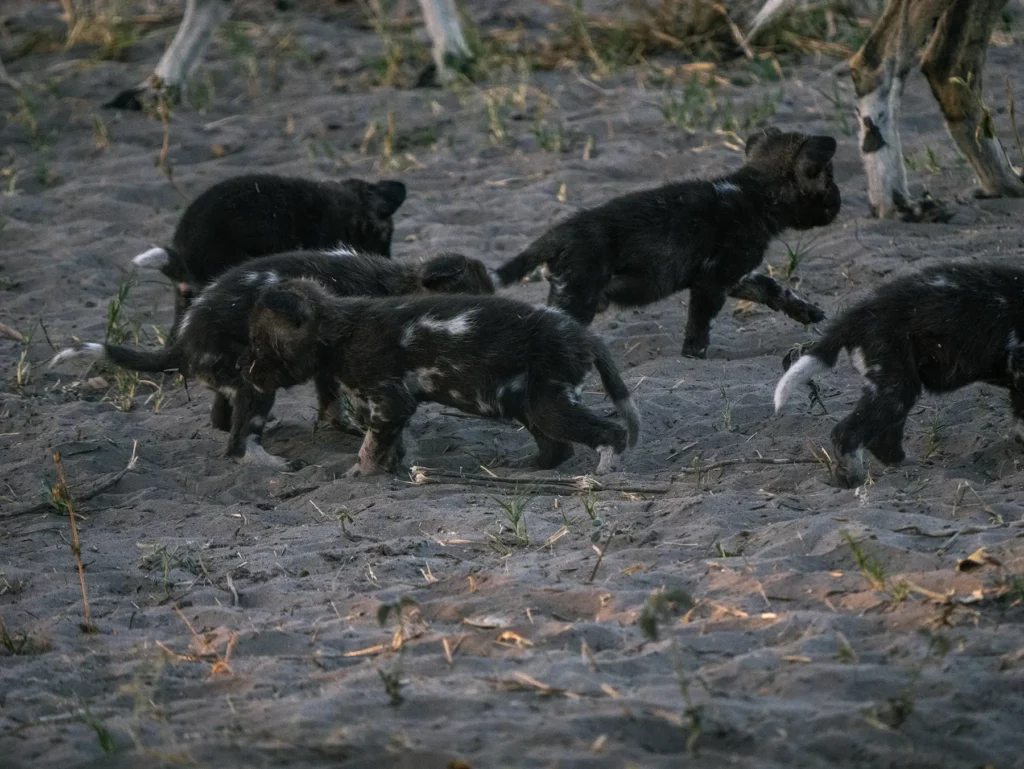
Days 5 – 6: Savuti (Chobe National Park)
Drive Time (Excluding Game Drives): 0 hours
Your first full day in the famous Chobe National Park has arrived! Over the next 48 hours, you’ll explore Savuti from all different angles and at different times of the day. You’ll have have at least 3-4 game drives on your schedule, giving you hours of quality time out in the bush.
Itinerary
You know the drill by now! Your morning game drive starts around 6.30am and will last until around 11.30am. Savuti has healthy populations of leopards and lions, and the early morning is when they are most active. Make sure to have your camera ready in case you’re lucky enough to see a kill!
You’ll head back to your camp or lodge for lunch and a shower, and after that you’ll have a few hours to rest, look at your photos from the morning, or even squeeze in a little nap. The evening game drive heads out around 3.30pm and returns to your accommodation by 6.30pm. Since the temperature starts to drop at this time of day, you’ll begin to see the animals become more active into the early evening. Wild dogs are generally on the move then, as are lions, and this is an ideal time for spotting both.
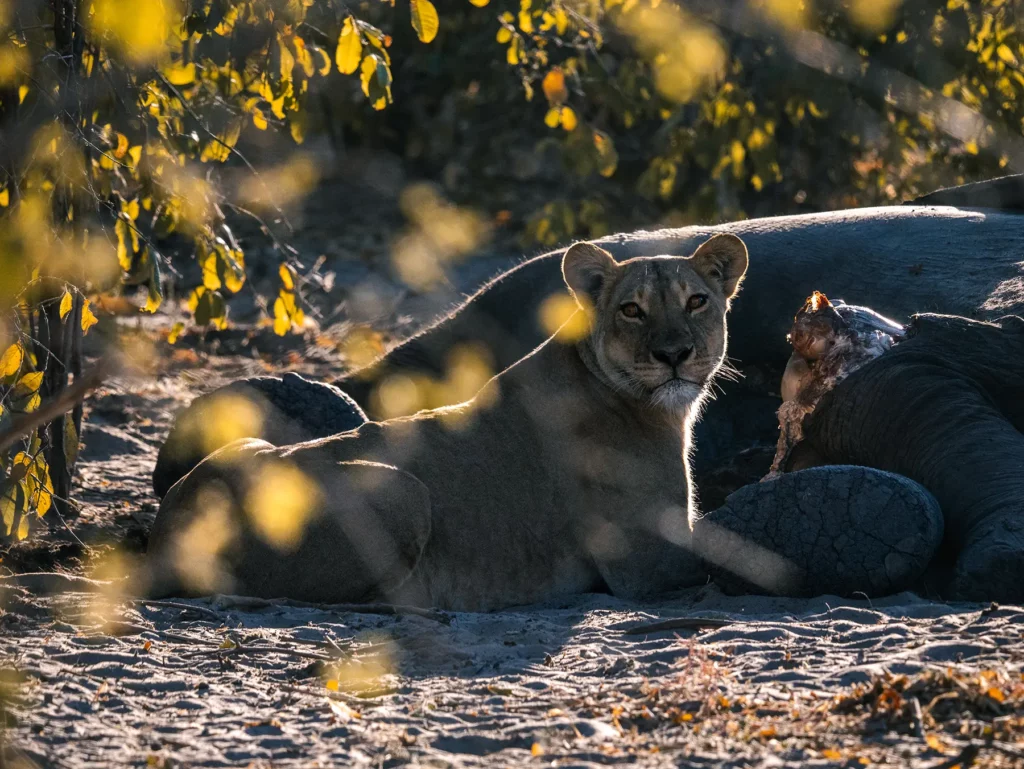
Tips for Visiting Savuti (Chobe National Park)
Botswana can get surprisingly cold at night, especially if you’re mobile camping. This is why it’s always important to bring warm clothing with you. Most of the camps provide blankets and hot water bottles when the weather gets brisk, but you’ll still need warm clothes to sleep in, go out for dinner in, and to throw on during the early mornings when you take off on a game drive.
I have found that the best strategy is to wear multiple layers that take off and put back on again throughout the day, as needed. This generally includes a vest top and shirt under a jacket or jumper.
In terms of safety, it’s best not to wander off on your own at night. None of the lodges or campsites are fenced, which means that animals can roam freely around your accommodation. The staff are prepared for this though, and there should always be someone who can walk you back to your room after dinner to ensure that you make it there safely.
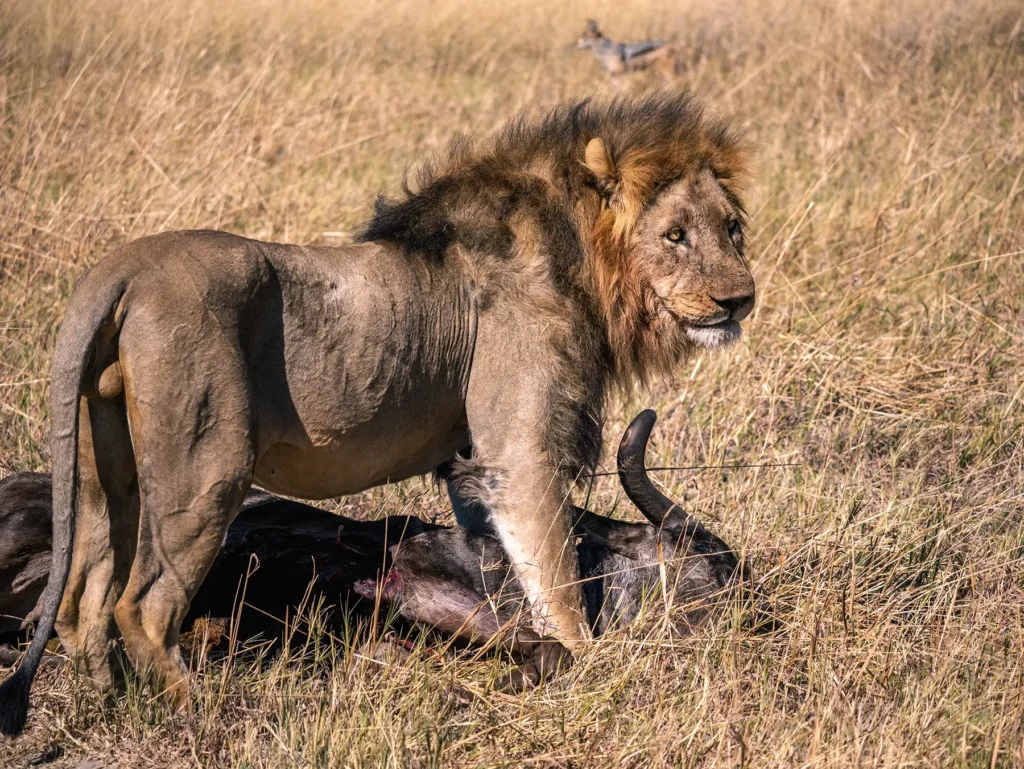
Where to Spend the Night
You’ll be spending the night at the same mobile campsite or lodge as the previous night.
My Experience Visiting Savuti (Chobe National Park)
Savuti left me with some unforgettable memories, but two experiences really stand out. The first was a remarkable wild dog sighting. We watched transfixed as a playful pack of pups jostled outside their den and then raced down the dried riverbed following a scent trail.
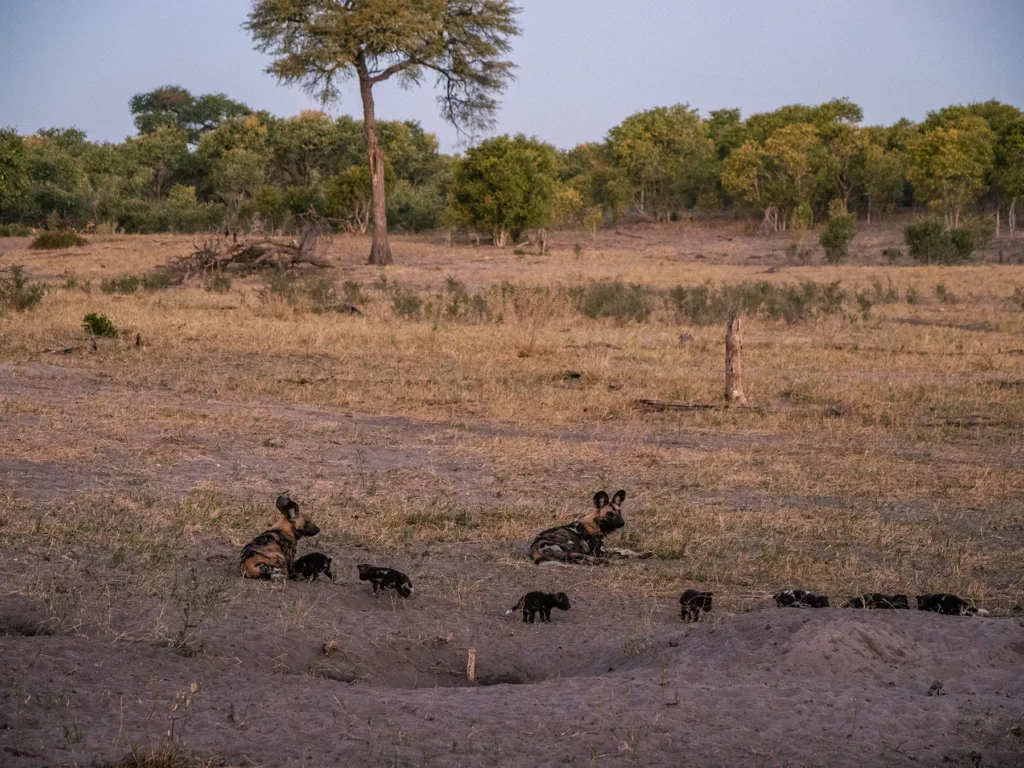
Then there was our final evening’s adventure to Bushman Hill. The climb up was hard work, but what awaited at the top took my breath away (and not just from the exertion!).
Preserved on the rock face were a number of ancient paintings – of elephants, eland and sable antelope – created by indigenous San artists thousands of years ago. Standing there, looking at this ancient artwork while the sun set over modern-day Savuti, gave me goosebumps. It felt like a perfect connection between the area’s past and present, and such a fitting way to end my time there.
You can watch a video of my experience visiting Savuti in Chobe National Park below.
Day 7: Chobe Riverfront
Drive Time (Excluding Game Drives): 5 hour drive or 30-45 minute flight
Today, you’ll say goodbye to Savuti and start travelling up the Chobe River for a relaxing afternoon boat cruise on the Chobe Riverfront.
Running along the northern boundary of Chobe National Park, the riverfront is flanked by grassy plains and dense forests.
Animals come from miles away to be close to the water and it’s common to see massive herds of elephants, buffalos, antelope, giraffes, zebras and hippos.
After this exciting excursion, you’ll see the day out in Kasane in northeast Botswana and your safari adventure will come to an end.
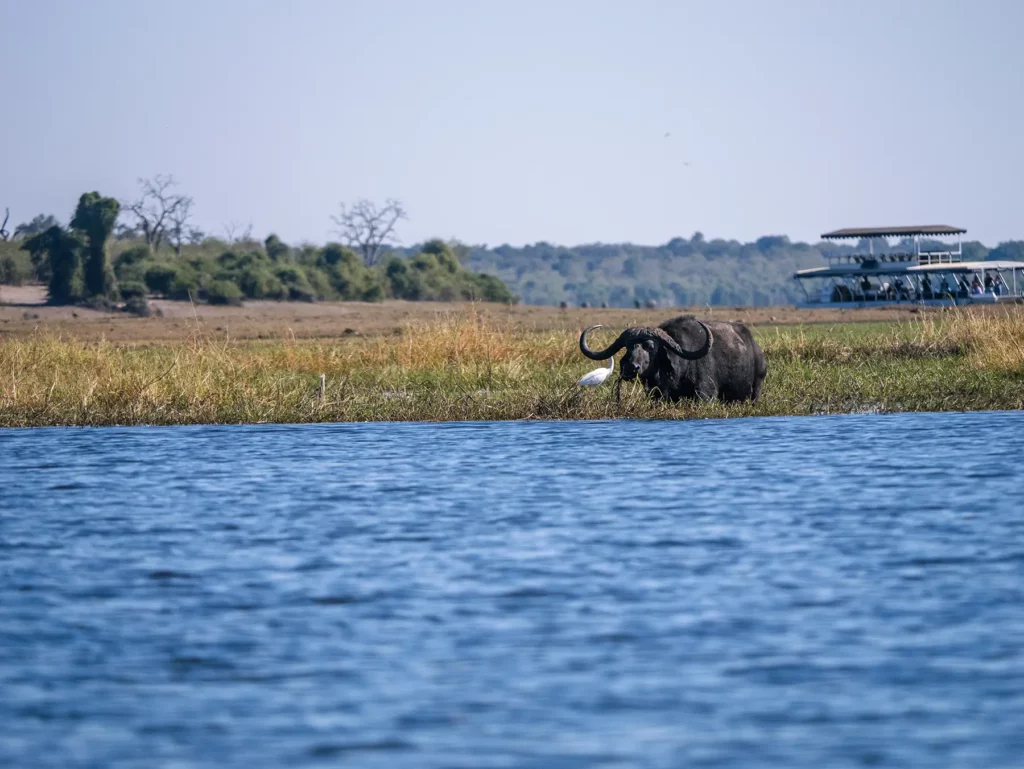
Itinerary
This morning, you’ll have a 4-hour drive from Savuti to Kasane, passing through some epic scenery on the way. After having lunch at one of the cafes or restaurants in town, you’ll jump on a 3-hour boat cruise of the Chobe Riverfront.
Despite its proximity to the city, this is a great way to view crocodiles, hippos, and elephants as they congregate along the riverbank. It’s the only water source in the area, making the wildlife viewing here exceptional.
While it’s exciting to see so many different animals so close, my absolute favourite part of this river cruise is the chance to watch elephants swimming and playing in the water, oblivious to the world around them.
Chobe River boat safaris allow visitors to go into otherwise inaccessible parts of the park and offer unparalleled opportunities for animal encounters. The slow pace of the boats allows you to see things that you would likely miss if you were travelling in a 4×4, and the unique angles provide plenty of great vantage points for photos.
The Chobe River boat cruise will finish back in Kasane and you can either spend the night there or fly home.
Kasane is located near the borders of Namibia, Zimbabwe, and Zambia so it also serves as a good starting point for an onward cross-border adventure.
Double-check what time the borders close before making arrangements though. Some border posts close surprisingly early during the day and you don’t want to get stuck in one country while your accommodation is in another!
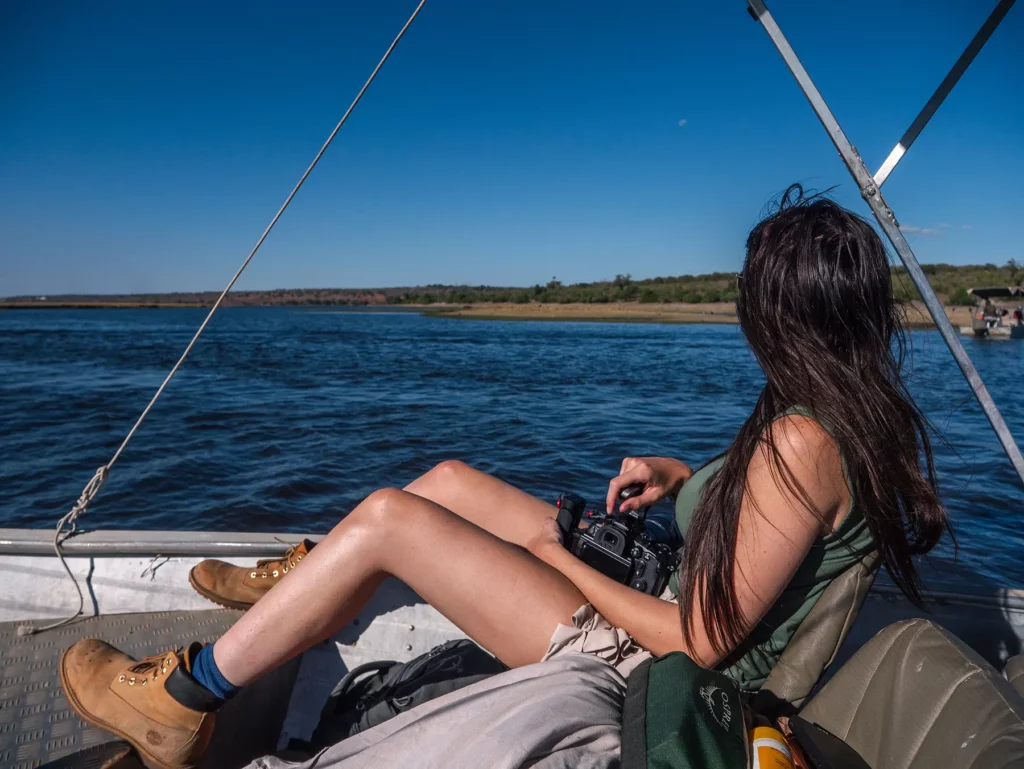
Tips for Visiting Chobe Riverfront
Boat cruises are far and away the most popular activity here. These cruises tend to last around 3 hours. There is a canopy on the boat to help protect you from the sun but I highly suggest bringing sunscreen and a hat with you. You should also bring along some water and snacks. Many operators will provide drinks on board but this isn’t always guaranteed.
Birders, don’t forget your binoculars – the Chobe Riverfront is a popular hangout for an exciting array of birds including storks, oxpeckers, hornbills, and bee-eaters. Most guides will be happy to let you use their binoculars but I’ve always found that it’s better to have your own with you so you don’t have to share.
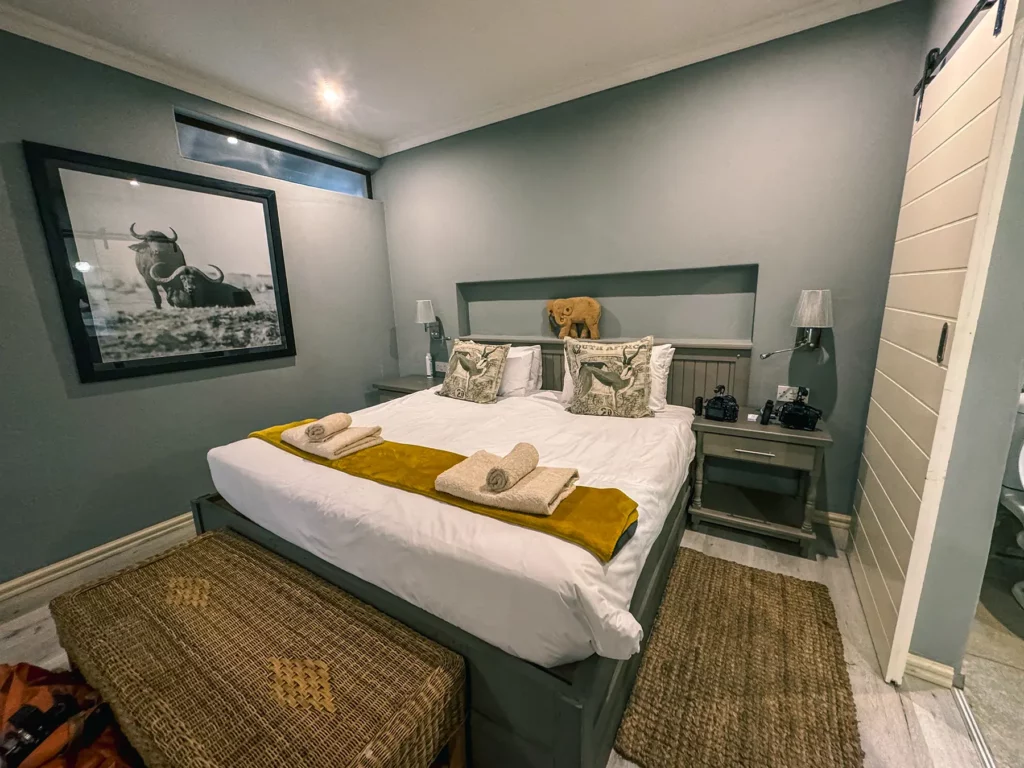
Where to Spend the Night
By the time you finish the boat cruise, it’s likely going to be late afternoon. Unless you have a very late flight out or plan on crossing the border into a neighbouring country, you’ll most likely spend the night in Kasane.
As one of the main tourism towns of Botswana, there are many different accommodation options available for every budget and preference. The least expensive ones are pretty bare bones, but the upscale ones usually have outdoor pools, lush gardens, and sweeping views of the river. My favourite choice is River View Lodge.
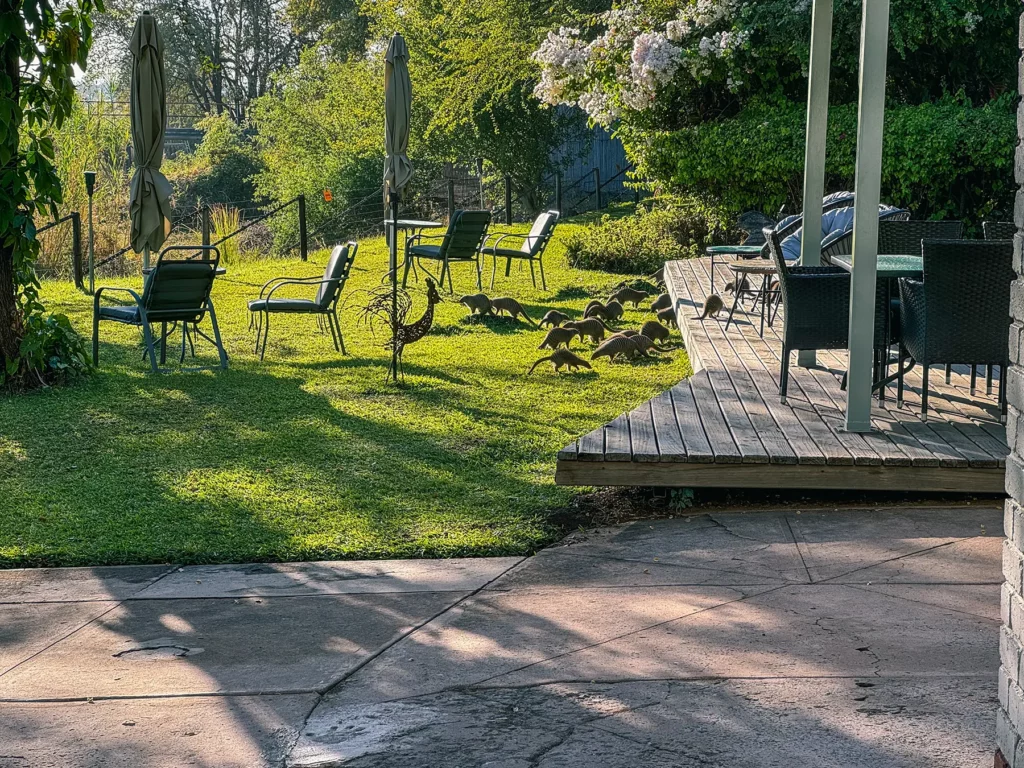
My Experience Visiting Chobe Riverfront
I couldn’t have picked a better way to wrap up my Botswana adventure than a 3-hour boat cruise. We rode in a compact but comfortable motorboat with a welcome sun canopy. There was something quite special about cruising along with Botswana to our left and Namibia to our right.
Our boat driver was excited to show us the local Nile crocodiles – perhaps a bit too excited! I found myself holding my breath as we glided within arm’s length of one massive specimen. Just when I’d recovered from that close encounter, we came even closer to an even bigger croc. And just at that moment our motor chose to sputter and stall for a few heart-pounding minutes!
But the real highlight was when we spotted a group of elephants making their river crossing. It was magical watching these giants wade through the shoulder-deep water, making their way to a grassy island in the middle of the river.
You can watch a video of my experience visiting Victoria Falls & Chobe Riverfront below.
Recommended Booking Options For Your 7-Day Khwai & Chobe Botswana Safari Itinerary
Safari with local tour operator
Most popular & best experience – typical prices for this itinerary start from $450 per person per day.
Visit safarisbyella.com for free quotes from trustworthy local tour companies I use to book my own trips.

Final Thoughts
I hope that these itineraries have inspired you to plan your own safari in Botswana! As one of the most exclusive safari destinations in Africa, Botswana holds an allure that few other destinations can match. And it certainly lives up to its reputation as a conservation wonderland. I have no doubt that the untouched nature and the sense of reprieve from the businesses of town and city life will be a balm for your soul.
If you loved the sound of both itineraries but aren’t sure which one to pick, why not add a few more days on to the trip and consider this 10-Day Botswana itinerary?
Alternatively if you have time for a much longer itinerary covering more of the country, check out my 3-week Botswana Itinerary.
Read More Botswana Guides
Botswana Itineraries
Recomended itineraries and how to book them.
5-Day Botswana Safari Itineraries & Costs
7-Day Botswana Safari Itineraries & Costs
10-Day Botswana Safari Itinerary & Costs
3-Week Botswana Safari Itinerary & Costs
Costs & Planning
How to get the most bang for your buck and the best time of year to visit depending on what you want to do and see.
Botswana Safari Cost – Everything You Need to Know!
National Parks & Reserves
Complete guides to the best and most famous safari reserves, including the wildlife you’ll see, entrance costs and best time to visit.
Coming soon.
Other Popular Safari Destinations
How to Book Your Safari
Save time and ensure an incredible safari experience by getting quotes from my recommended local safari companies.
Join the rapidly growing tribe of over 1,000 travellers who’ve booked their dream safari using my insider tips and recommendations.

